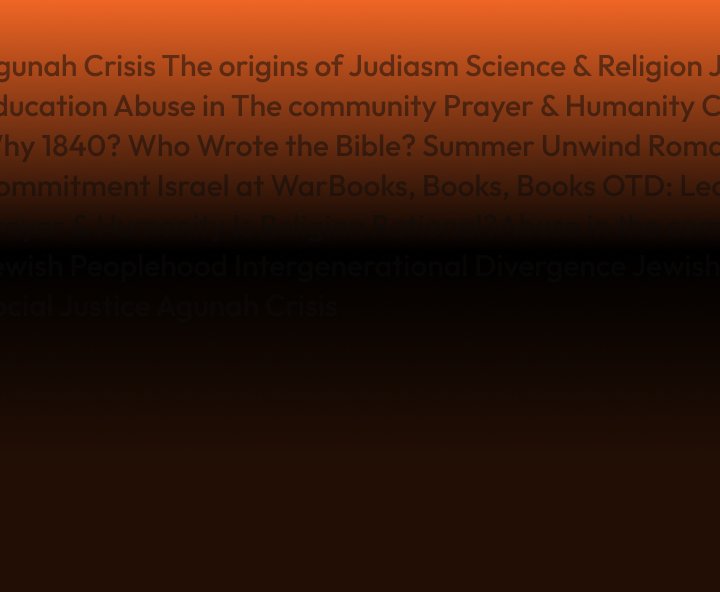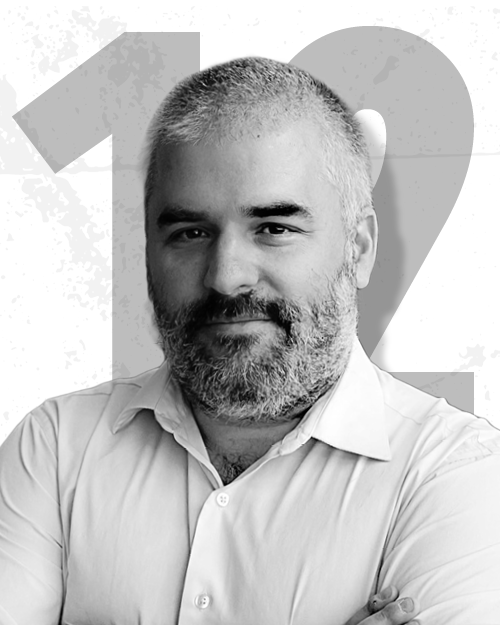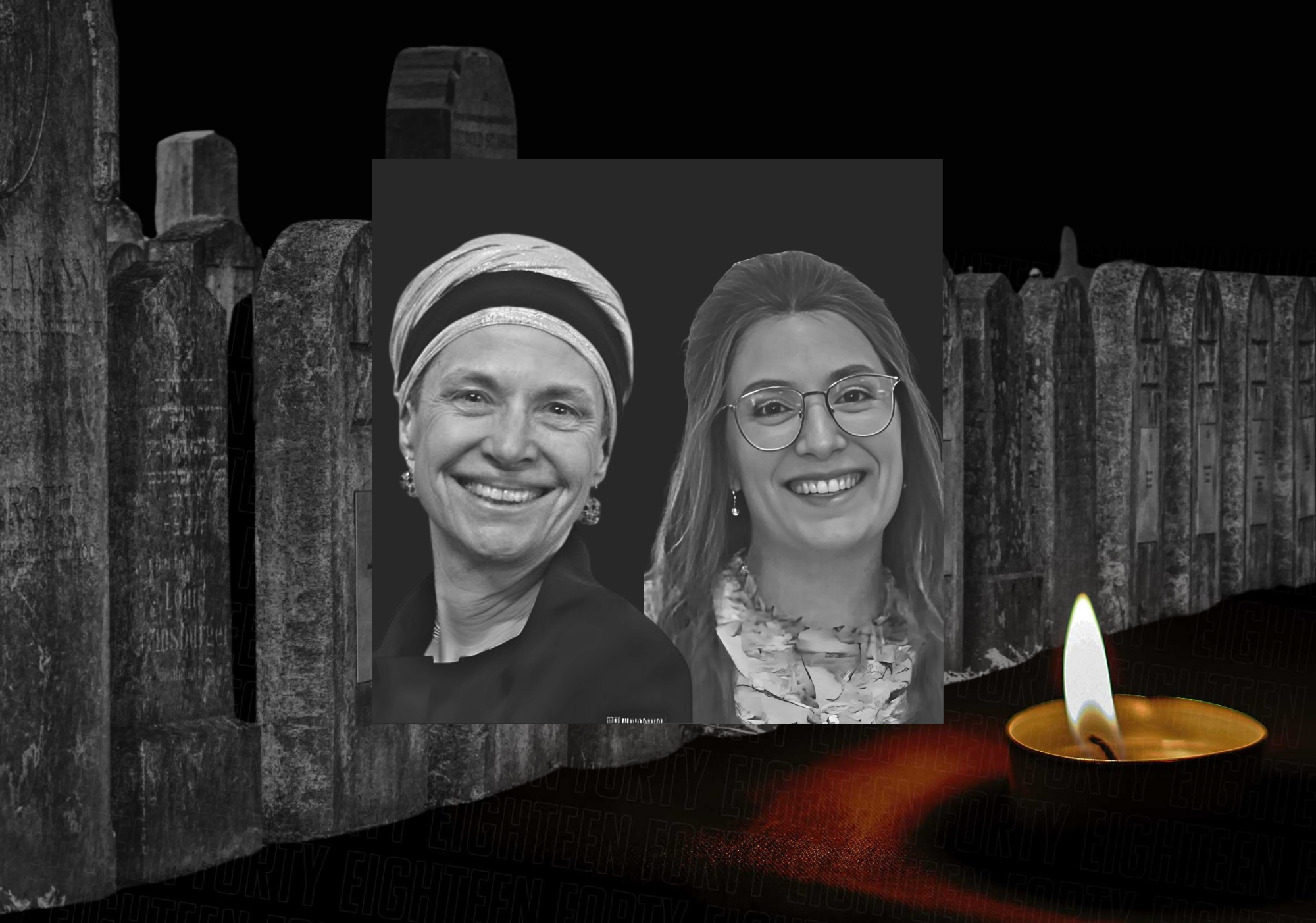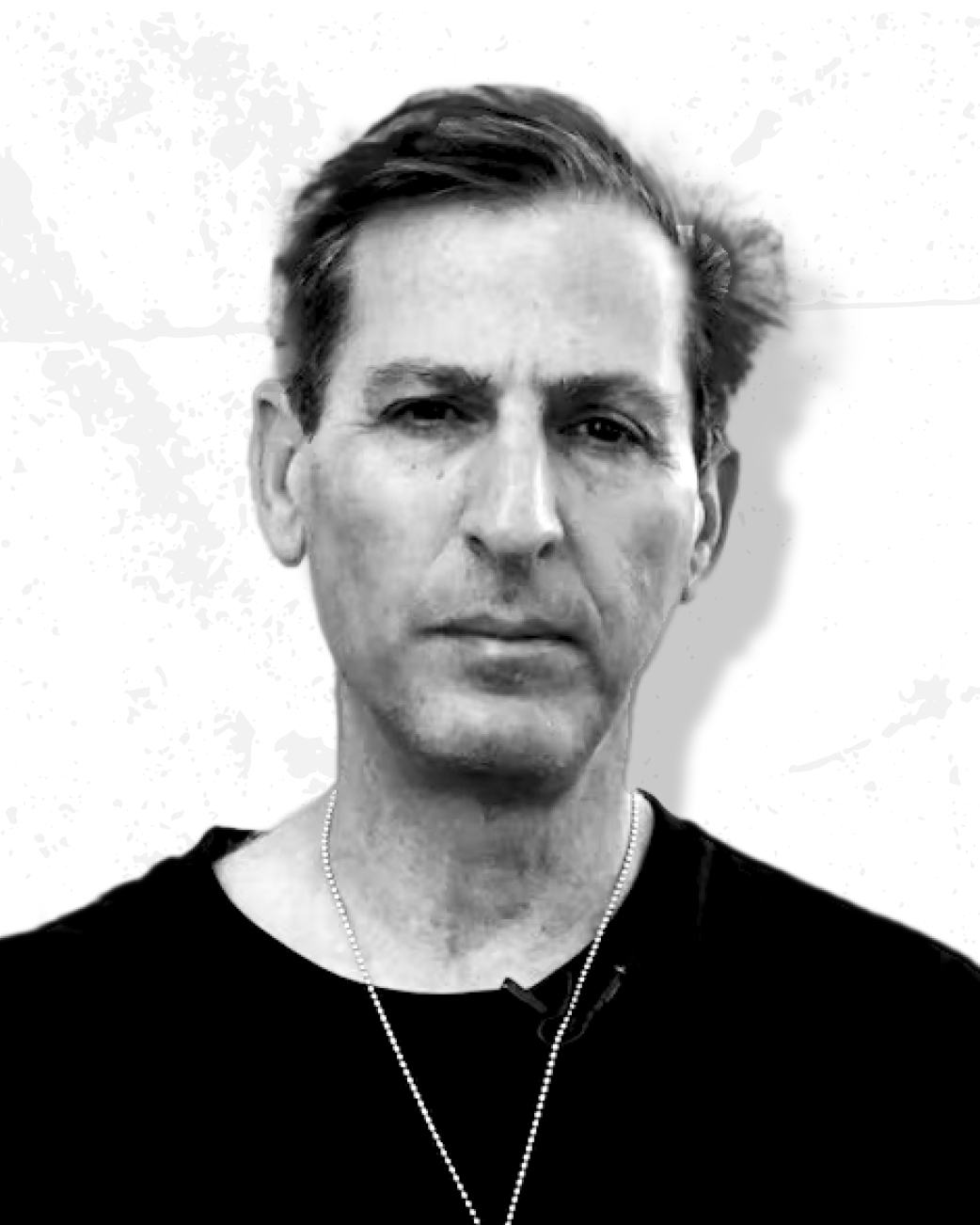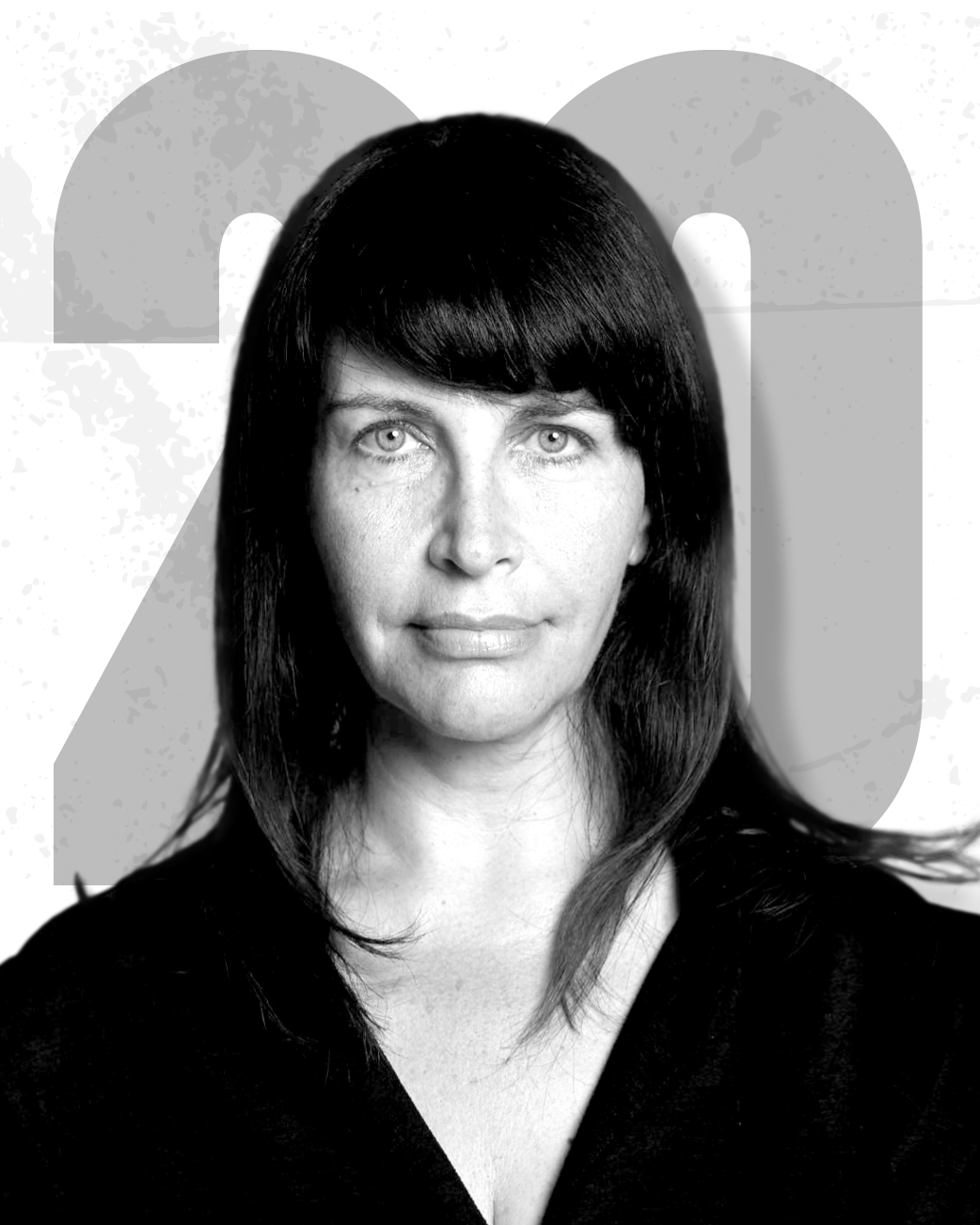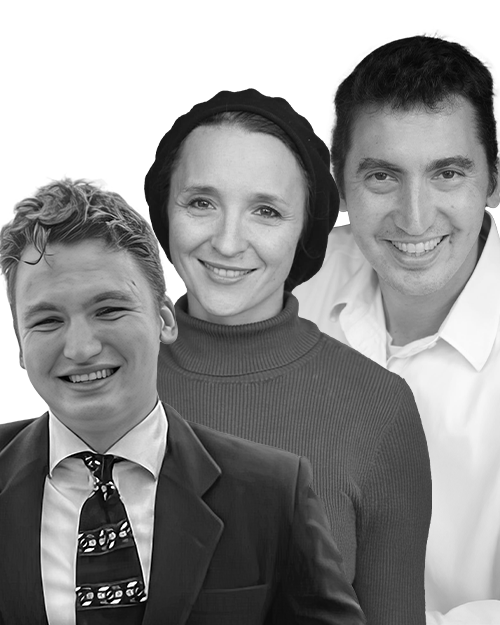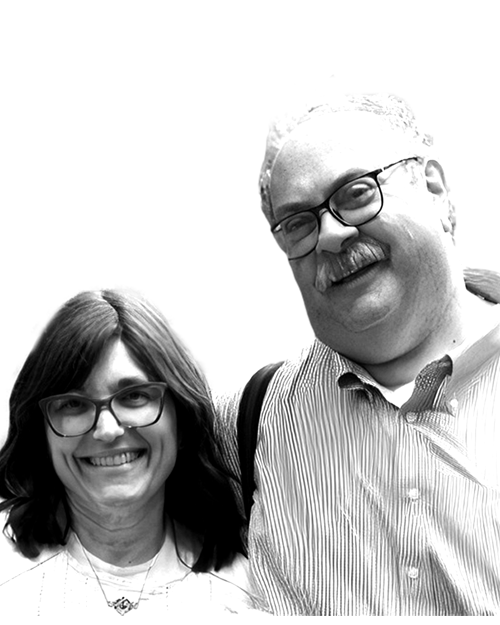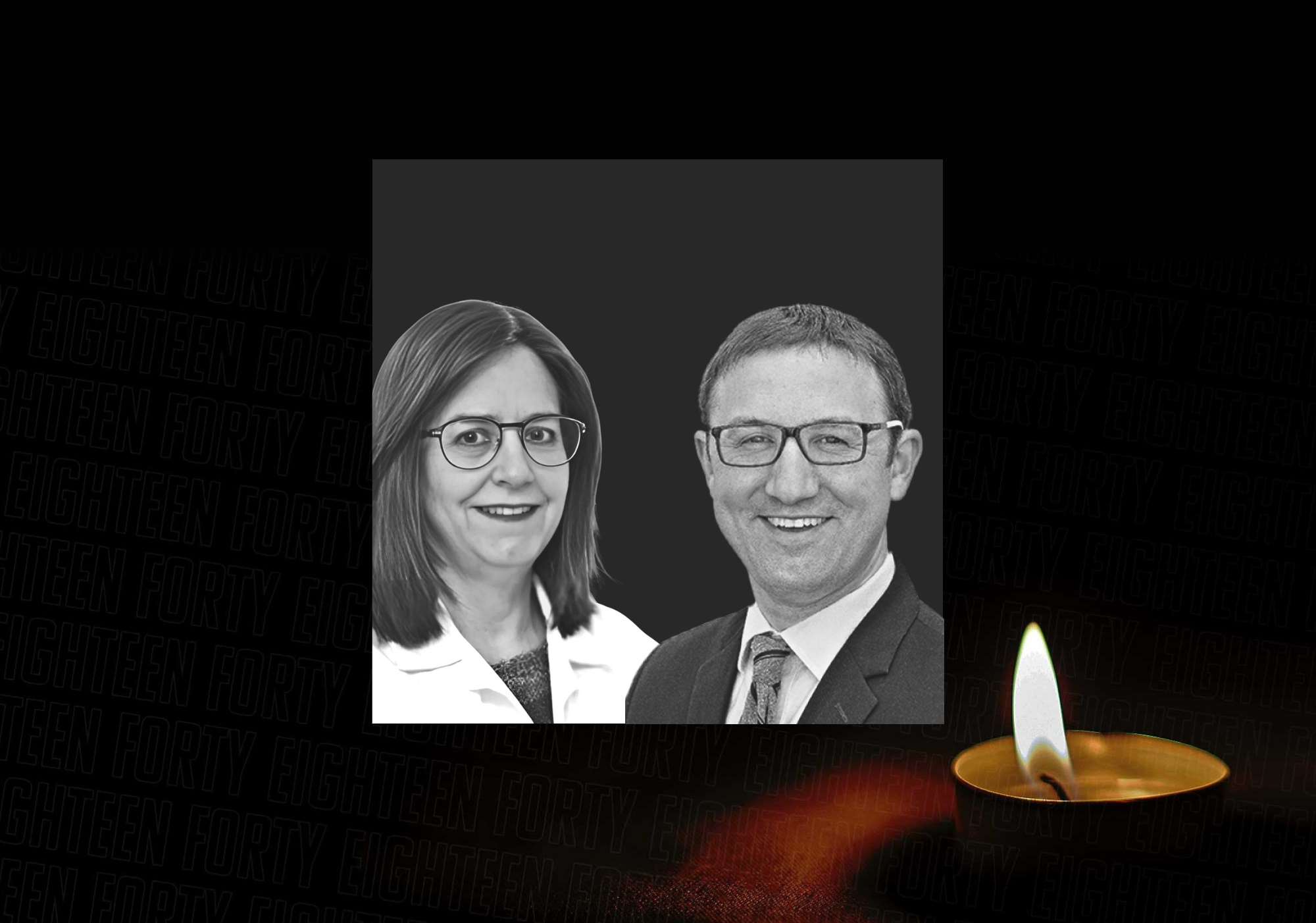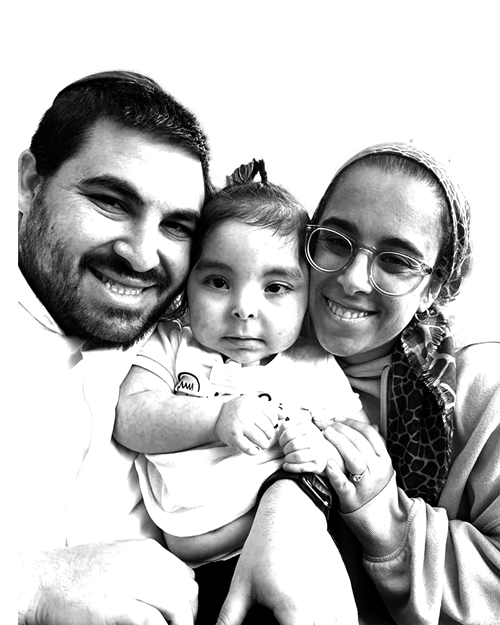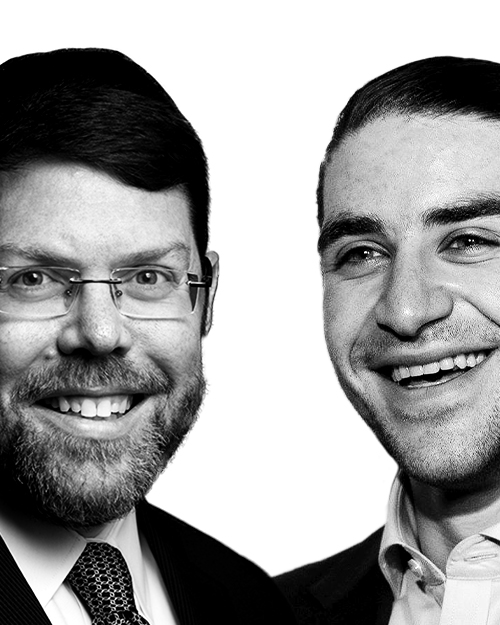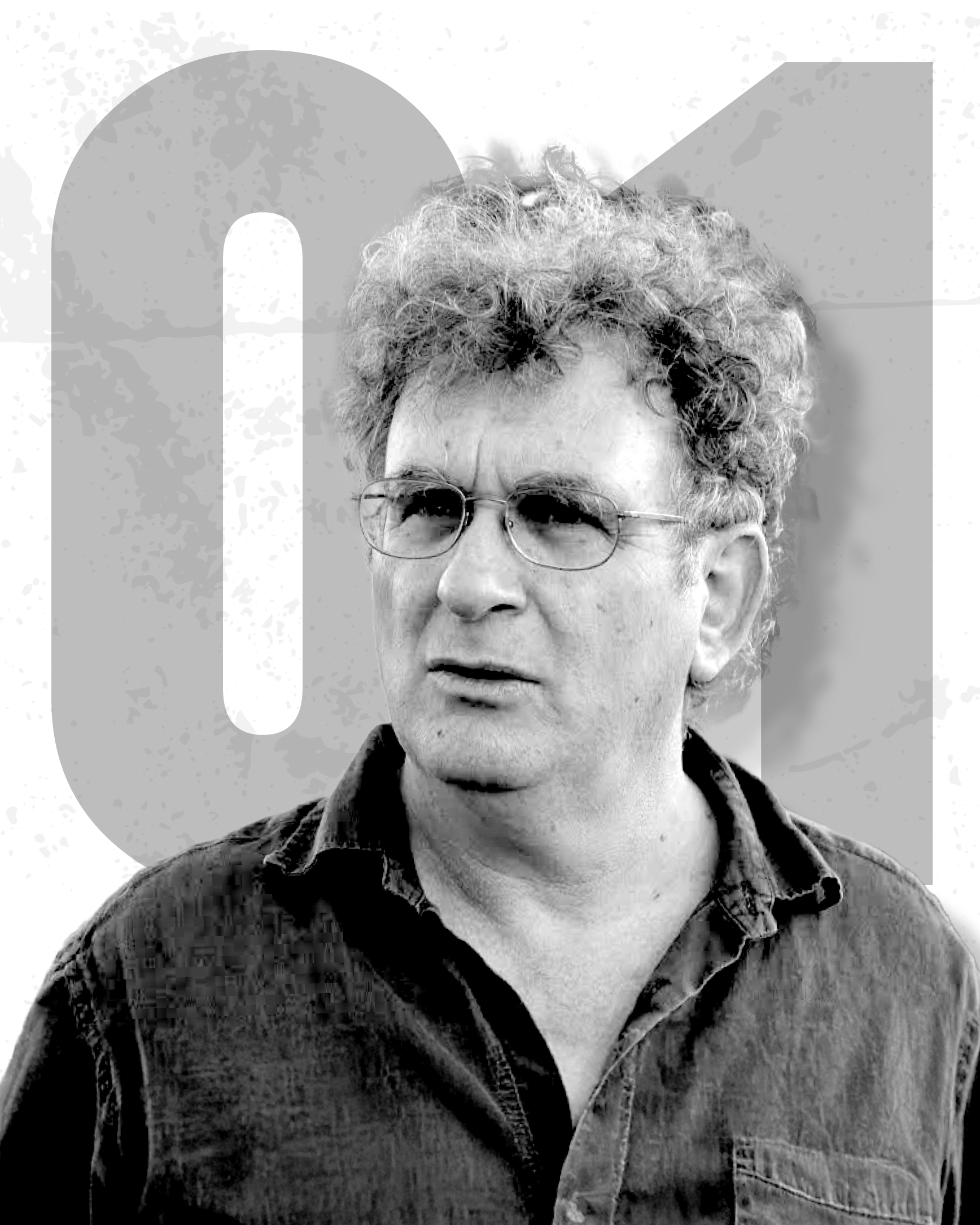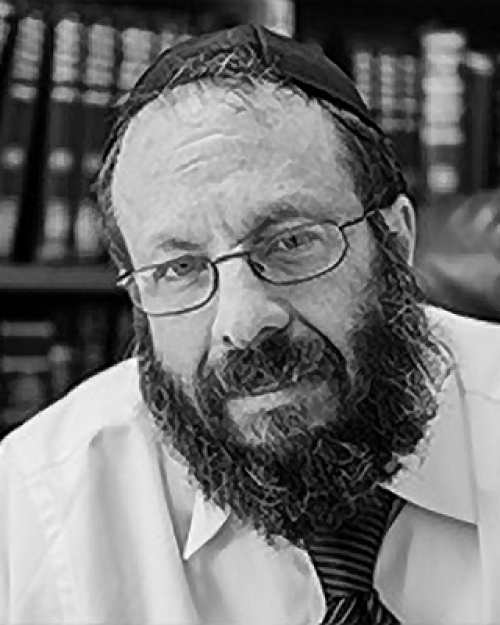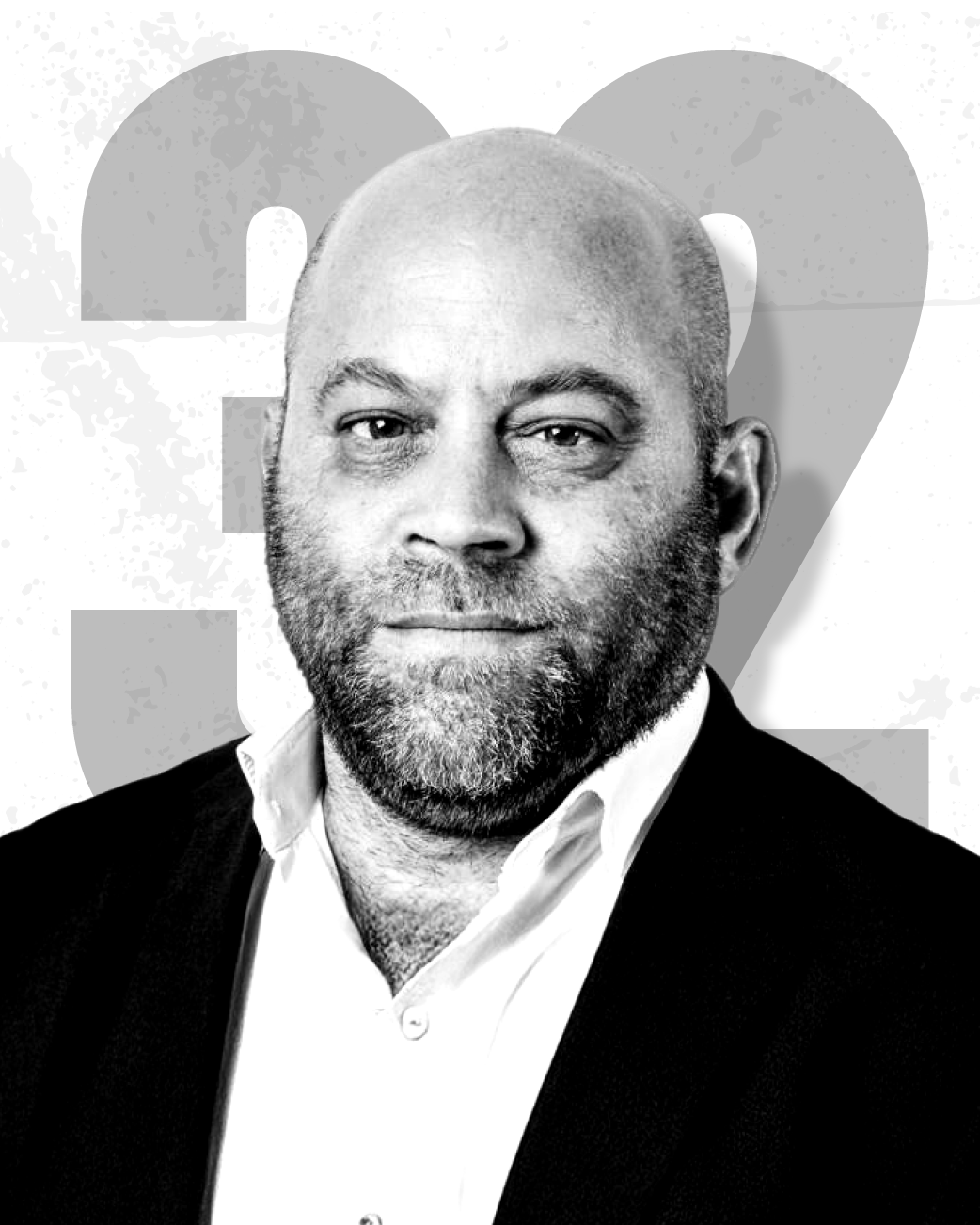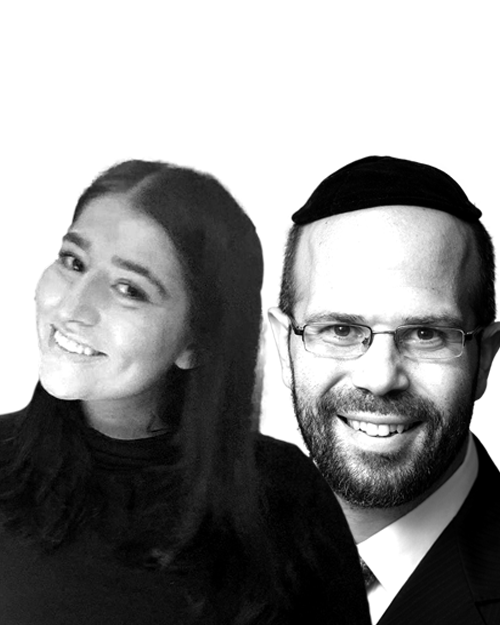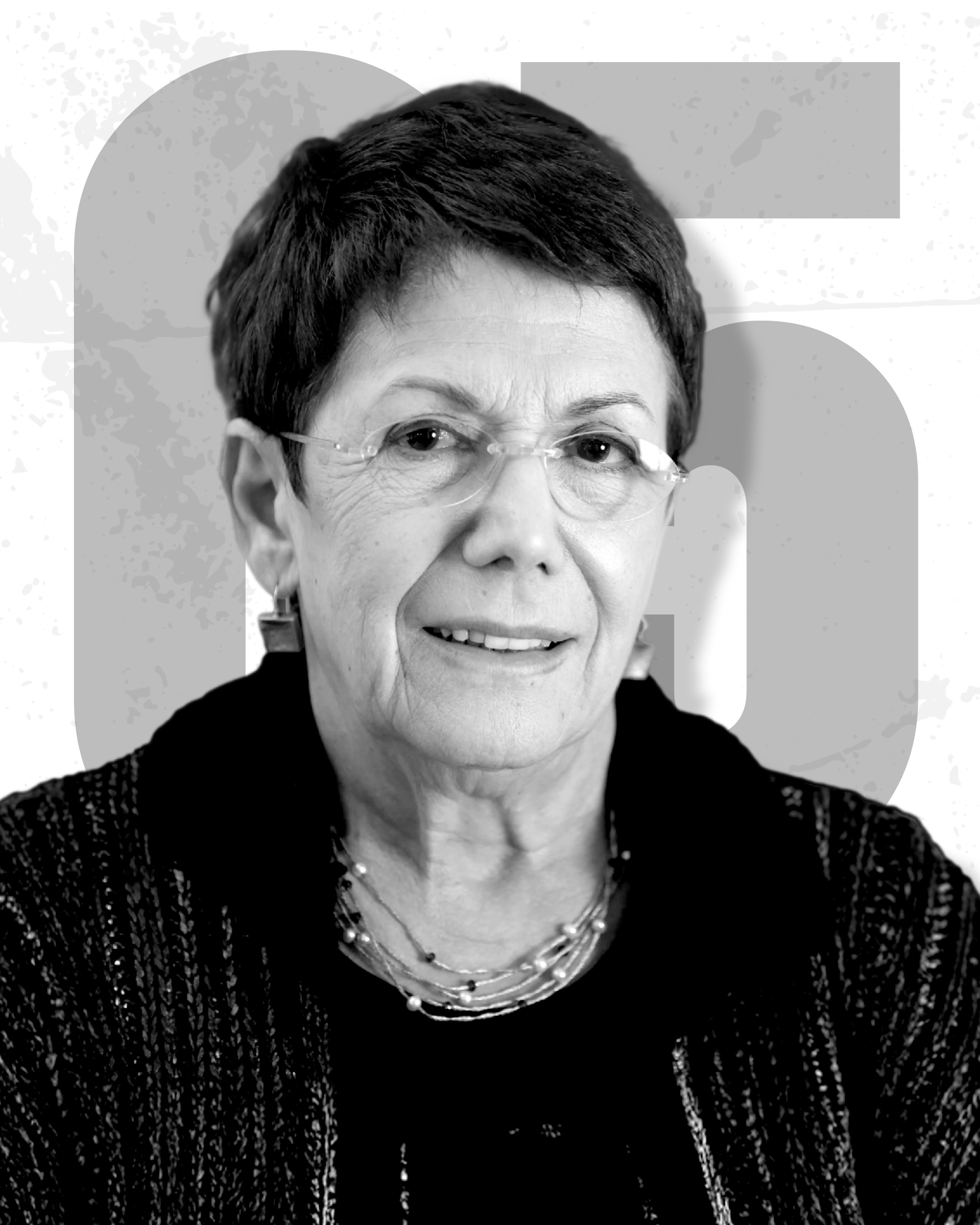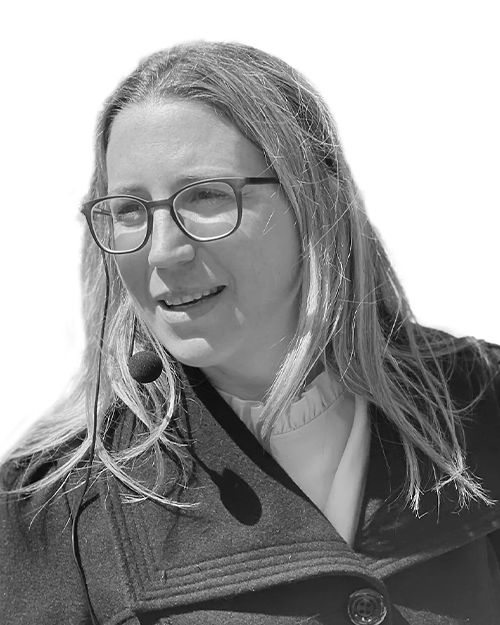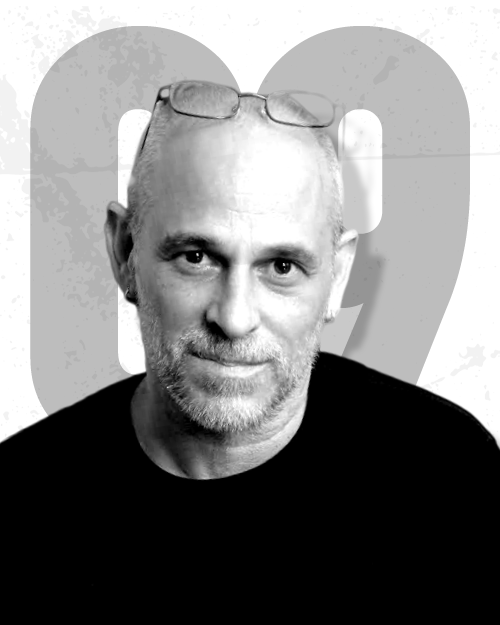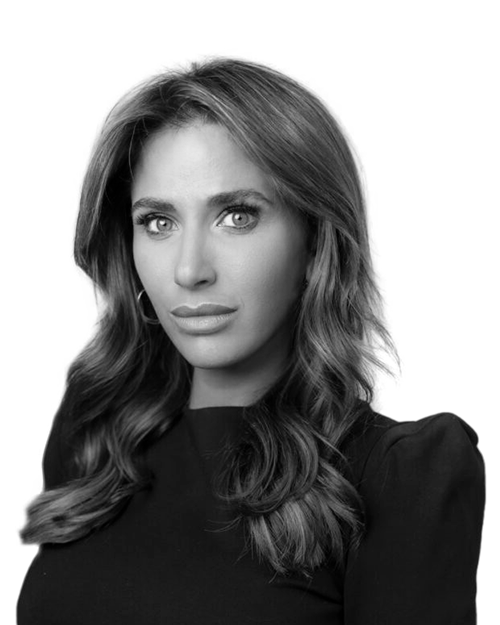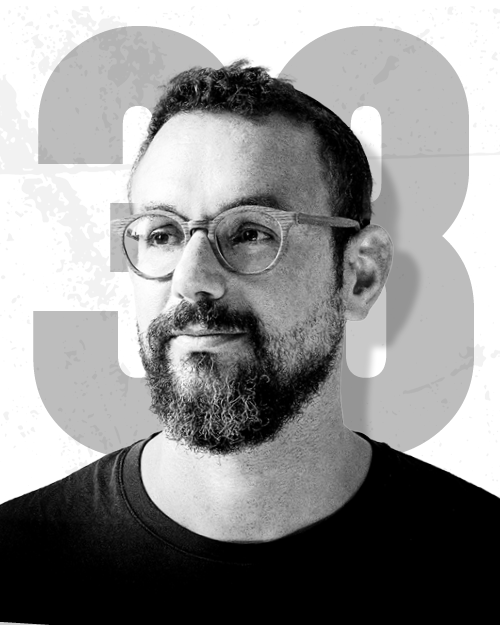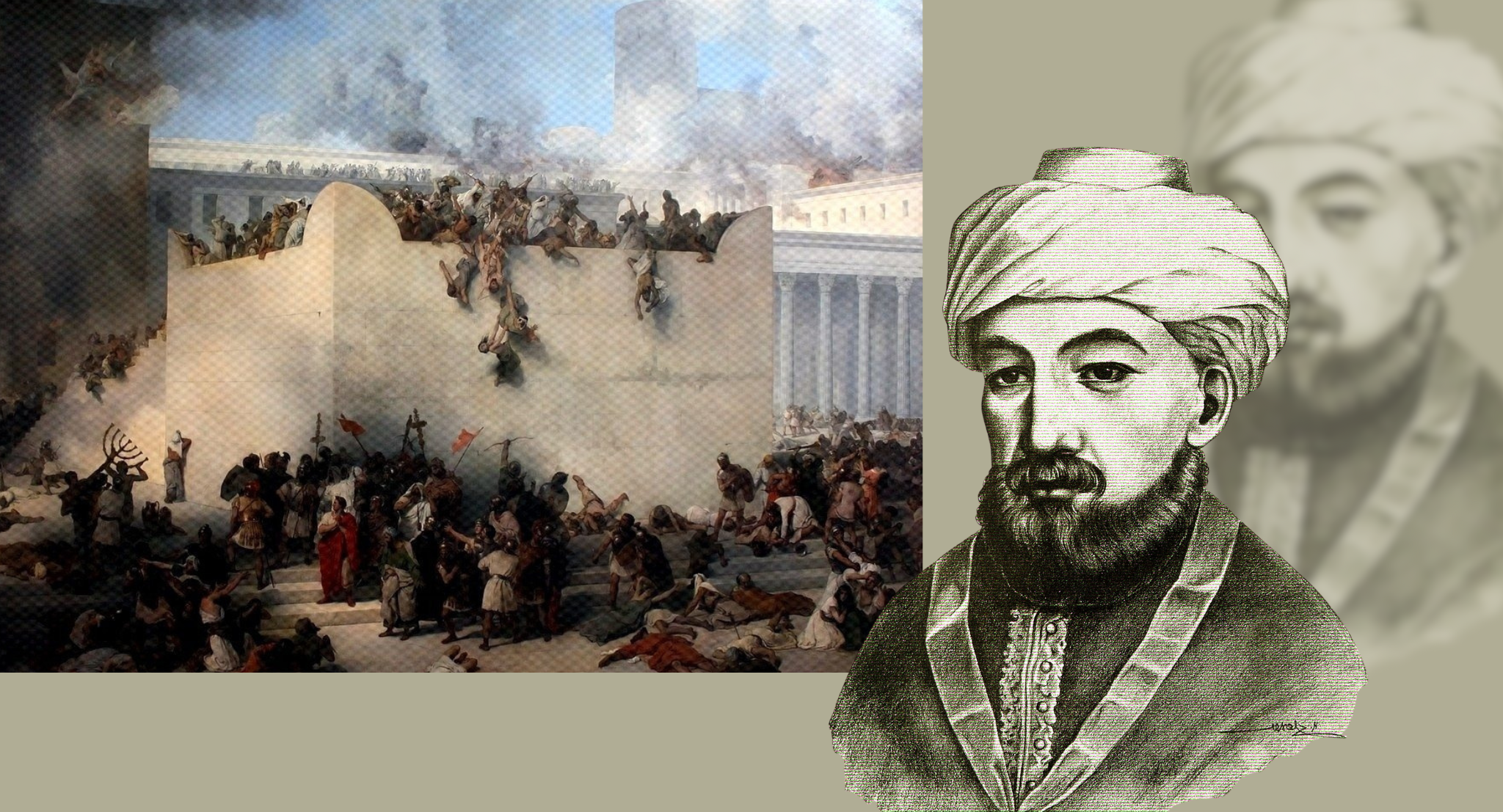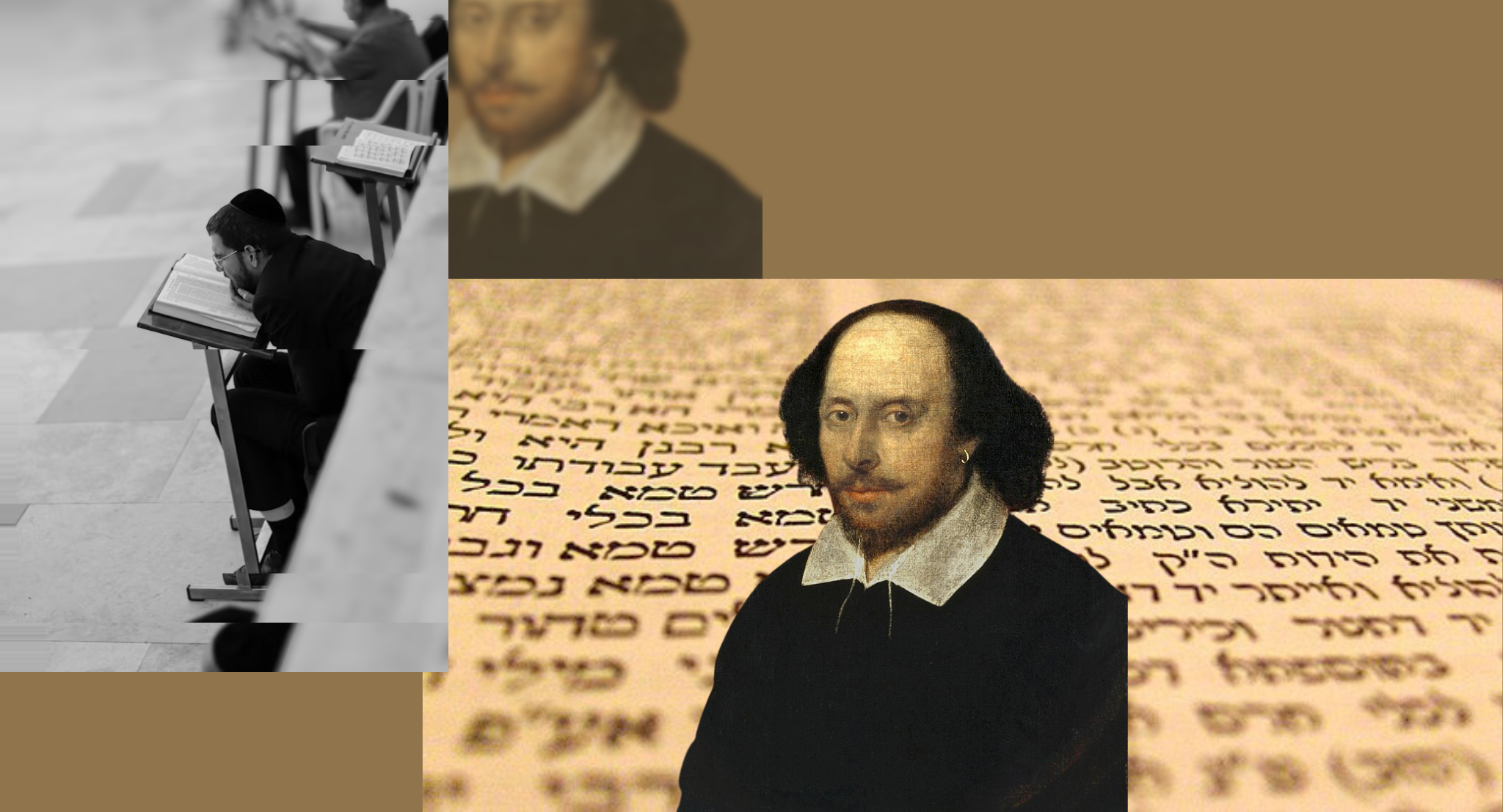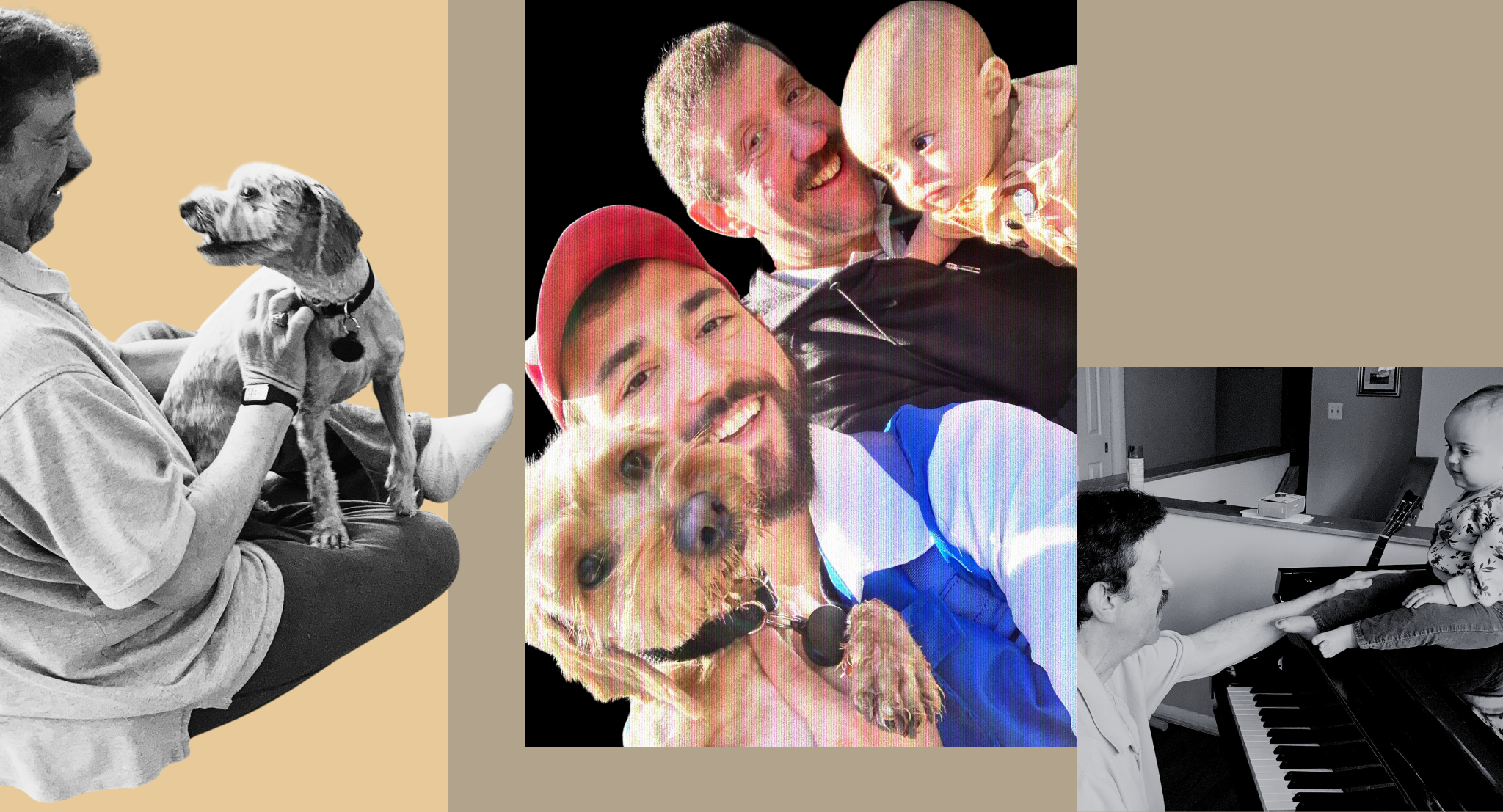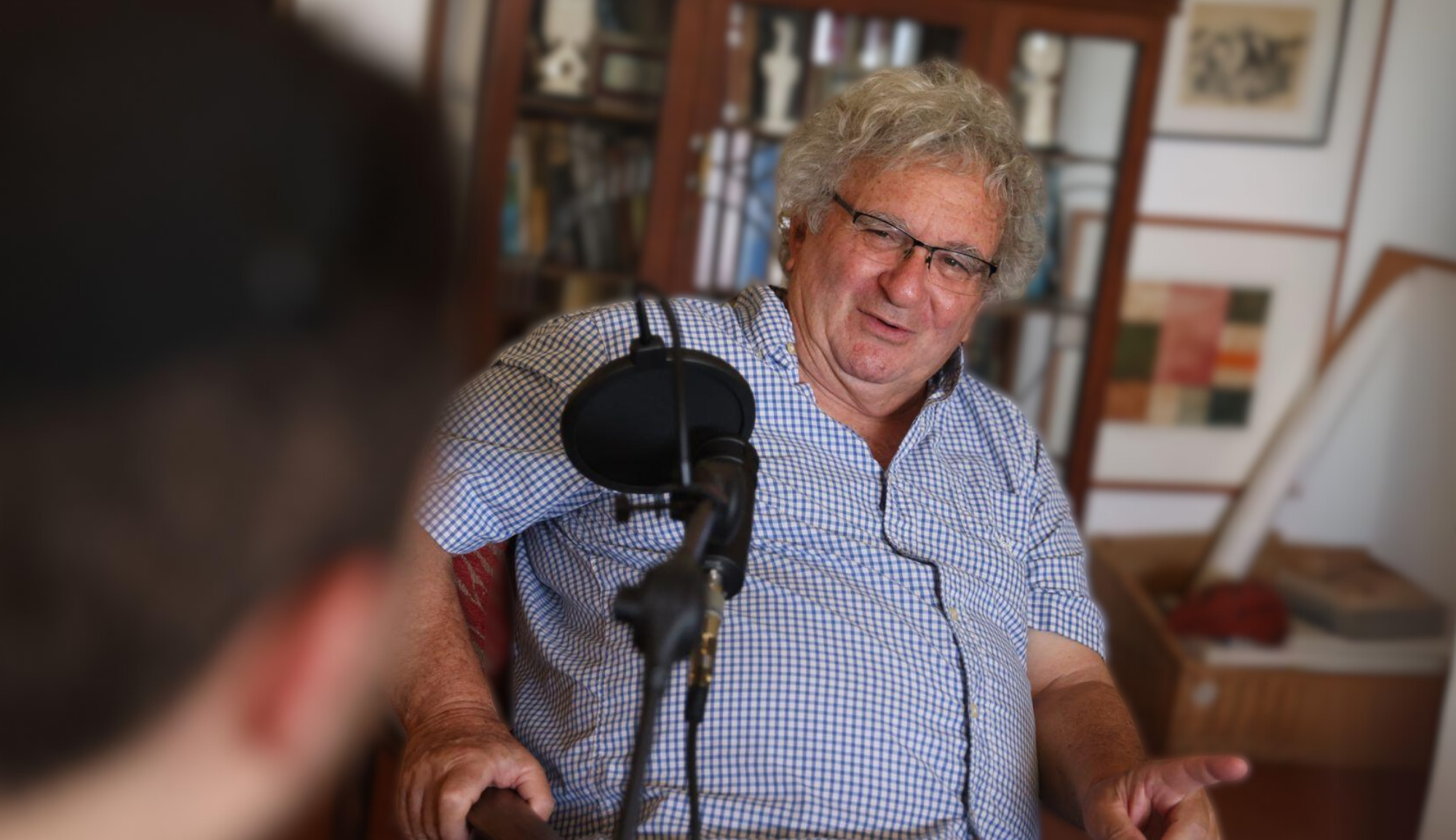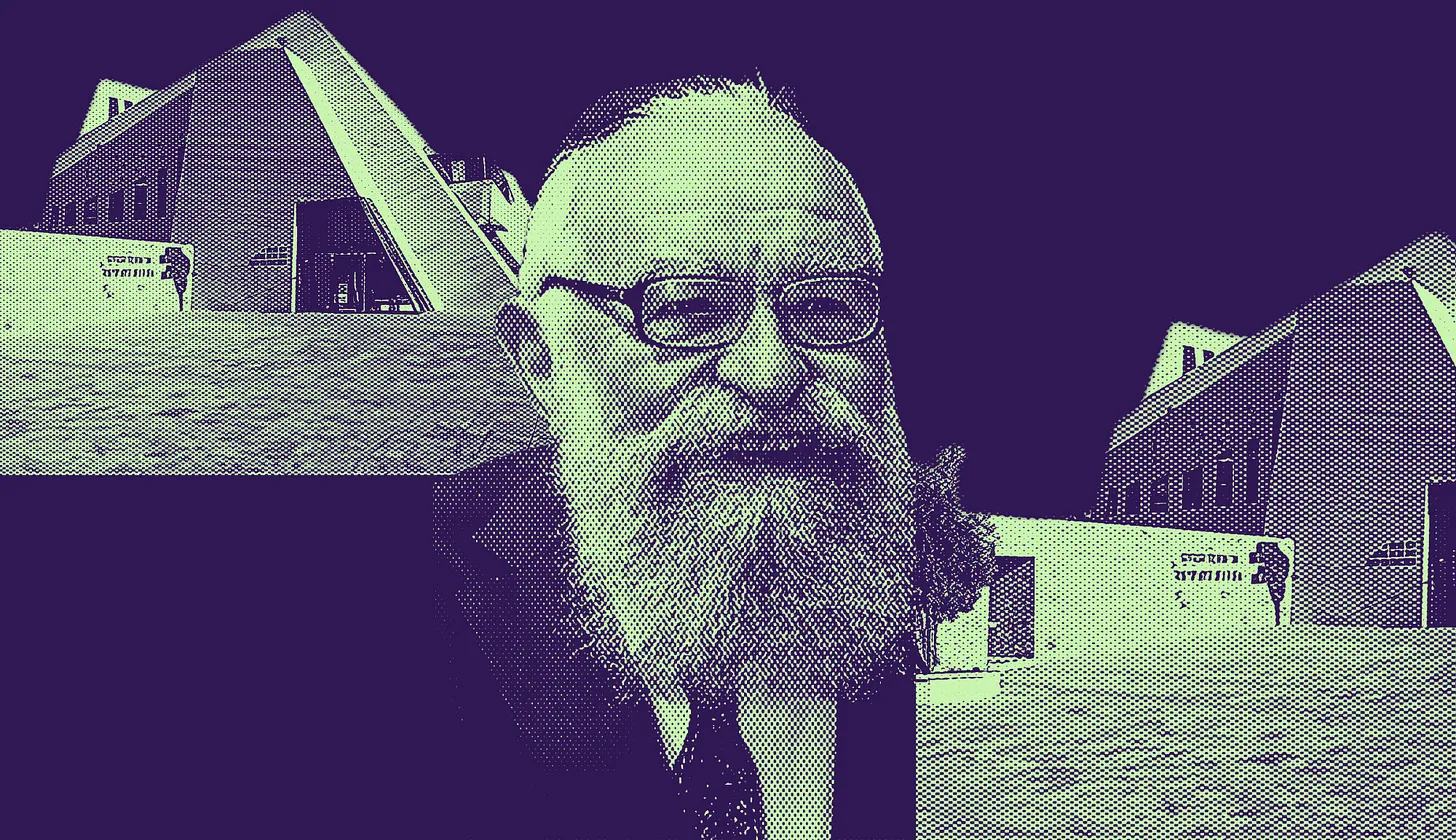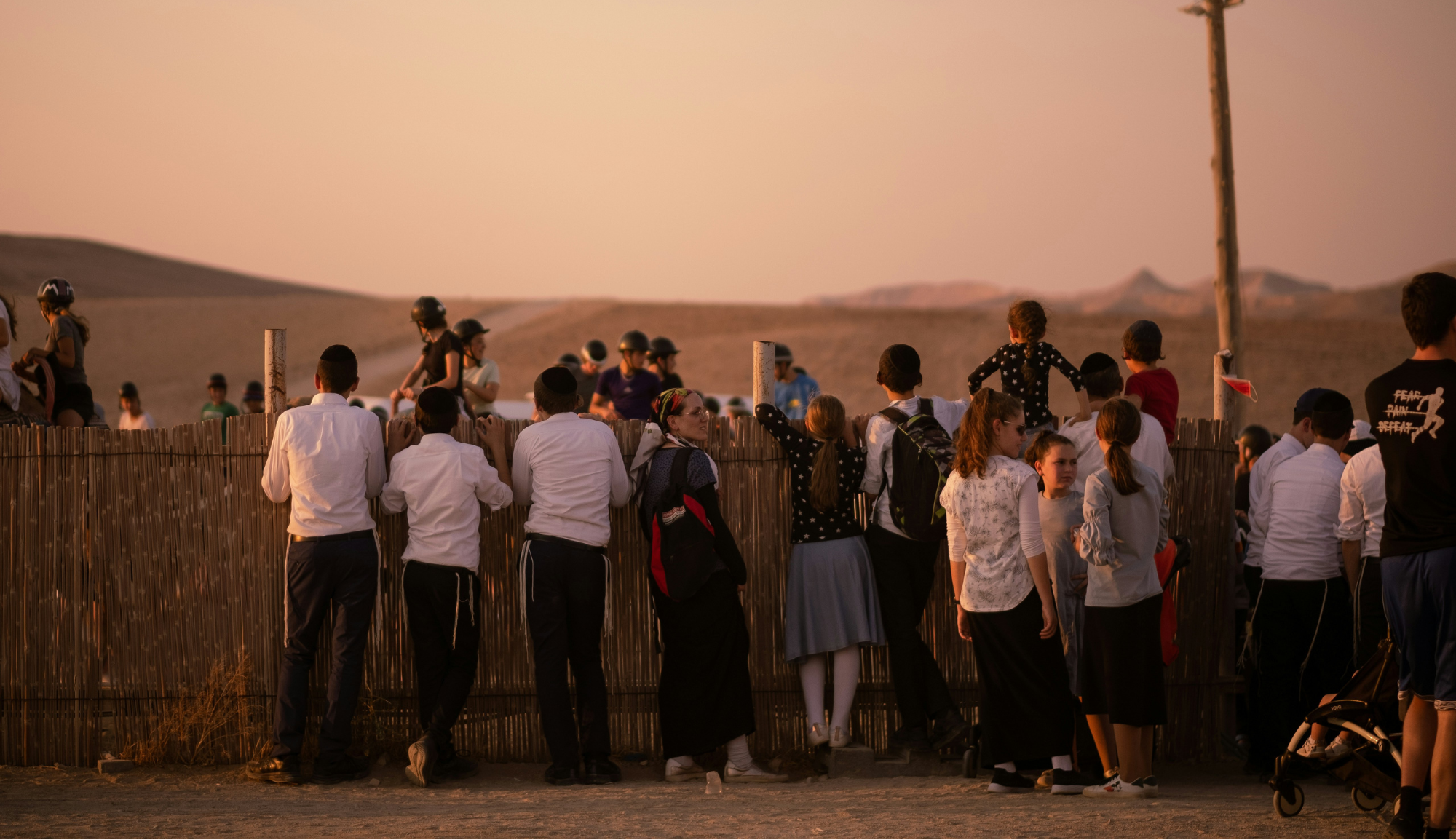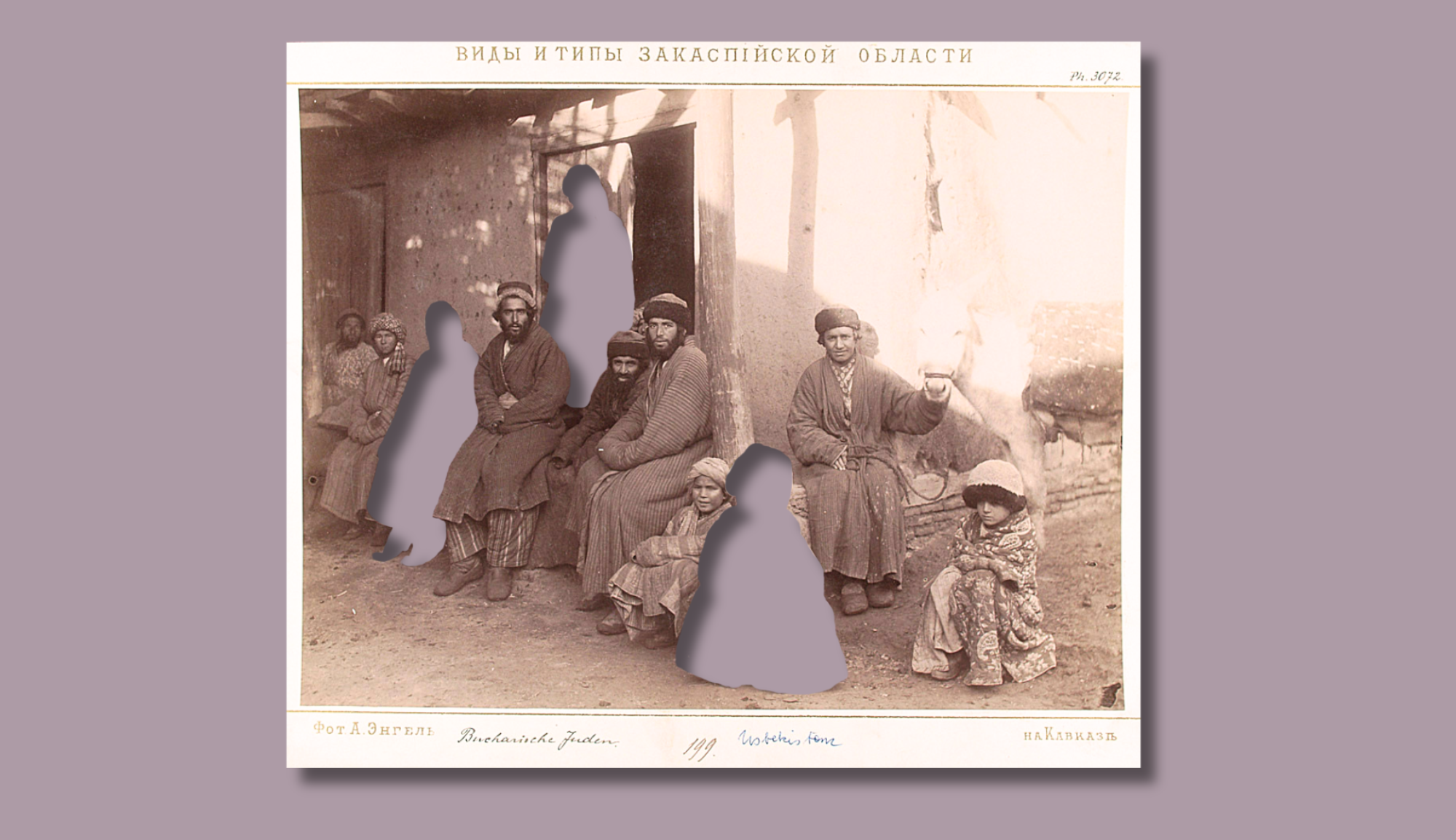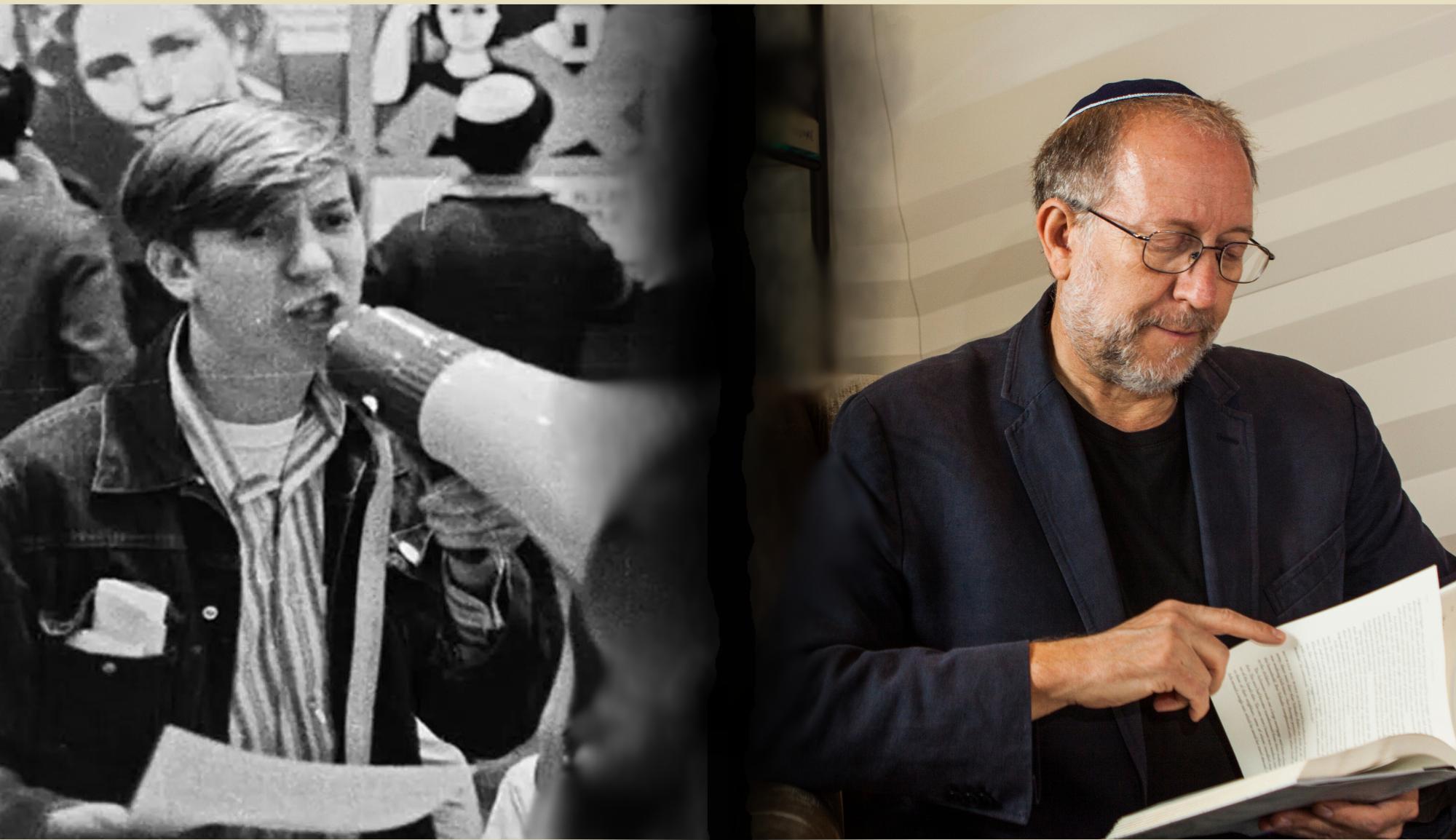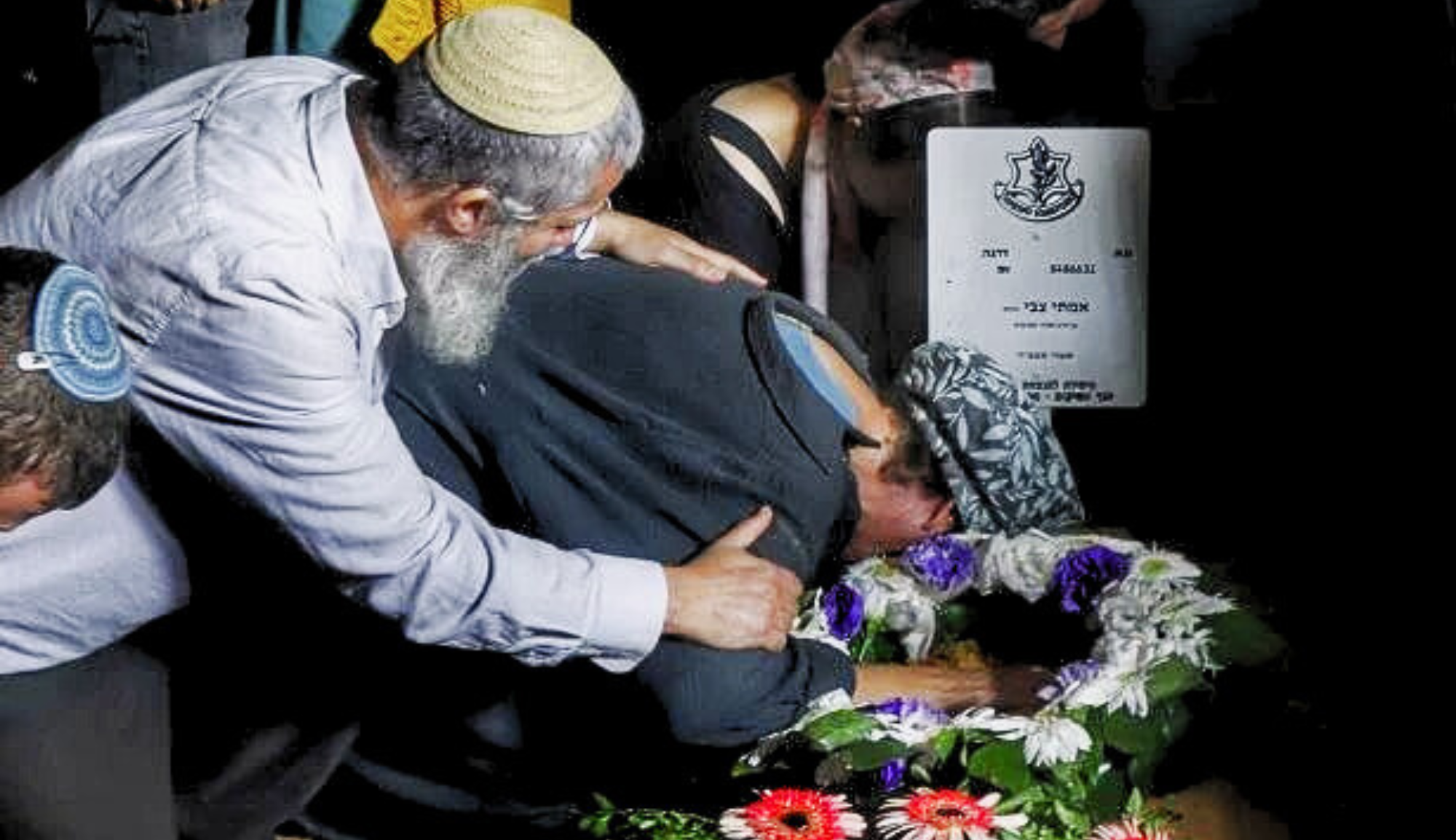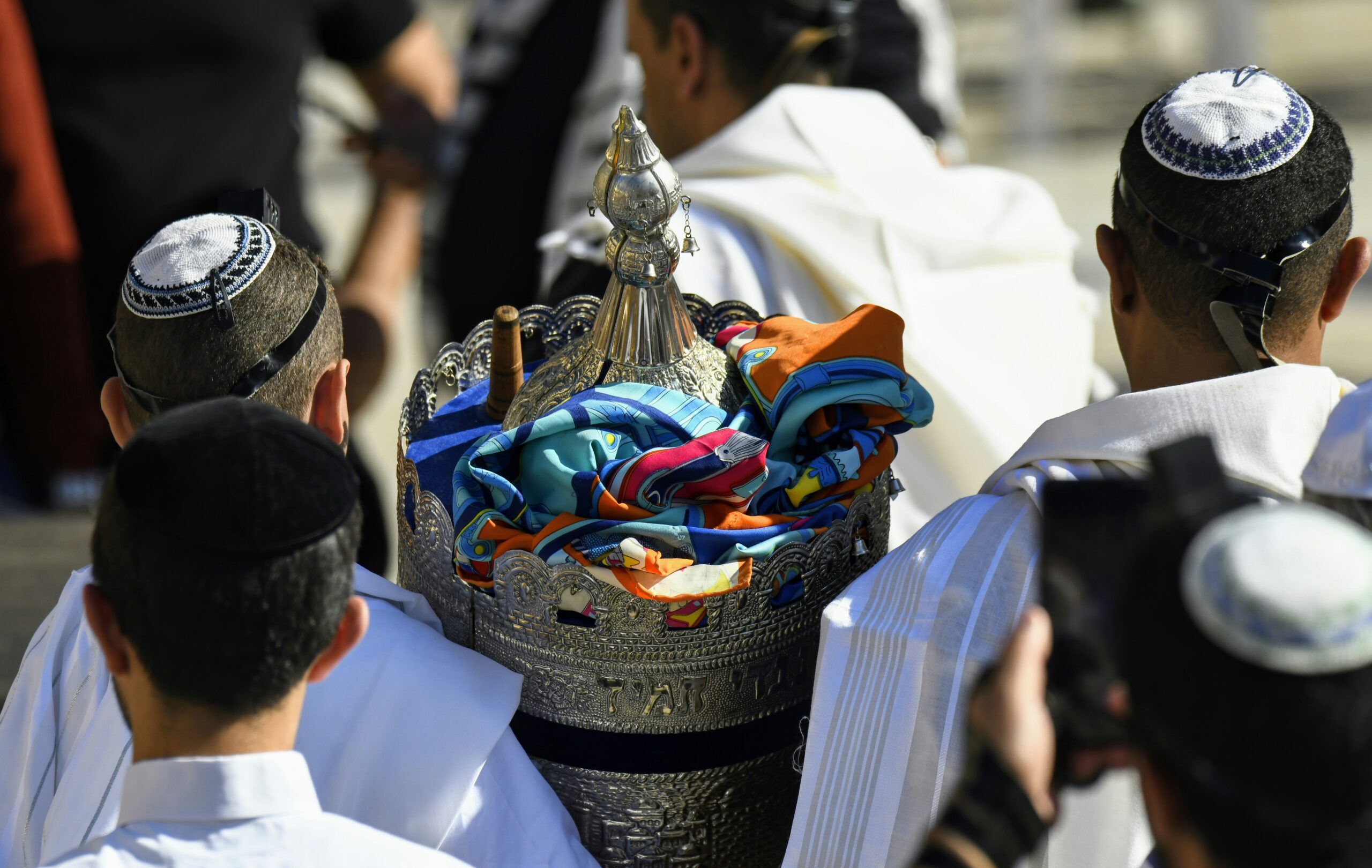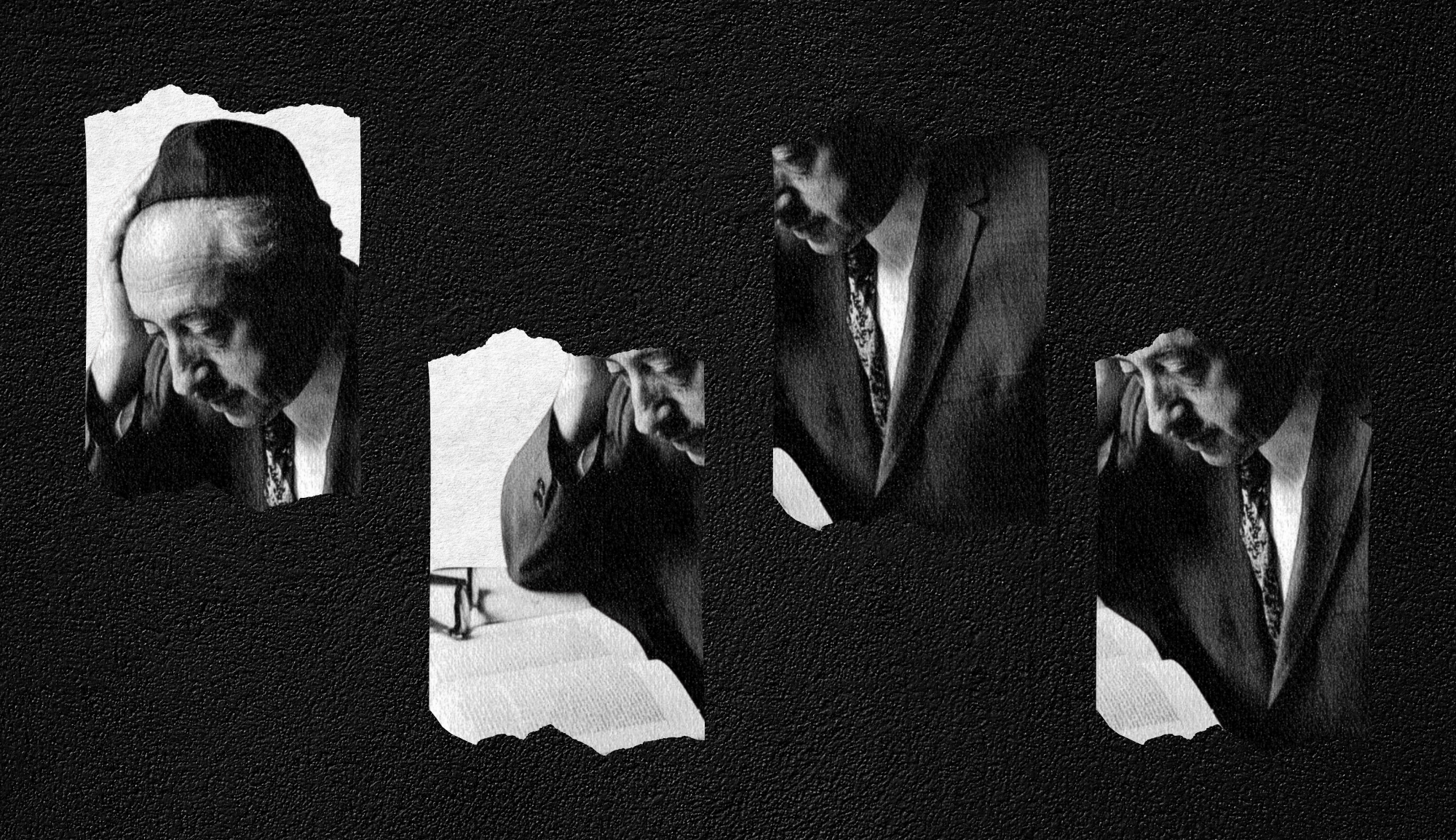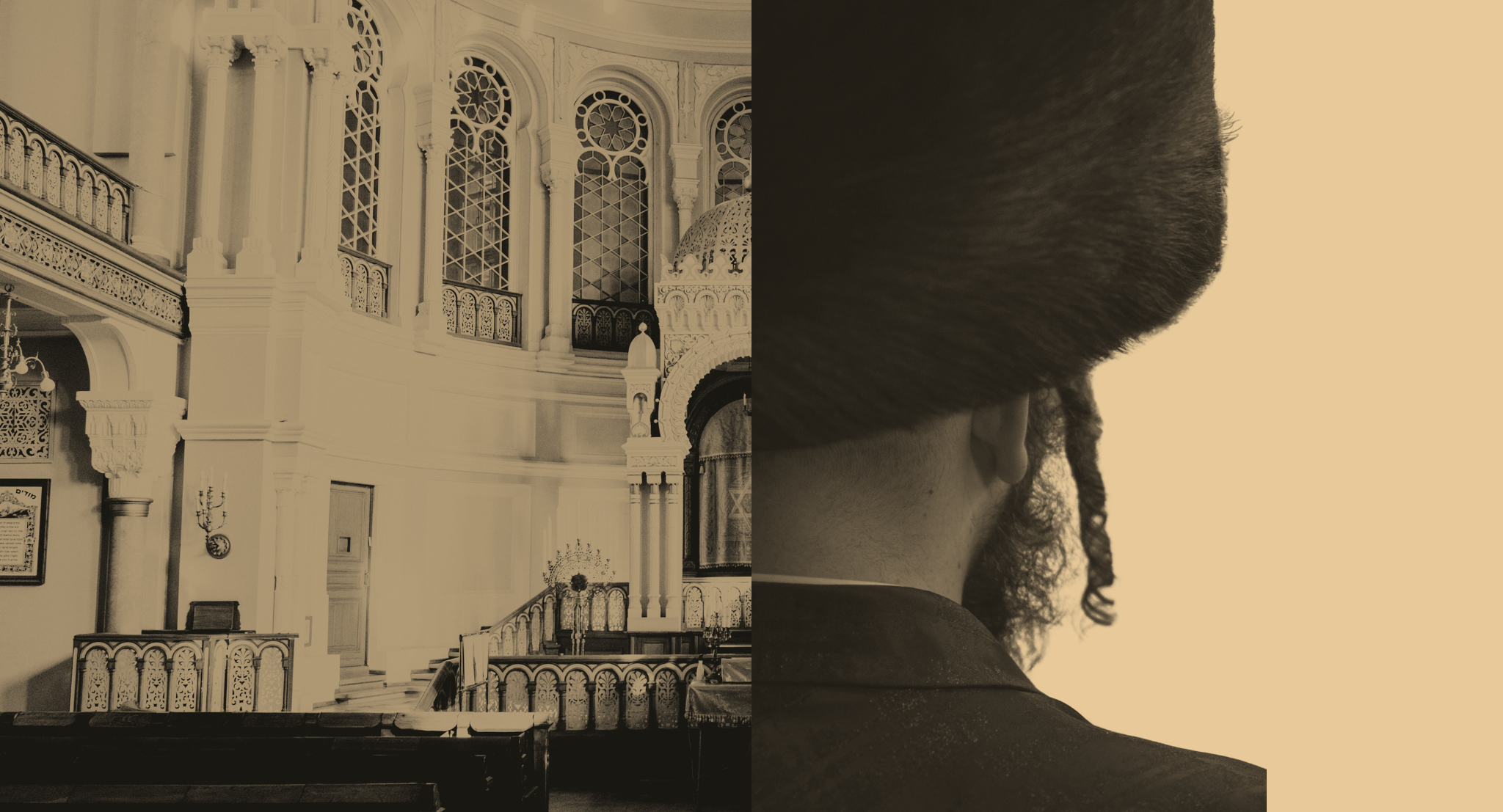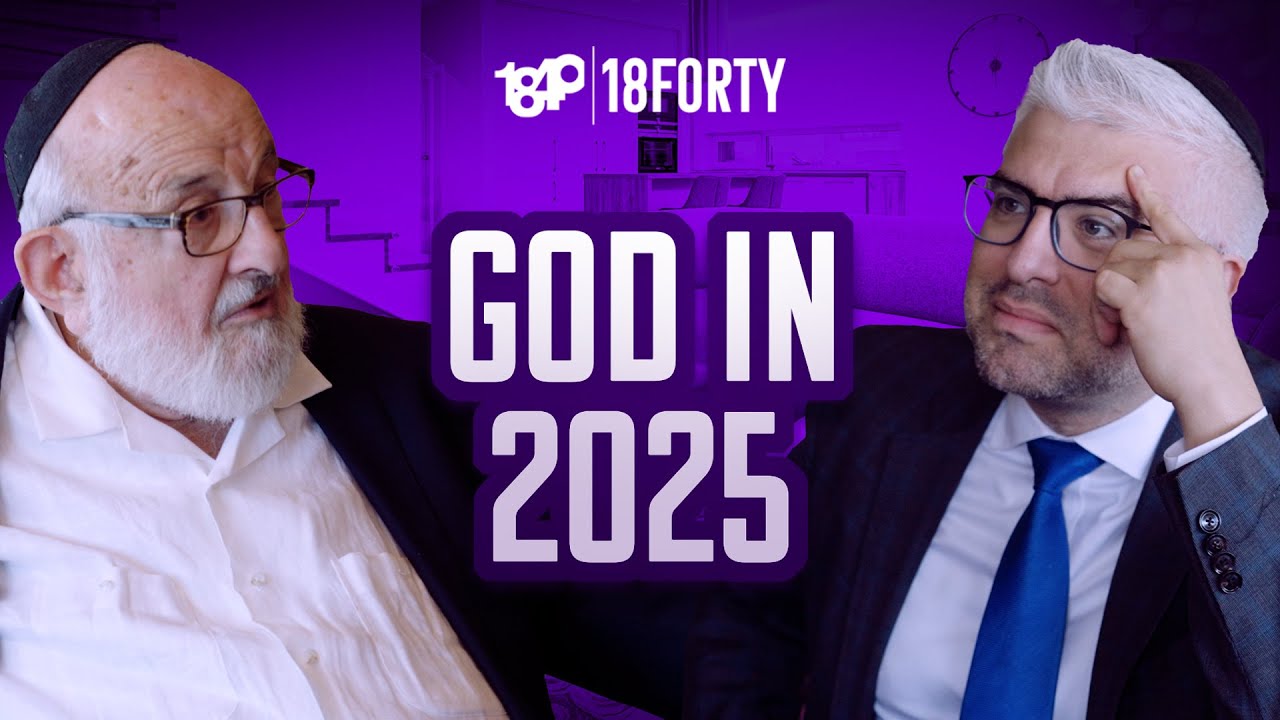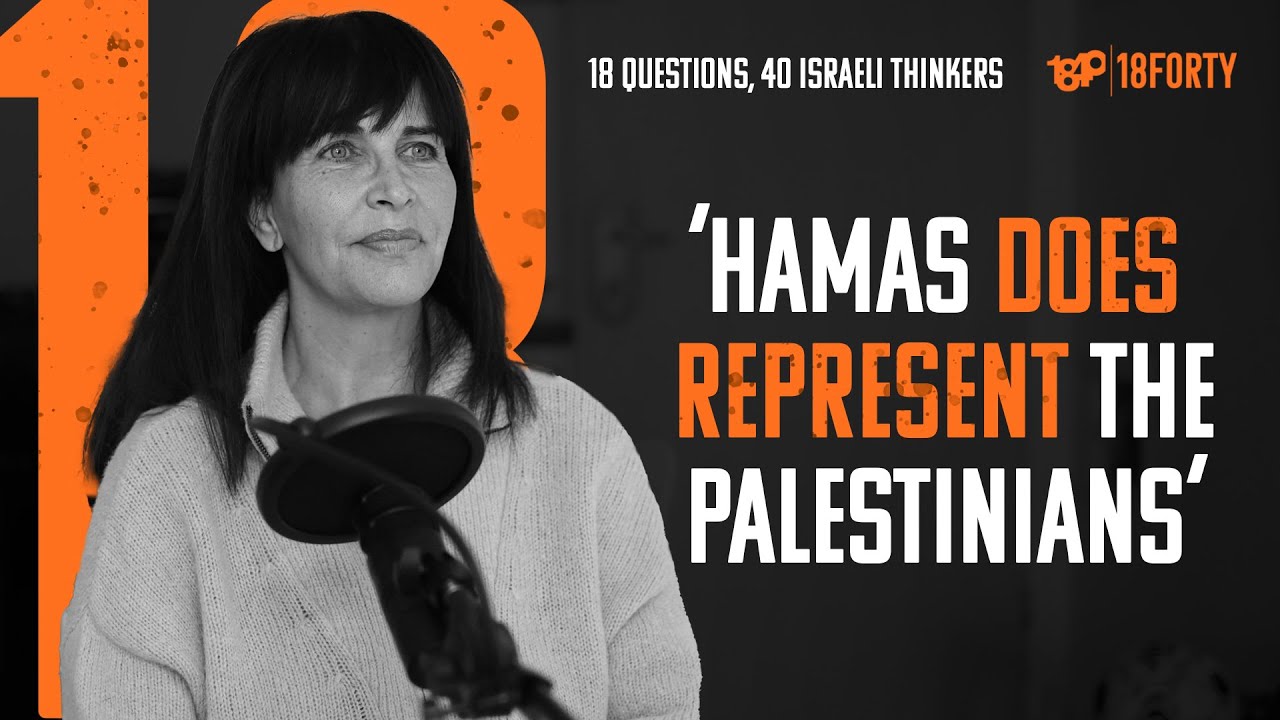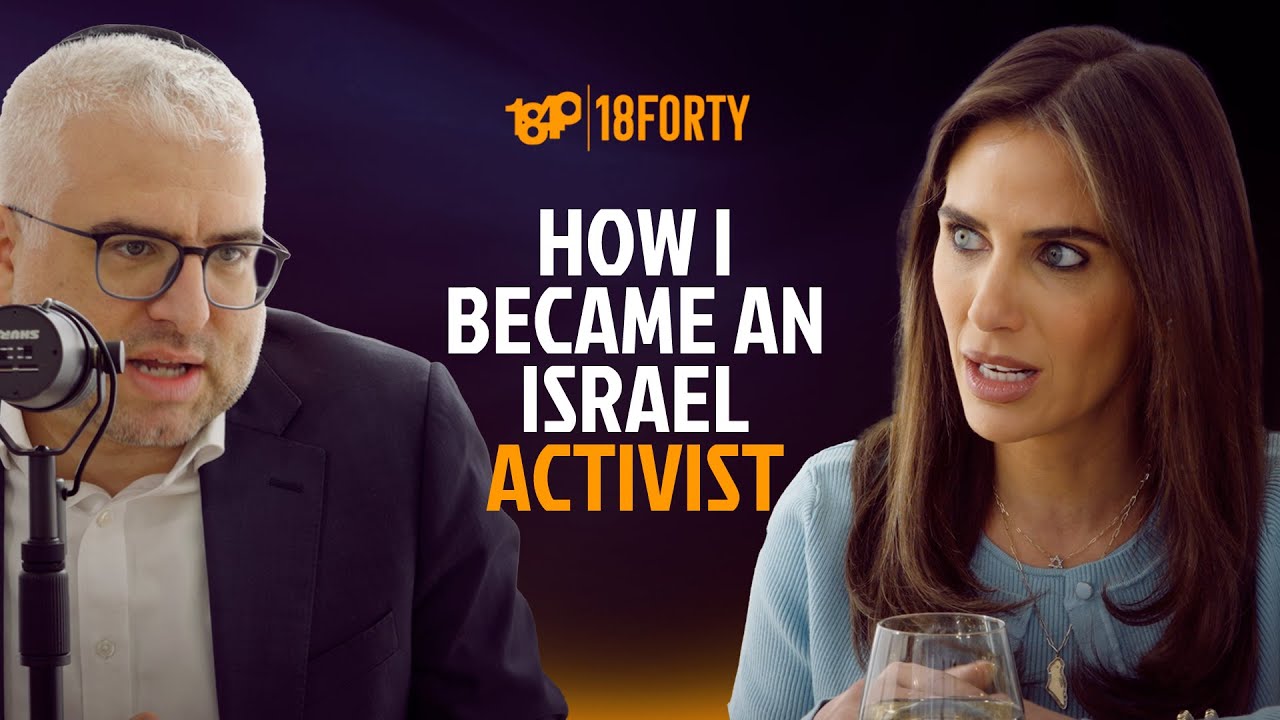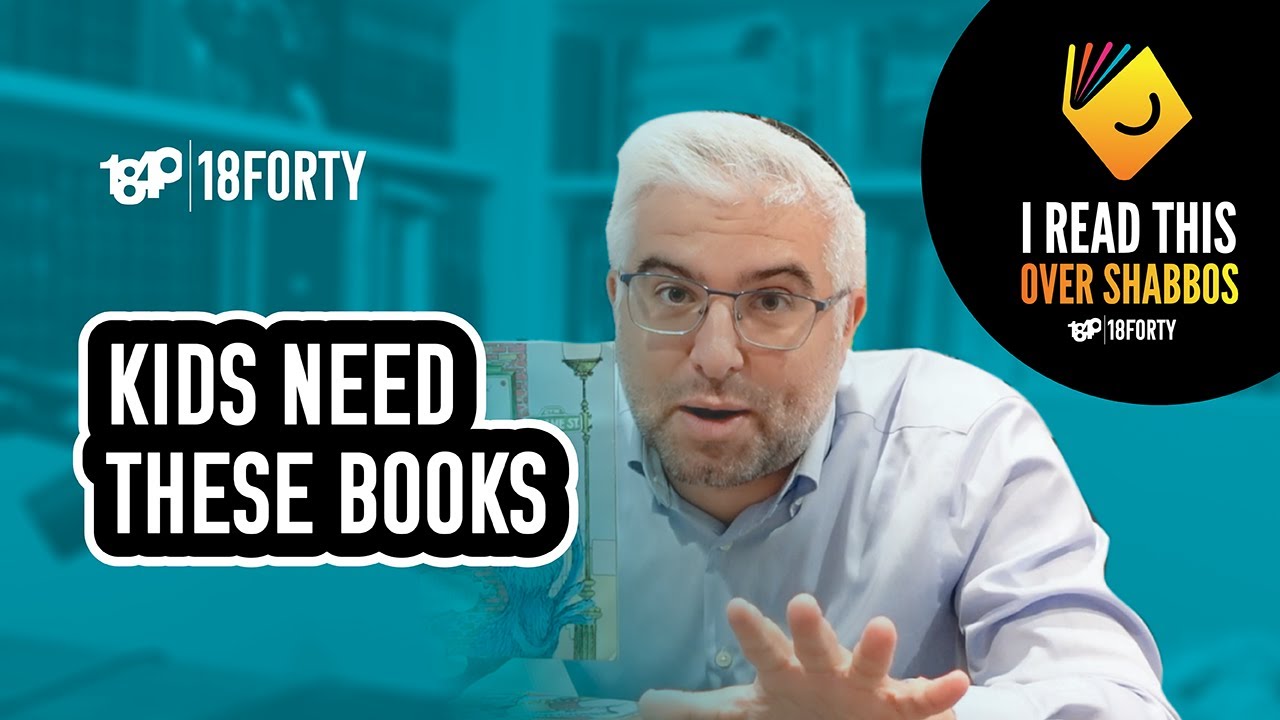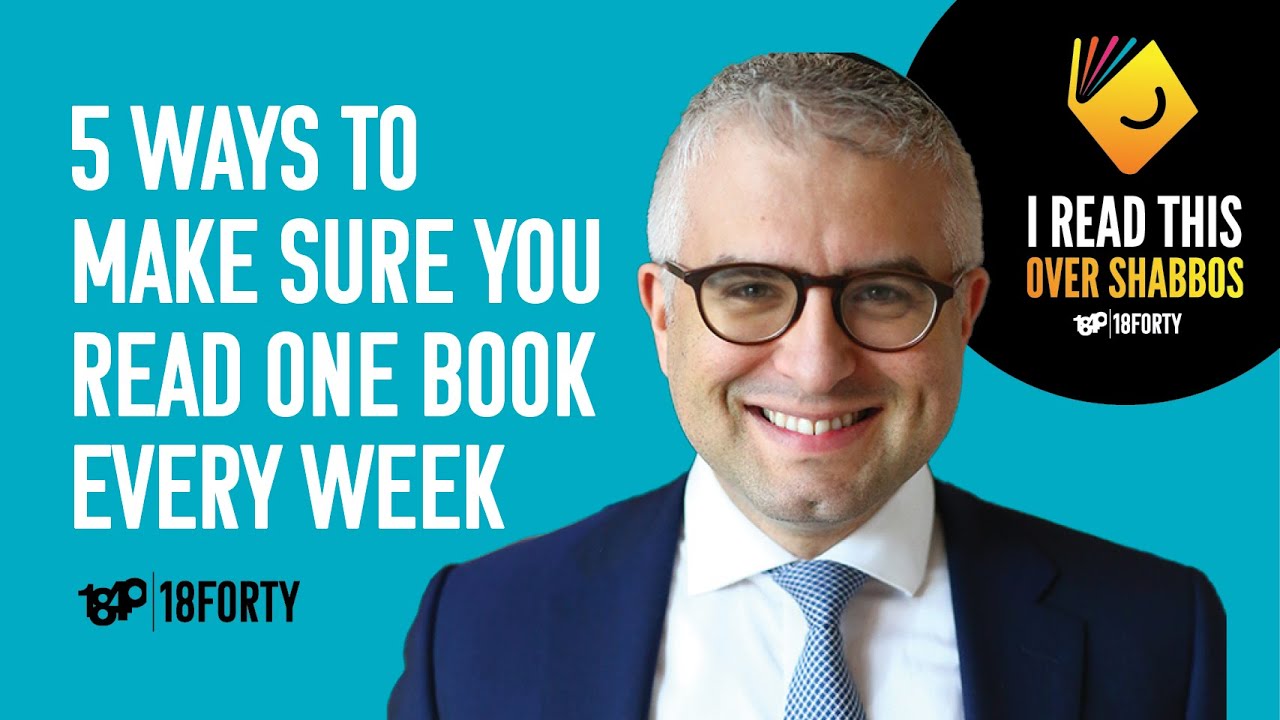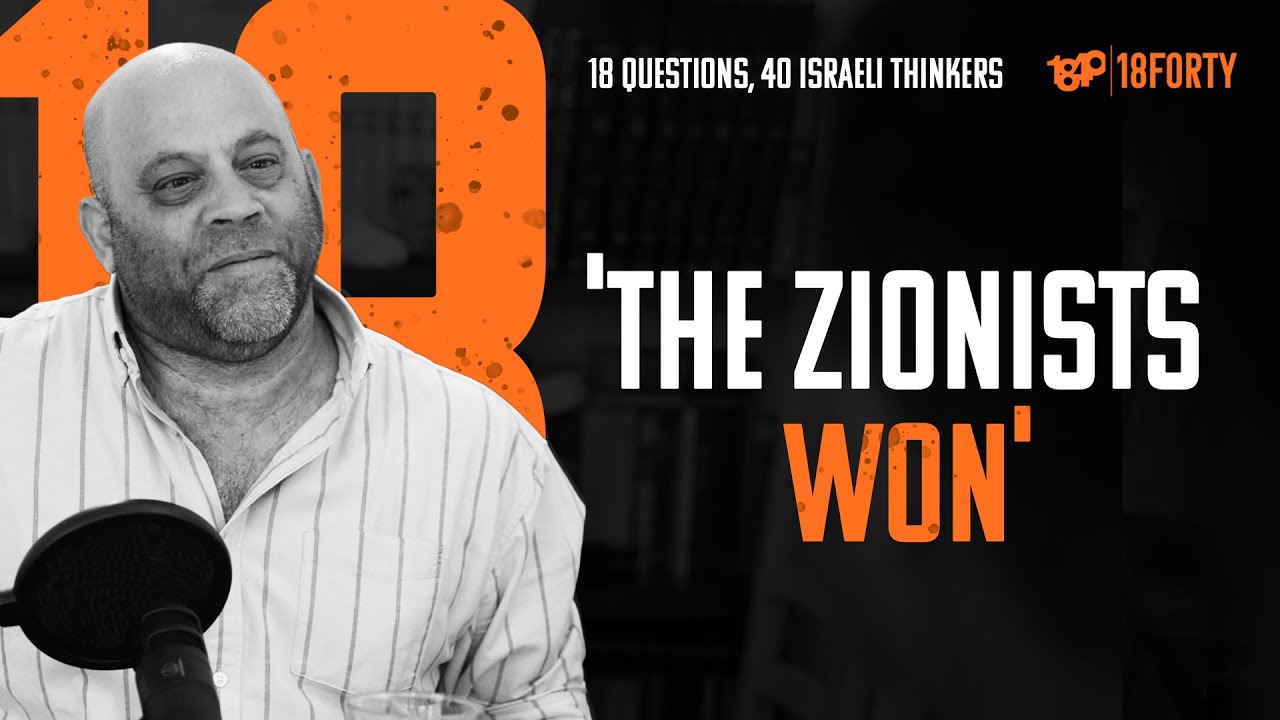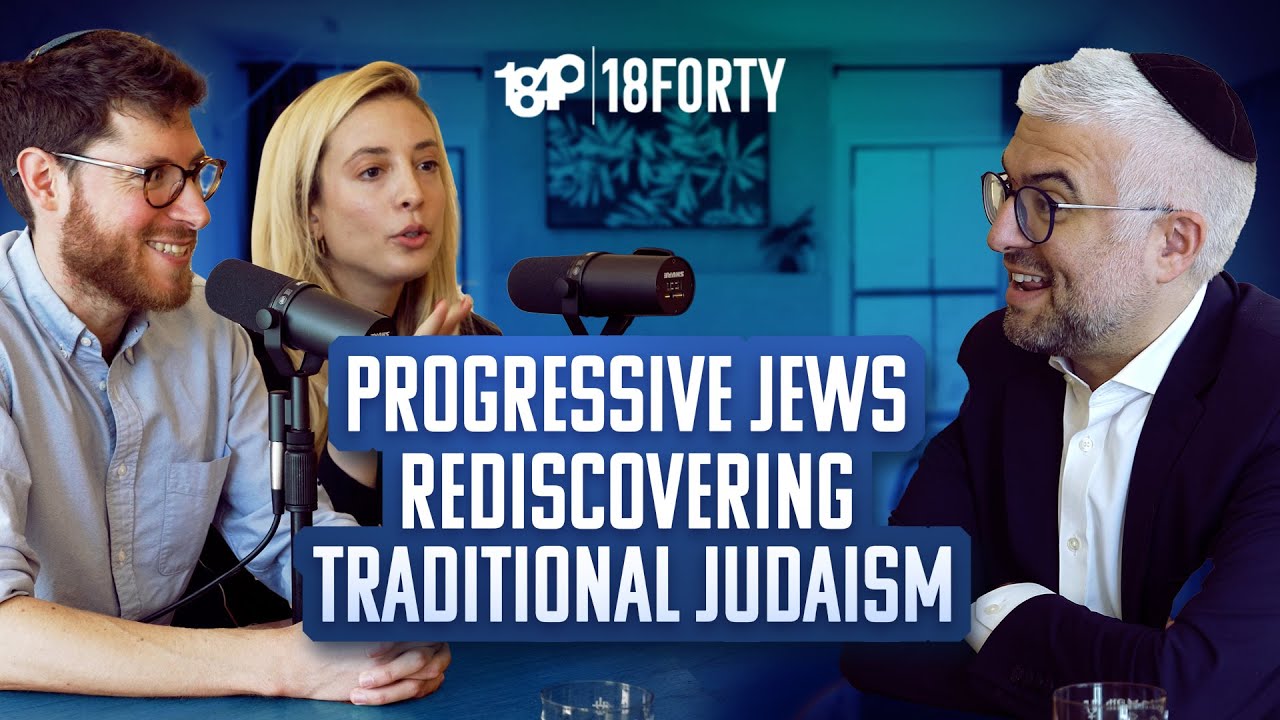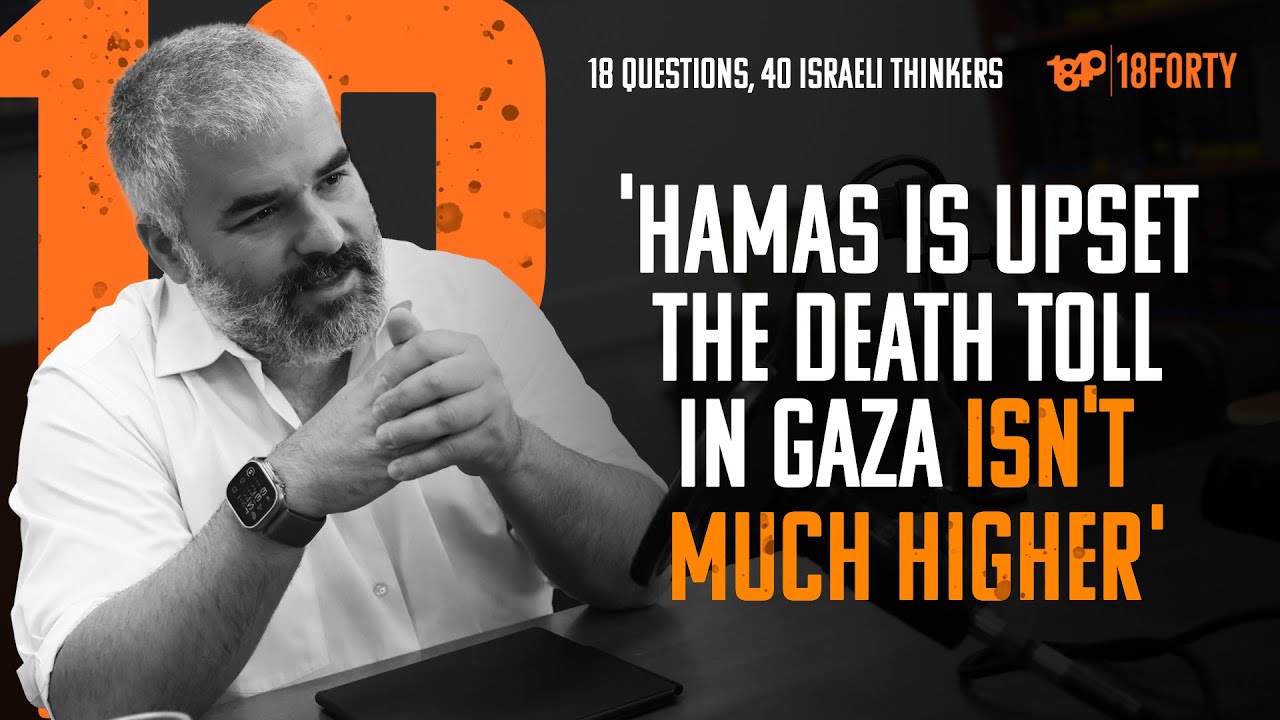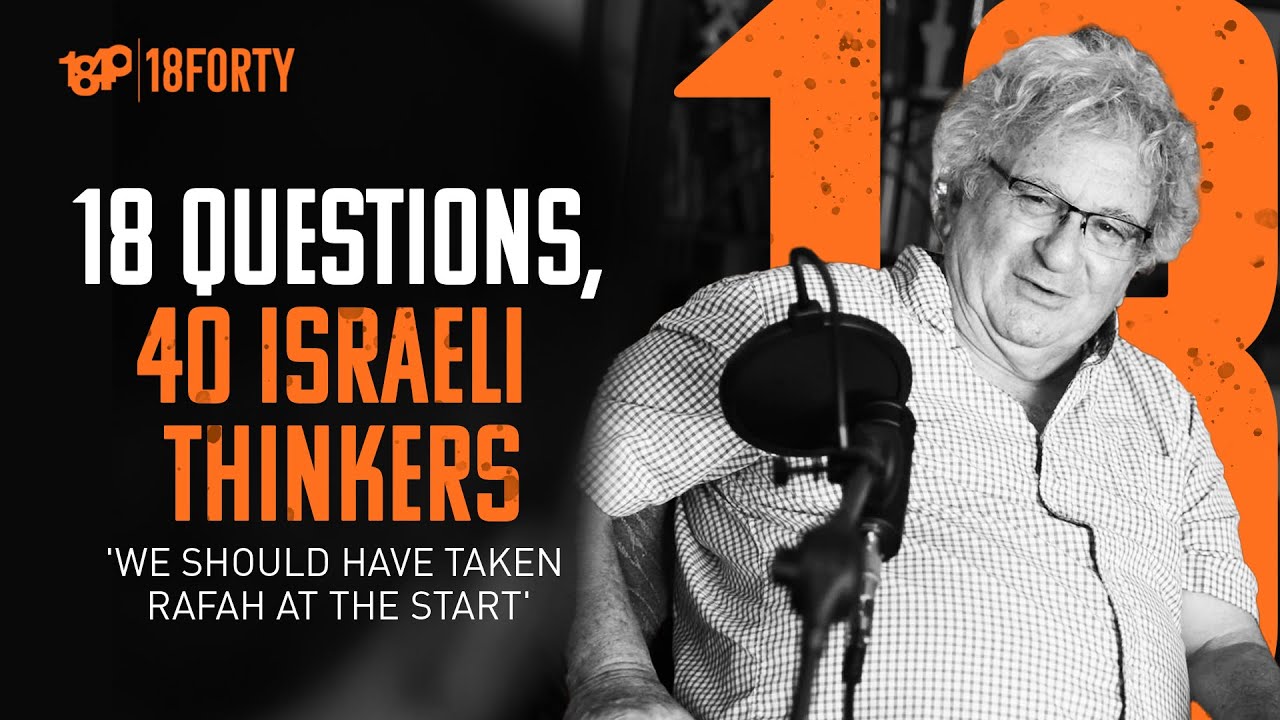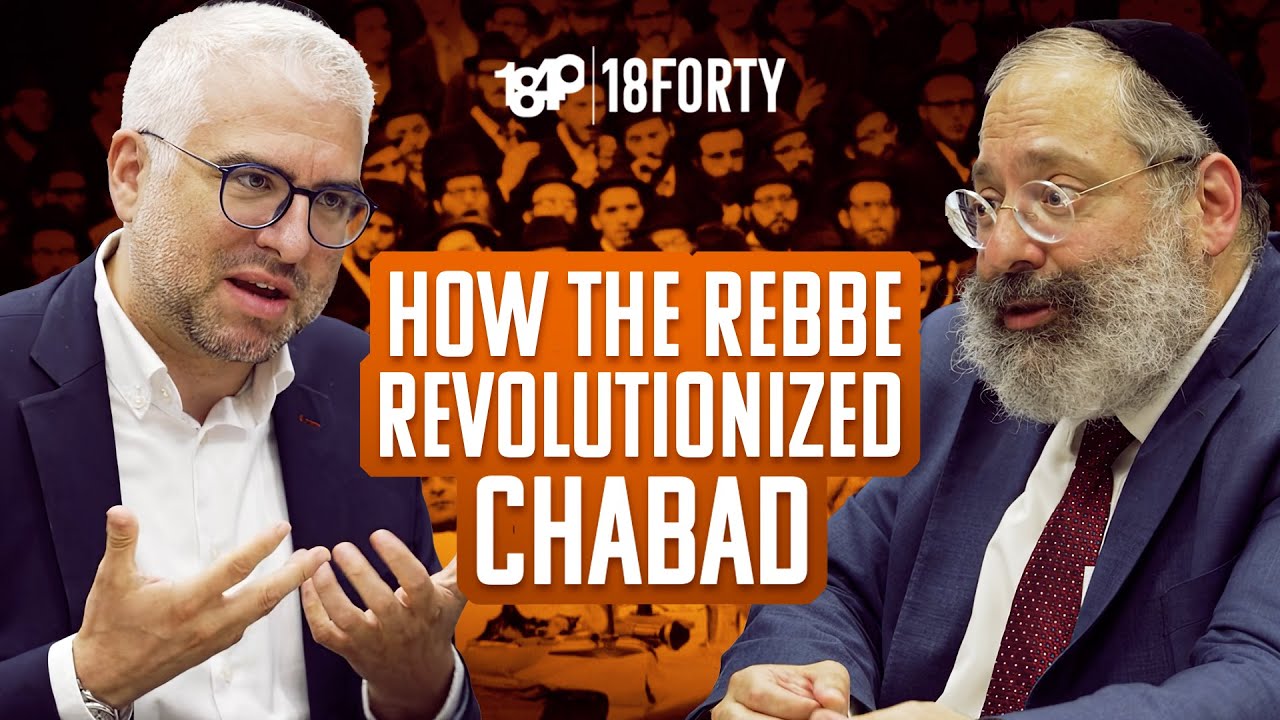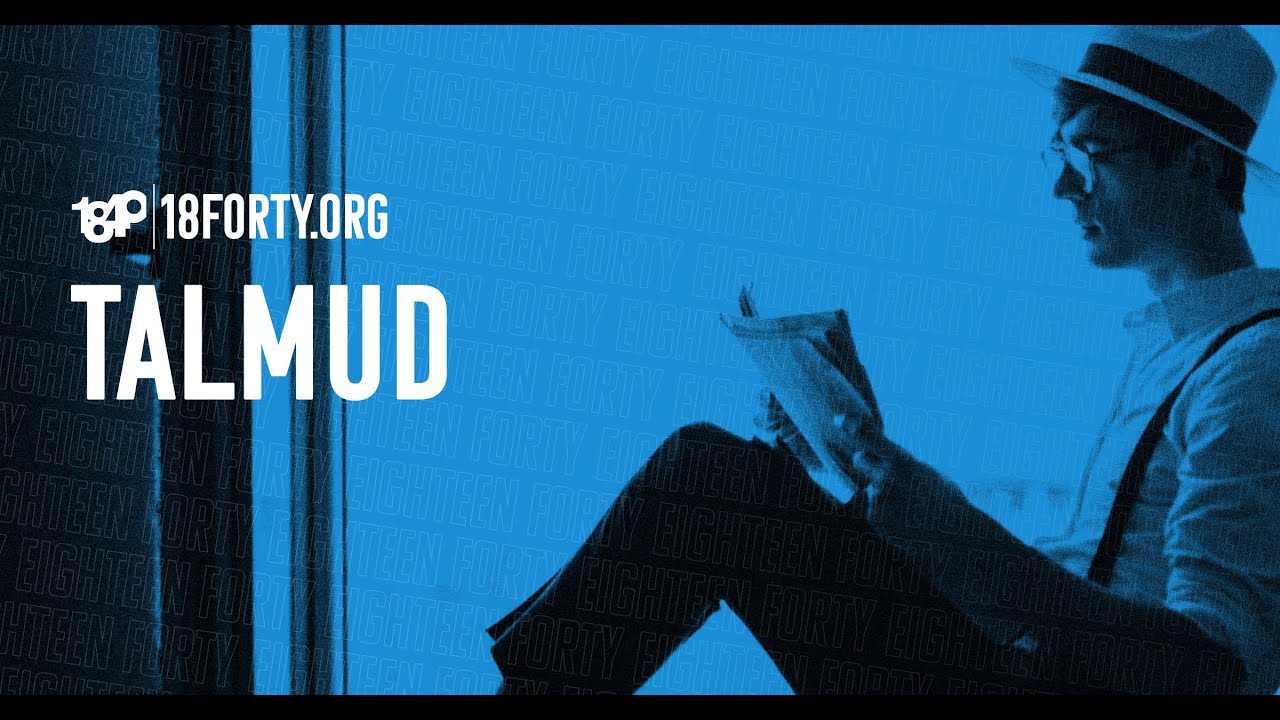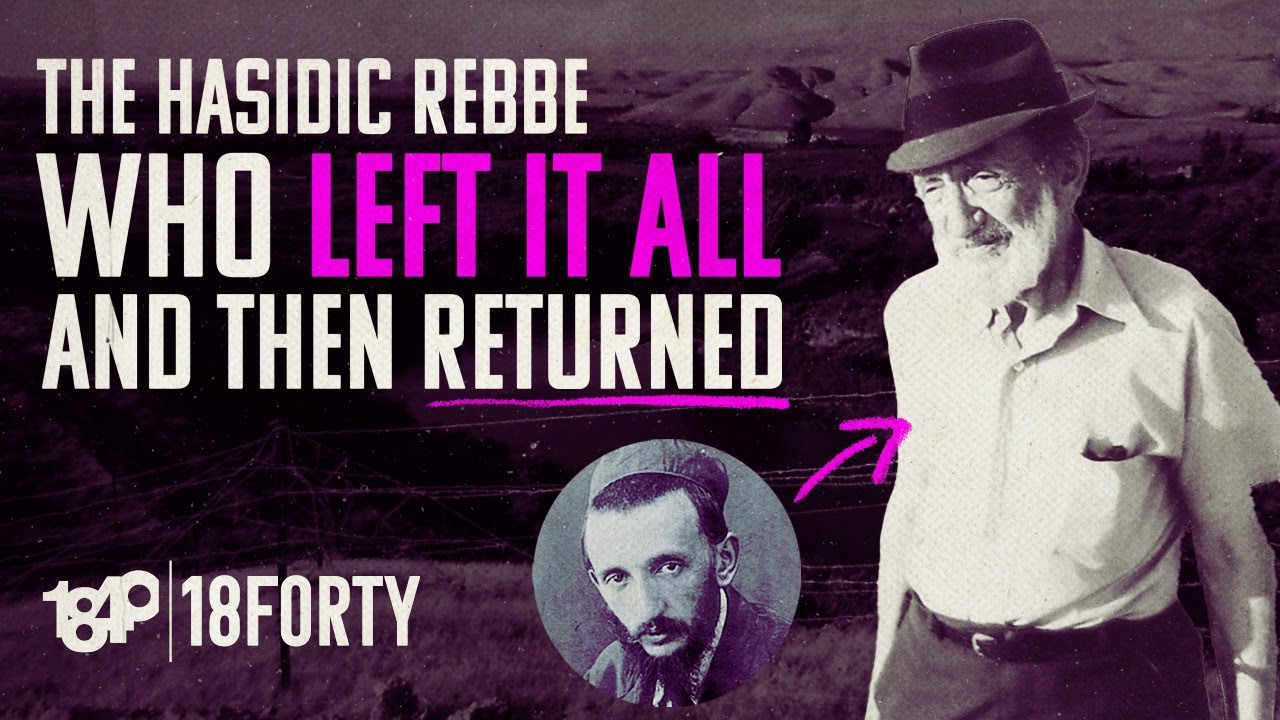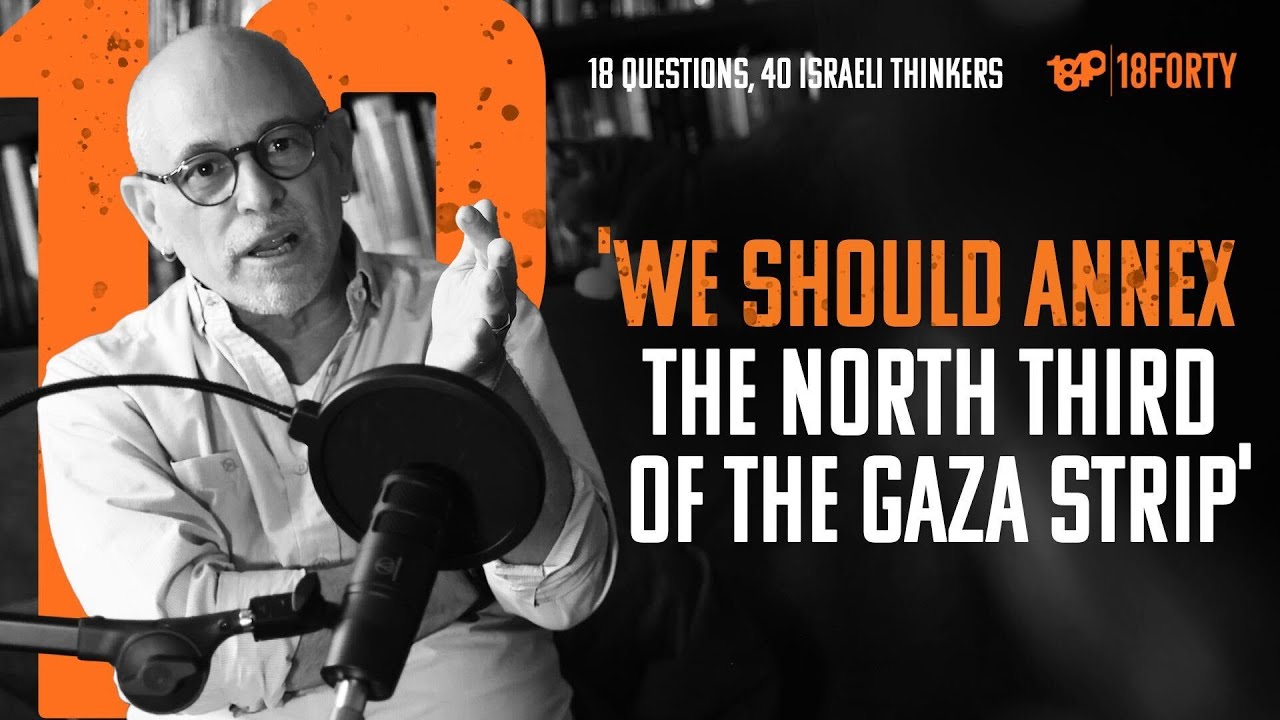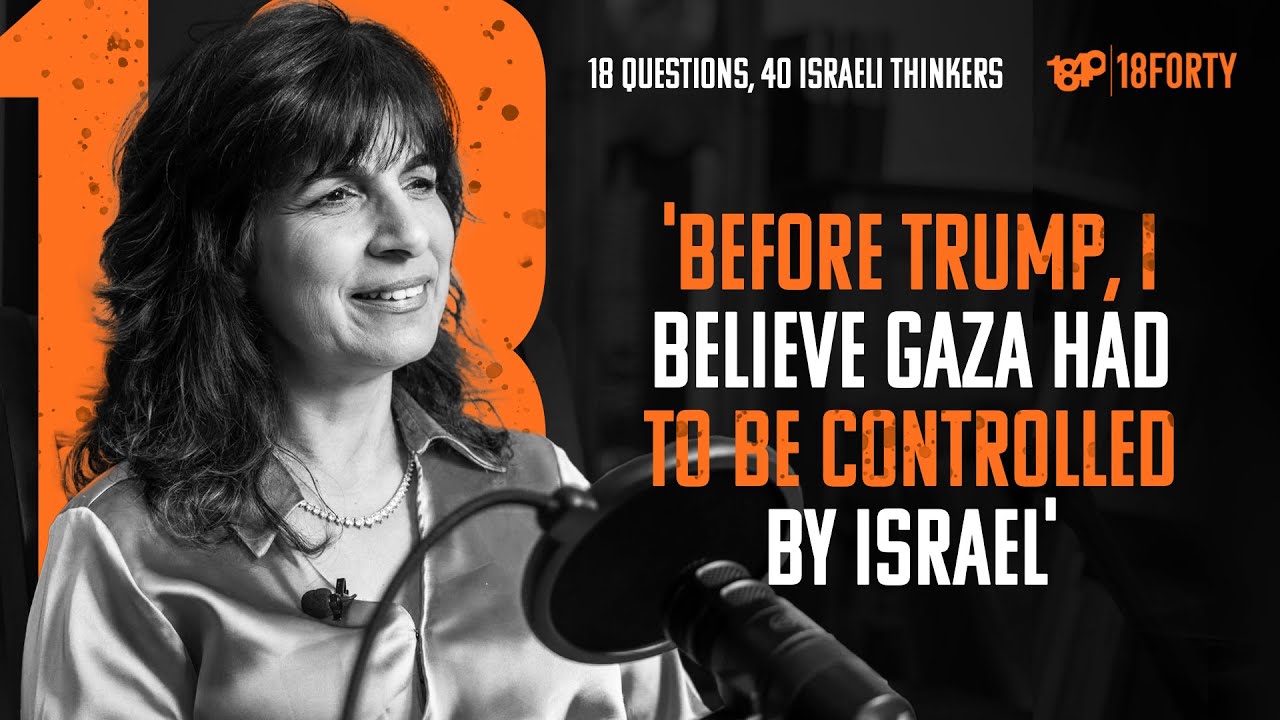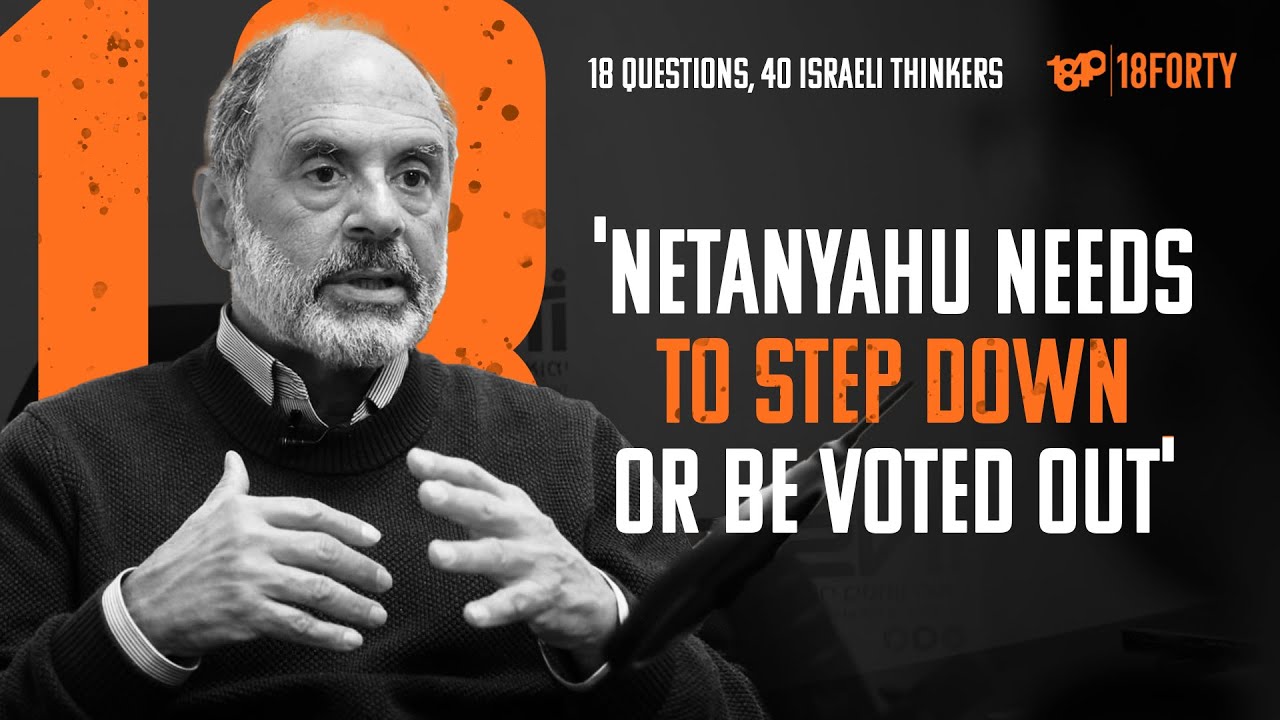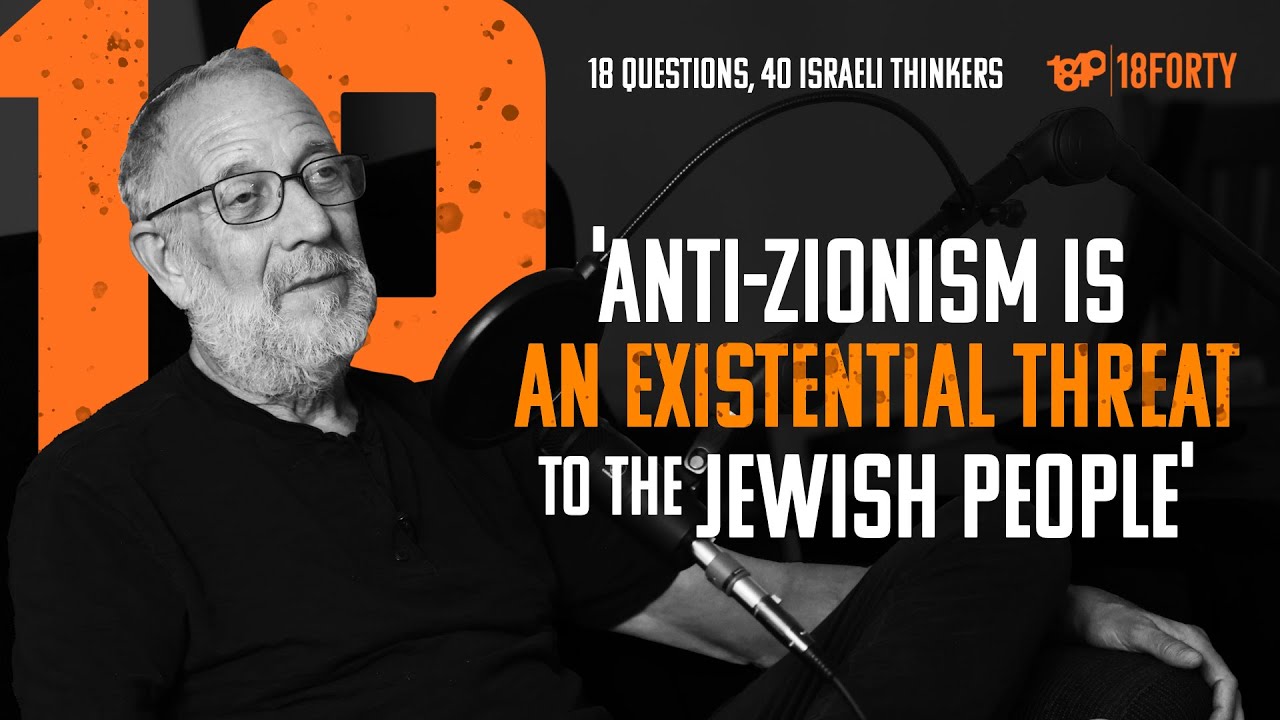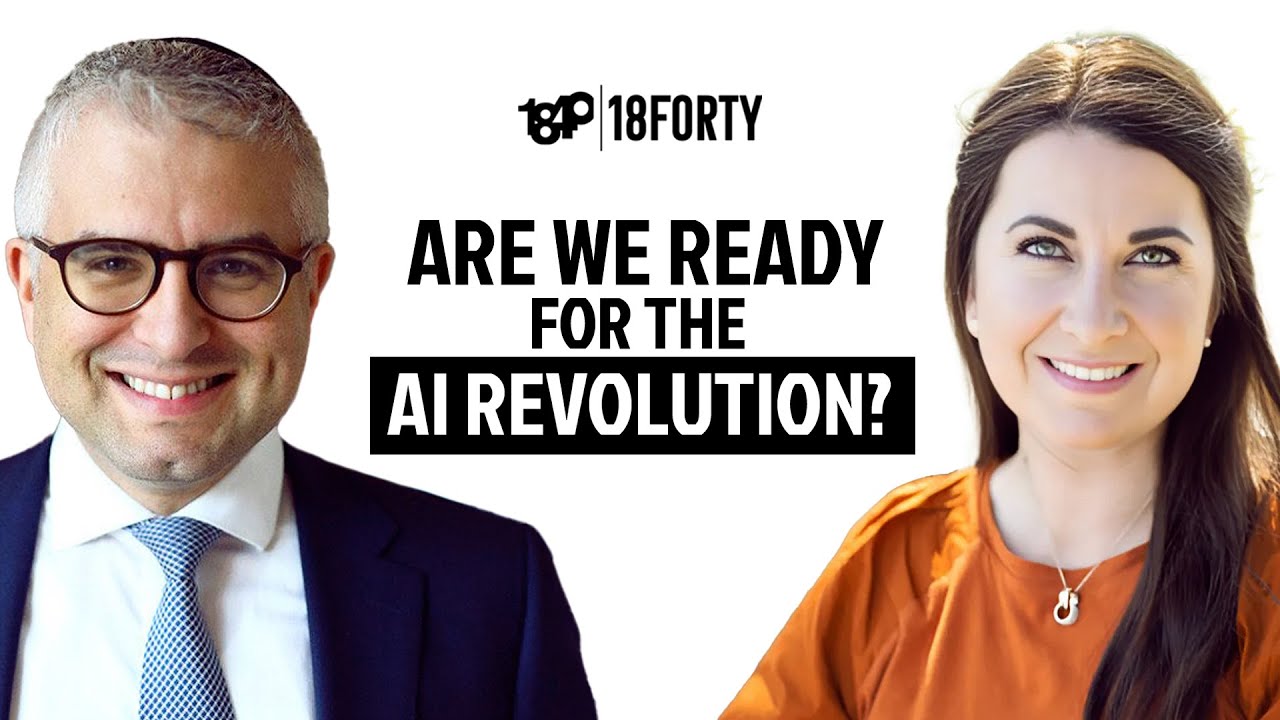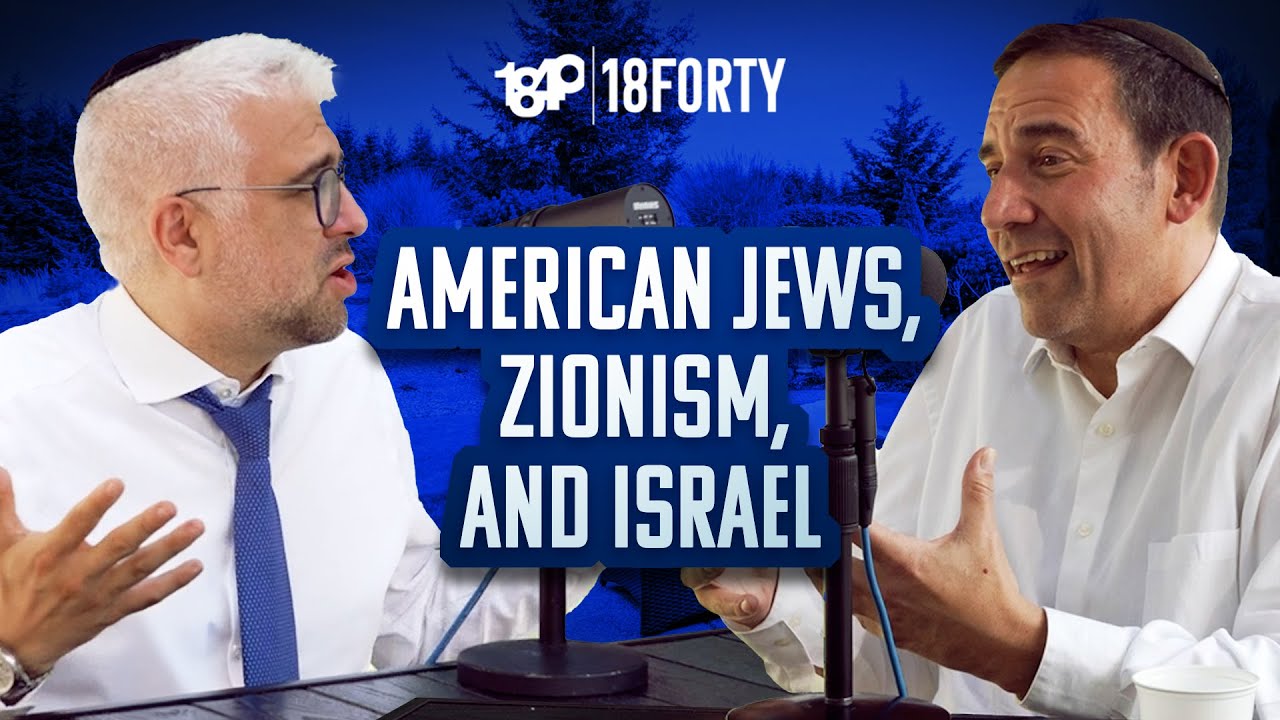Tova Ganzel: The Judaism of the Prophets & the People
In this episode of the 18Forty Podcast, we talk to Dr. Tova Ganzel about biblical Judaism, and the shift of rabbinic authority over time.
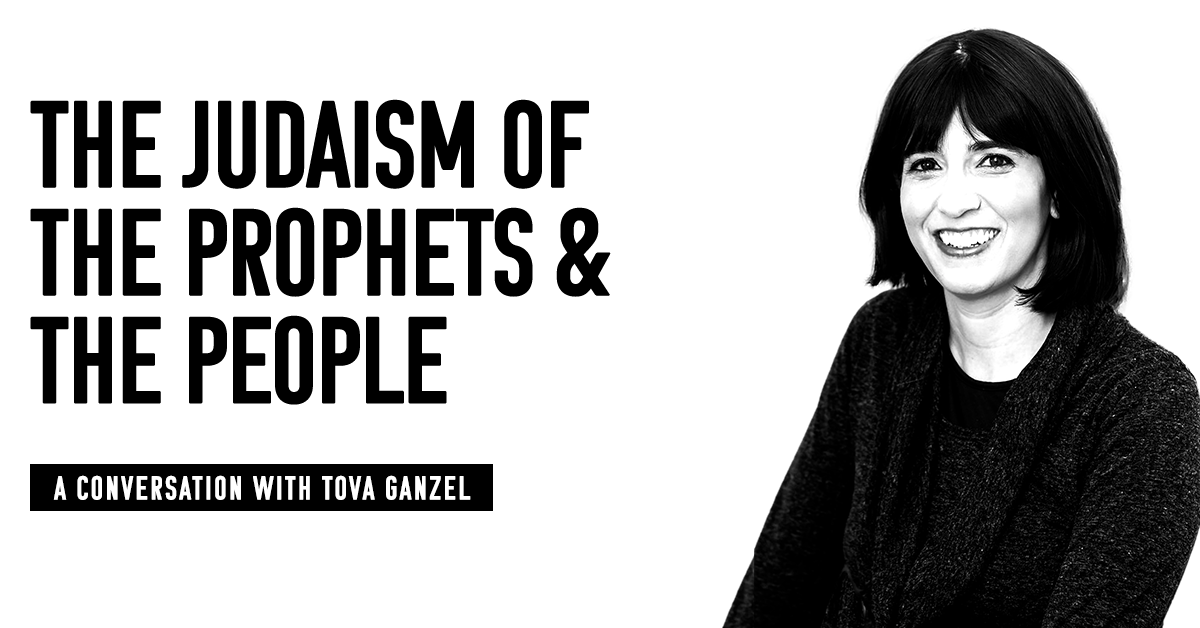
Summary
In this episode of the 18Forty Podcast, we talk to Dr. Tova Ganzel about biblical Judaism, and the shift of rabbinic authority over time.
Tova Ganzel is a professor of Judaics at Bar Ilan University. In our discussion with her, we discuss the evolution of mitzvah observance from biblical times and the transmission of authority within Judaism.
- Who gives rabbis their authority?
- How did Jewish law evolve during the Second Temple Period?
- What did the prophets do to popularize Judaism?
Tune in to hear a conversation on authoritative figures, authoritative texts, and accepting authority .
Interview begins at 15:09
Tova Ganzel is a Senior Lecturer at the Multidisciplinary Department of Jewish Studies at the Bar-Ilan University and Head of the Cramim Jewish Studies Honors Program. Tova was the director of the Midrasha – Institute for Advanced Torah Studies at Bar-Ilan University and is a certified women’s halakhic advisor (yo’etzet halakha). She holds a Ph.D. in Bible from Bar- Ilan and is a renowned figure in the world of Jewish education for women. Her work is widely published, and she is the recipient of numerous academic awards. She lives in Jerusalem with her husband and family.
References:
The Jewish Self by Jeremy Kagan
Pachad Yitzchak – “Letter #19” by Rav Yitzchak Hutner
“I Am The Least Interesting Person In My Family” – Alex Edelman Performs Stand-Up on The Late Show
Seder Olam Rabbah 30 by Rav Eliyahu of Vilna
Ezekiel: From Destruction to Restoration by Tova Ganzel
Shulchan Aruch by Rabbi Yosef Karo
Pninei Halacha by HaRav Eliezer Melamed
Kitzur Shulchan Aruch by Rav Shlomo Ganzfried
Mekor Chaim HaShalem by Rabbi Chaim David HaLevi
Mishna Berurah by Rabbi Yisrael Meir Kagan
״יש צורות רבות ומגוונות לייצר דיון הלכתי, תקיפה היא לא אחת מהן״ by Tova Ganzel
“Responsa: The Law as Seen By Rabbis for 1,000 Years” by Israel L. Shenker
Megillot Midbar Yehuda – HaChiburim HaIvriim by Elisha Kimron
Megillot in Qumran by Menahem Kister
From Qumran to the Tannaic Time by Vered Noam
The Bar Kokhba Revolt – The Archaeological Evidence by Hanan Eshel and Boaz Zissu
Mishna Torah, Hilchot Mamarim by Maimonides
The 13 Principles of Torah Elucidation by Rav Yishmael
Kovetz Shiurim: Divrei Sofrim by Rav Elchanan
Drashos Beis Yishai 15 by Rav Shlomo Fisher
Transcript
David Bashevkin:
Hello and welcome to the 18Forty Podcast, where each month, we explore a different topic balancing modern sensibilities with traditional sensitivities, to give you new approaches to timeless Jewish ideas. I’m your host, David Bashevkin, and this month we’re exploring the origins of Judaism. This podcast is part of a larger exploration of those big, juicy Jewish ideas. So be sure to check out 18Forty.org. That’s 18 F-O-R-T-Y.org, where you could also find videos, articles, recommended readings, and weekly emails.
It’s hard to talk about this topic in English because when you use English words, I literally mean the language English, everything sounds much more historical. And it sounds like low key heretical. But I actually want to provide a foundation within traditional sources for some of the shifts that we’re talking about today in particular. And that is the shift between, hold onto your hats, because I’m saying it in English. I know it doesn’t sound good because this is the language that a lot of those who have tried to kind of historicize Judaism and reduce it down to whatever we can prove historically, and looked at a lot of rabbinic ideas as a corruption, so to speak, God forbid, of Yiddishkeit. But I do want to talk about the distinction between prophetic Judaism and rabbinic Judaism, because I do believe there was a shift, where at the center of Judaism, the Yiddishkeit, the stories, the ideas that we are told through Tanach, most of them reflect a very different world than the world that we live in today. They reflect a prophetic world, whereas the world we live in today is, so to speak, the rabbinic world of Judaism.
And how do we know that such a shift even took place? When did it take place? Where do we have any reference to this whatsoever? Is this just something that a bunch of scholars made up, sitting in a room in the 19th century trying to free themselves from the shackles of halacha and traditionalism, and be able to point at most of the laws that halacha has preserved for 2000 years, were just corruptions of some past and some moral monotheism that they saw in Tanach? No, I think these are actually quite traditional ideas, though when you say them in English, like anything, they always sound a little bit worse.
I used to write a humor column for Mishpacha Magazine, and I would make fun of the translations that we do that always make things sound overly academic. Like instead of saying the word Beis HaMikdash, or even Temple, or Mishkan, we use the word tabernacle. You never see the word tabernacle.
The worst of these obviously, is when people, instead of using the word tefillin, call them phylacteries because we all know there is not a person on the planet who has never heard of tefillin in but is like, “Oh, phylacteries, now I know what you’re talking about.” Nobody used the word phylactery, you just jump straight into the world of tefillin. And sometimes when you take things in translation, it’s much easier to talk about the world of Torah she’baal peh, versus the world of nevuaa, rather than the world of rabbinic Judaism versus the world of prophetic Judaism. It just sounds different. But I think it is important to use these words because they shouldn’t necessarily scare us, even though they’re very often employed in ways that undermine tradition.
This shifts between a prophetic God-centric world, to almost the modern world. And I don’t mean modern in the modern sense, I mean the man-centric world that we live in today, a world where we don’t see open miracles, we don’t see open divinity, where there’s a lot more room for doubt and ambiguity. And of course, because of that interpretation, is a shift that is noted by a lot of sociologists. There’s a thinker who I’ve always found fascinating named Karl Jaspers. You could look him up. Absolutely a fascinating thinker, who came up with the term Axial Age, where he talked about a global shift in terms of the locus of control, and how societies conceptualize their own sense of self. Where previously, societies were grounded in this divinity, in this mystery and wonder of the world that was anchored in God. And there was a shift into a more self-centric universe. The language he uses as he writes as follows, “What is new about this age, this shift, this Axial Age when the world literally shifted.”
He writes as follows, “Man becomes aware of being as a whole of himself, and his limitations. He experiences the terrible nature of the world and his own impotence. He asks radical questions. Face to face with the void, he strives for liberation and redemption. By consciously recognizing his limits, he sets himself the highest goals. He experiences unconditionally in the depth of selfhood and in the clarity of transcendence.”
The writer who I think articulates his best in more traditional theological terms, what we would call machshava, is Jeremy Kagan, who we’ve interviewed in the past, Rabbi Jeremy Kagan, absolutely fantastic thinker. And we interviewed him in our series on rationality. He talks about this in his book, The Jewish Self, which I still think is one of the most sophisticated presentations of Jewish thought, but I don’t think this is very speculative. I think that there was a very deliberate shift that is discussed, both in the writings of the prophets, well it’s technically in Kesuvim, in the writings. And also, in the Talmud. And that is the shift away from prophecy.
This really all begins with one of my absolutely favorite stories in all of the Gemara. It is found in both Tractate Yoma and Sanhedrin. If you want to look it up, it’s on Yoma 69b and Sanhedrin on daf samech daled. That’s 64. And it begins with a verse in Nechemiah, where it says that the Jewish people cried out with a loud voice to God. And what were they crying out about? And the Gemara says that they were crying out because they wanted to destroy the inclination to serve idols. They wanted that feeling, that urge to find divinity or corrupted divinity outside of themselves. They didn’t want to have that urge anymore. They wanted to get rid of it. And they prayed and they prayed.
And the Talmud says something absolutely amazing. Where it says, “Their request was granted and the inclination to serve idols jumped out of the Holy of Holies like a fiery lion.” And I’ve always wondered, it’s such a strange place that the inclination to serve idols, where was it hiding this whole time? In the Holy of Holies. And I think that tells us a lot about this shift in general. In a world that is God-centric, in a world where that urge to find divinity in that tangible sense outside of yourself, where prophecy and miracles and that tangible expression of God is so real, that’s also wrapped up. And part and parcel with that, is the inclination to serve idols. And once that was destroyed, the very inclination to serve idols changed. It’s something very interesting. Even the very term that we use for idolatry changed. We used to use the term avodas elilim, serving gods. And then it shifted in Talmudic language, it is called avodah zara, strange worship.
And Rav Hutner actually points out in a letter that part of this shift is that the very inclination, the worship itself became strange. That urge became strange. We can’t imagine a world where somebody would want to find their sense of self in a stone, in a rock, in the sun, in the moon. But that was a very real urge. I would imagine people in those times would find it very strange to find your sense of self in other people. I always think modern day like the corollary, instead of finding godliness and that sense of self in a rock in some expression, tangible expression of divinity, we find our sense of self now, I think in other people, in celebrity, in selfies, in autograph. And that’s an urge that people have. It makes us feel more real.
I’ve actually experienced that myself. I don’t know if you’ve ever met a celebrity. I, one time, was in a room with a celebrity. It was actually pretty recently. It was Stephen Colbert. He was being interviewed by a past guest named Alex Edelman. And Alex Edelman mentioned my name from the stage in front of Stephen Colbert. I remember I was sitting in the front row, and I remember I felt like my sense of self change. I’m like, “Oh my gosh, Stephen Colbert just heard my name.” I felt more real. I felt more material. You could laugh all you want. It’s not my proudest moment. I mean, I thought it was super cool. It really felt different. Like hanging out with somebody who you’ve imagined. I imagine in some ways at that urge, that sense that we get, that we feel more real after engaging with a celebrity after being in the room with somebody is like, “Oh my gosh.” You feel different.
I think in many ways, that is the only analogy I could almost glimpse and imagine what idolatry must feel like, that I have a connection to the sun, to nature, to these gods that so to speak, I think run the world. And now that seems so strange to us. It’s no longer avodas elilim. It’s not the gods that are foreign, it’s the service itself. It’s avodah zara.
So they scream out and they finally destroy this inclination. And the very center of our reality began to shift. The Vilna Gaon write in his commentary in Seder Olam Rabbah, which is this rabbinic retelling of history. I wouldn’t call it hard history, I would call it more memory and history combined together. It’s this rabbinic retelling of how the world unfolded. And in the 30th chapter of Seder Olam, it talks about a shift where we used to go out and be able to hear the word of God. And now the word of God is preserved through our interpretations, through rabbinic interpretations.
And the Vilna Gaon has a commentary over here, where it says this shift began to take place, the cessation of prophecy, the Vilna Gaon writes, happened at the same time where they began to destroy the inclination of avodah zara. This all happened at the same time. And when was this? The Talmud actually couches this entire story in one of the books of Tanach. And that is the ninth chapter of Nechemiah. The ninth chapter of Nechemiah is absolutely fascinating. You have to open it up and read where they are coming out of. And it is a big part of our discussion today.
I would begin reading from the beginning of Tanach, and go to the very end. Don’t have me limit you. And I am so embarrassed because so much of these discussions hinge on a real grasp of the stories in Tanach, which I am woefully ignorant of because there are many things that we don’t teach anymore all that well. I think there are three things that in a lot of traditional schools, have moved away from. It’s a part of their polemic in the 19th century. One of them was Tanach, because Tanach was being marshaled to show this world of prophetic Judaism is so different from rabbinic Judaism and it’s all a fabrication and corruption like Geiger. So a lot of people moved away from Tanach like, “We don’t want to do this anymore.” Hebrew language began to be seen with suspect in a way, as trying to undermine the traditional language preserved in Yiddish for over a thousand years. And Zionism was seen as a threat, and they moved away from Zionism.
I think, thank God we live in an age now where we moved back into the study of Tanach, we moved back into embracing chibas ha’aretz, the love of Eretz Yisrael, the love of the land of Israel and Zionism of course. And Hebrew language has come back and really has seen a renaissance throughout the Jewish world. But for 200 years in a lot of traditional communities, they moved away from all three. And I think we’re still suffering from a lack of knowledge in Tanach. I don’t want to say we. I am lacking, woefully lacking in this area.
This cessation of prophecy and of the inclination to serve idolatry was much more than just the end of a phenomenon. It was the change in the very fabric of reality. It was a different world that we see described in the books of Tanach and the world that we inhabit today. And I believe that shift begins as this story about the destruction of the evil inclination to serve idols begins in the ninth chapter of Nechemiah. And it is in the eighth chapter of Nechemiah. Right beforehand, it’s the chapter right before it’s part of the same story, that we see something absolutely startling, where the Jewish people are seemingly ignorant of Torah. And not just nitty gritty details. They seem to be ignorant of the very holiday of Sukkos, of basics. They don’t know anything.
And Ezra has this massive event where he goes and he brings the Torah to the people. And I believe that this shift of bringing the Torah to the people, moving away from prophecy and idolatry in the way that we see reality are happening at the same time, because this is the moment where things really begin to shift. Where we move away from prophetic Judaism, and we move towards rabbinic Judaism, and is everything that I discussed today with our guest to Tova Ganzel.
Tova Ganzel is an absolutely jaw-dropping scholar. I wouldn’t fault you if you’ve never heard of her, but it’s time to start. She is a jaw dropping scholar who has a PhD in Bible from Bar-Ilan who studied the book of Yechezkel, of Ezekiel. She has run conferences on a lot of the rabbinic responsa. She recently ran a conference on the writings of Rav David Tzvi Hoffman, a figure that is absolutely crucial in understanding traditional responses that marshaled academic tools to ground traditionalism against the onslaught of figures who really looked at rabbinic Judaism as a corruption. And she ran this conference on Rav David Tzvi Hoffman, contributed to paper, absolutely fascinating work. And she really is an expert in this world of Tanach, yet also has a deep, deep understanding of the development of halacha and rabbinic Judaism as we understand it today.
I’m always excited because, mea culpa, I was not familiar with her work, but she did publish and I have read it’s absolutely fantastic. The Koren edition of Ezekiel, part of their Maggid Studies in Tanakh series, which is absolutely phenomenal. She was the author, I had never heard of her beforehand. And speaking with her was absolutely jaw-dropping. She’ll kill me for saying this, but I’m going to say it anyways. There’s a point in our conversation where she quotes a big, big chunk of Tanach. It was on a Zoom call. I saw her speaking. I don’t believe she had a Tanach in front of her. This is a person who has a command of Tanach, of rabbinic literature, of biblical literature, few I have ever met and is able to really contend with academic questions, deeply rooted in traditional ideas and kind of swallow both pills, the red pill and the blue pill. Wed history and memory together, which is why I am so excited to share our conversation with Dr. Tova Ganzel.
It is really my absolute pleasure to be in conversation with Professor Tova Ganzel. Prefer professor? Doctor? What do you prefer?
Tova Ganzel:
I’m a doctor here in Israel. I’m a senior lecturer at Bar Ilan University.
David Bashevkin:
Okay. So it’s really an absolute pleasure to be speaking together. I was introduced to you through a mutual friend, Ellie Fisher, who’s a dear, dear friend. And we’re dealing now with a period that is known as early Judaism. Some call it ancient Judaism. Some scholars don’t like that ancient seems like it’s not relevant anymore. But I want to start with the foundational question. And that is, the Judaism that we explore when we open up a Tanach, and you read the stories in Neviim, the Prophets, Ketuvim. It doesn’t look like the Judaism in so many ways that I practice out here in Teaneck, growing up in the Five Towns. Even when I visit Yerushalayim, you feel a little bit more prophetic Judaism in Israel, but not so much, not the way we describe it.
And what I’m looking to understand is to speak to scholars who can draw a different line of connection to the Judaism that we have today, that we practice particularly in the Orthodox community, but not exclusively. This is really understanding observance, modern observance. And connecting it back to the world of some would call prophetic Judaism, ancient Judaism, early Judaism. Now, I’m curious, which term do you prefer and which one do you hate the most? Because everyone has a preference.
Tova Ganzel:
Well, listen, I’m Israeli, so some of the terms in English don’t ring the same bells to me. So I just like to say that we’re always looking for bridges between the biblical literature, the prophetic literature, and then the rabbinic literature. I guess ancient Judaism could work, but I want to say something at the opening maybe.
David Bashevkin:
Sure.
Tova Ganzel:
Which is that the question that you’re raising isn’t new and is not only part of our world. And it’s obvious through different texts, I’ll give one example of Shir HaShirim Rabbah, that when they want to describe what exactly is the authoritative status of Ezra the scribe, then they’ll say, “Ezra v’siyato v’chavurato lo alu b’otah shaah“. And his friends or the people around him didn’t come to Israel at the prophetic times of Chaggai and Zechariah, that are recorded in the first chapters of Ezra from a prospective point of view. And when the rabbis asked why didn’t Ezra come when he could have, their response is, “V’lama lo ala b’otah shaah?” Why didn’t he come at that time? “She’haya tzarich l’varere talmudo lifnei Baruch ben Neriah“. Because he had to really learn from Baruch ben Neriah who we know from the prophetic literature, from the book of Yirmiyahu was Yirmiyahu’s scribe.
What do Chazal, what do the rabbis want to do here? They want to exactly address the point that you’re asking about, which is, they want to see a dynasty, they want to see how things connect, how Ezra is connected to Baruch ben Neriah, even though chronologically they couldn’t have sat together. And then Ezra will be the one who will connect afterwards to the first sages to Anshei Knesset HaGedolah.
So they’re really making this lineage of blurring. And even though it didn’t happen historically, in my opinion at least, I mean it’s hard to take these chronological suggestions at face value. It demonstrates the fact that Chazal and the rabbis really wanted us to see this as a connection. They wanted us to imagine Ezrasitting in the beit medrash of Baruch ben Neriah. And they wanted us later to understand that Anshei Knesset HaGedolah, were sitting in Ezra‘s beit medrash. So it’s not based on just the texts, they are obviously more historical events happening here that actually enable this. But their textual analysis here also points exactly to these questions and tries to give them an answer.
David Bashevkin:
You know, it’s interesting, and I want to almost start with someplace more foundational, but when you tell that to me, I’m deeply moved and I’m always feel a connection almost through halacha, through contemporary Jewish life. I feel the generation. It is how I am able to connect. But a lot of people would hear that and say that, “Yeah, the rabbis, they were fabricating something. They were trying to make you feel more authentic than they really were. There wasn’t an oral tradition stretching all the way back. And this was the invention-” What a cynic would say, “this was the invention of the rabbis”. So I’m curious, if you’re talking to a cynic and somebody who is reasonably familiar with maybe they explored a little bit of Tanach, they read a couple academic articles, where is the starting point where you try to explain how this is not just a mere invention that appeared out of thin air, that some people would say, “Look, we’re no older than the Christians. Rabbinic Judaism evolved in the same time.”
This was an accusation levied by Geiger, you know, talks about this a little bit, that’s why he called it prophetic… He wanted to return back to a Judaism that he felt got displaced in early Reform. And you’re talking to a cynic, and they’re frustrated. They say, “I’ve sat through 1,001 classes from rabbis on rabbinic authority, and they all begin their classes by quoting other rabbis saying that we have the authority. Lo sassur, the verse in the Torah that says you can’t deviate from the rabbis.” And I say, we interpret it to mean that you can’t deviate from the rabbis of the Talmud. And you start scratching your head and they say it’s a little circular, meaning you interpreted a verse that is giving you authority. Where do you start? Meaning not as a class on rabbinic authority, but as a class on the notion of an oral law, on the notion of having these communal… Where do you begin?
Tova Ganzel:
I, as a Bible scholar, would definitely start in the relationship between the third chapter of Ezra and the eighth chapter of Nechemiah. And the textural really evidence, which I can also tell you because I know some extra biblical literature, makes sense when you hear from historical tablets, clay tablets, how the Judeans live in Babylonia, which became Persia. And really what that describes, if we were to open together, let’s say the eighth chapter in the Nechemiah, then what you would see here is “va’yaasfu kol ha’am k’ish echad el ha’rechov asher lifnei shaar hamayim, v’yomru l’Ezra hasofer lihavi et sefer torat Moshe asher tziva HaShem et Yisrael“. What you see here, and we can elaborate about this.
David Bashevkin:
I just want to tell our listeners, she doesn’t have any books open in front of her. So I don’t know.
Tova Ganzel:
Oh, no, I have three here, I’m opening now the Bible in order to-
David Bashevkin:
Okay. I’m pretty sure you quoted that. Okay. But keep going. And the eighth chapter of Nechemiah is a foundational chapter that a lot of people, for some people, it weakens their faith because it’s clearly, you see the Jewish people grappling for a tradition where they seem to not know about Sukkos
and the plain meaning of the verses over there. It is the same verses that the Talmud, I’ve always been faceted by this, look at the transition from a idolatrous prophetic world, into the rabbinic world that we live in now, which we’ll probably explore more when we talk about Reb Tzadok’s understanding of the shift. But tell me what you see and why this is the starting point for you.
Tova Ganzel:
So what I see here is really a very substantial turning point. Because what happens in the foundation years of the Second Temple, and I’ll say this really bluntly because that’s how I understand it, but we can elaborate if that’s a little too offending in your mind.
David Bashevkin:
We’re constantly offensive, so…
Tova Ganzel:
Okay. So the Temple was an unsuccessful product in the Second Temple Times, meaning there was a Second Temple, it survived 600 years, and that if you’re counting years, then it was more successful than the first one. But if you look around and you see that Jews stayed in Babylonia, which became Persia and stayed in Egypt. And we know that from our text describing Jews in Elephantine and in Onias. And we know that there were people who stayed in the diaspora throughout all the years where the Second Temple existed, from the beginning. Oh and obviously, I forgot to mention, we see that clearly from Megillat Esther. That no one exactly runs to the Temple in Jerusalem for any help.
David Bashevkin:
Yes.
Tova Ganzel:
So if you look at that, you basically understand that the Second Temple wasn’t a major success and did it not become too central for Jewish life. And that’s something that Jews had to cope with, not only, like sometimes we tend to think, in diaspora, figuring out how their Jewish identity would be survived, but also in Jerusalem. And since the Temple was such a marginalized project, and since it was so unsuccessful, if you compare it to what expectations were, then definitely, that would be the case. Then looking at Nechemiah in the eighth chapter, and seeing really the intention of people, to go out to what I said before was el ha’rechov, to the streets, el shaar hamayim, somewhere out there, there was a gate.
Architects try to figure out exactly which gate this was. But as far as working turn, it doesn’t really matter. What matters that it’s clear that the new Torah project, or the new learning skills are not anymore privilege of these elite scribes or priests within the Temple courtyard, or within the king’s courtyard, or done in a very, very closed circle of priests, prophets, kings that we know from the First Temple. Instead, what we see is a huge crowd of people, marching down the street basically saying, “We want to also hear the Torah, we want to hear the scribes telling it to us out here. We don’t want to go into the sacred spaces. We don’t need the Temple to be centered. We don’t even have to hear about Rosh HaShana, about Yom Kippur, we only hear about Sukkos and Pesach, which were really celebrated totally outside of the Temple.
And what you see when Ezra opens the Torah scroll in front of the people is that he basically gives them an opportunity not only to be part of this, what used to be a closed circle, but he really gives them an opportunity to be part of this project, to influence it, to dominate the way that now the traditions will be passed on from father to son, if you want. Now, I’ll say more than that, even what we see done in the Temple, and you can see that from a chapter later in the 10th chapter of Nechemiah we hear about something called Chag Korban HaEitzim it seems, sacrificing trees.
And you ask yourself, they build a Second Temple and what they have to talk about is a lot about who will be the one to bring the trees to the Temple. It’s a little downgrading into my mind and I guess to anyone who was waiting to hear about lighting the menorah or about the kruvim or about a priest coming into the Kodesh Kedoshim on Yom Kippur. What does that mean? That basically means that now, the Temple is not centered around exclusive, elite groups of people. Now, it’s an opportunity for anyone who wants to come and take place. And it’s as easy as just bringing trees to the Temple. You don’t need any more than that and it doesn’t even need to be tahor. You don’t need anything. You would just be part of-
David Bashevkin:
It was popularized.
Tova Ganzel:
Exactly. Now what happens when that actually is done? What we see is that this Chag Korban HaEitzim, which later we hear about in rabbinic sources, it’s in Megillat Taanit and other places, basically, to my mind, demonstrates the chain. And as I said before, it’s not only in the rabbinic texts, in the Tannaic period. Now we’re talking about approximately the fourth or fifth century BCE when I’m saying that these turning points are taking place and unfortunately, we really don’t have information about what happened in about, I would say the 300 extremely substantial years in the Second Temple. I mean we know more or less what happened in the first 100 or 150 years. And then we know again what happened from the Hellenistic period and on I would say, or from Alexander Macedon.
David Bashevkin:
Why are we missing 300 years?
Tova Ganzel:
Maybe 250 years? We’re basically missing a majority of the Persian rule, meaning we know the Temple was established in 516 BC. We know Nechemiah and Ezra… Well, it’s a debate who came first and when they came, but if we take it face value, then we’re talking about Ezra and Nechemiah to 450, let’s say, approximately BC. I mean we could suggest that Esther and Daniel might have been recorded or edited a little bit later. I mean we know from even the rabbinic text that they attribute the editing to Anshei Knesset HeGedolah. So it could have been done later as far as when it was recorded. But it’s describing events that are at the latest in the middle of the fourth century BC, approximately.
And then the next we know is already taking us way down into the Hellenistic period. So we really don’t know what happened for another, at least until 333 BC and probably even a little later until we have, if we want more Judean sources and we have Megillot, but that’s taking us somewhere around the 50 BCE or maybe the 50CE. We don’t know exactly, but again, we’re talking about 200 years later at least. So we don’t really know what happened. That’s not to say that substantial things didn’t continue happening. It just means that when you started your podcast today saying, or mentioning that the rabbis are used or institutionalized in order to say something that is said in a way that maybe… Or articulate something that might be framed in the way they want it to be framed. I would just say that what we have is the retrospective point of view of the rabbis for these two or 300 years that we just don’t have any other information.
And that’s why we all lean on their point of view and their reflection on what happened in these years and what oral traditions they are writing up later in the Tannaic and then in the Amoriac period, for instance, in the Midrashic world or in the Babylonian Talmud or the Yerushalmi Talmud, for a lack of information of a group of years. But if we wanted to continue chronologically, then we would be looking at the Ezra and Nechemiah like I said before. Explicitly looking maybe at Ezra the third chapter and how they celebrate Sukkot when the foundations of their Temple are laid.
And then later, 70 years later, when Ezra and Nechemiah as I said before, and they have this kriyat ha’Torahthat some people view as a Hakel kind of gathering. And then the next we know is really a little bit from the Second Temple sources, which are usually anything that we find that can give us some historical information in the Megillot, in Dead Sea scrolls, which is highly disputed, what exactly we could learn from them and what does it reflect and to what extent does it reflect the elite groups that are in Jerusalem or the esoteric groups that ran away to the desert. So it’s hard to make a tradition out of those texts even though it gives us some information. And then the next we really know is what the rabbis recorded.
David Bashevkin:
It was a fascinating overview of some of the earlier, but let’s talk a little bit about that earlier world. The first time I read Nechemiah, the eighth chapter, I’ll be honest, my heart sank. My heart sank because I was raised with a point of pride that I am part of a very unbroken chain. There’s a point of pride that the Yiddishkeit that I observed is unbroken throughout history and have been involved in programs where you take your name and who your teacher was and their teacher and you link it all the way back up to Moshe and then you come and you read the eighth perek of Nechemiah and you see that there was a lot of the tradition that was lost. So what I’m hearing from you, and correct me if I’m wrong, that you are saying this was a shift in taking Judaism out of the elite spaces of the Temple and making it belonging to the people, to Klal Yisrael, to the collective party of Jewish people.
But let me ask you, the notion of an oral tradition. You ask somebody in the seventh perek of Nechemiah, in the sixth perek of Nechemiah, what do people know? Tefillin, kashrus, Shabbos? We have a lot of the details that have been fleshed out through the Gemara, through the Talmud. I don’t expect to hear in Tanach about the intricacies of whether or not you can use a dishwasher for milchig and fleishig. I don’t expect them to tell me whether or not I could use automatic lights on Shabbos, but I want to know that these principles exist, that they weren’t, God forbid, fabricated, that our tradition was invented. Where would you send somebody who wants to understand where the notion of the ritual observance that we’re familiar with, where that is anchored?
Tova Ganzel:
So I think there’s no one place, not one text and not one place in the world. And I’ll give you an example of a holiday we had not so long ago. I guess our last holiday was Shavuos. It’s not a secret that you look for the sources of Shavuot being a chag matan Torah, a day where the Torah was given within the biblical prophetic. Anywhere in the Tanach you won’t find anything. You’ll find it being a harvest. There was a lot to do with agriculture, but there’s really nothing about matan Torah. Now, let’s think about exactly your question. We had people in the diaspora, when came Sukkos they knew what they can do to feel connected. They could build sukkot. When came Pesach they knew what they can do to feel connected. You know why? They had no chametz, “baal yiraei u’baal yimatzei”. That was fine. But then Shavuot, what exactly are they supposed to do?
Okay, they don’t even have a set date because they’re waiting to hear in Israel when the 50 days come from whatever day. And they don’t even know if there was a chodesh maleh or chodesh chaser, a full month of year. So they’re not even sure what Sivan will be. And then, okay, let’s say we reached vav Sivan. Come Shavuot, imagine that you’re sitting in exile and you want to feel connected to the Jewish nation. What are you going to do now? So what do the rabbis, do they take traditions that we’re familiar with in the biblical literature. For instance, Asa had celebration in the chodesh of what we would call the third month, what we would call Sivan of receiving Torah. We see in the Dead Sea Scrolls, we see in the Yovlim, we see traditions that in the third month there was this acceptance of Torah. And then they say, “Okay, if we put Shavuosfocused on being on accepting Torah, then what we’re doing here is we’re enabling people in the diaspora Jews, to really feel connected to shalosh regalim b’shana.
Now just this is an example. Now, let’s say I’ve tried to answer your question. Where would you expect to find what you asked this anchored source so this perception would be seen. The answer is that it doesn’t happen overnight and that there wasn’t one rabbi who authorized it in a certain time and place. I assume if you’re asking me historical reality that people were doing no melacha and then someone thought we have a tradition of learning Torah and just like, I don’t know, you haven’t made, I live in Jerusalem, but over the past 20 years I’ve been living here or more, Shavuot night became from a night that no one ever went in the street to, you walk out now at 1:00 AM in Jerusalem on Shavuos night you’re totally confused because everyone’s going to shiurei Torah, to divrei Torah. They’re walking half from one side, from the Inbal to the David and to Katamon, to Baka, they’re going up to Armon HaNatziv, to Arnona, because everyone’s you know going to Shaarei Chesed, the Kotel, everyone receiving Torah.
If you had to ask me when did that happen, I couldn’t pinpoint a date, a year, a time, a rabbi, someone who authorized it. I can tell you that over three decades it became a whole tnuaa. It became a tradition of this holiday. It became a movement of Shavuot. Will it last for the next two or 300 years? I have no idea. But some things stick and some things don’t. And this is just becoming bigger and bigger and more and more popular. And the days that I, as a woman, was asked to speak in Ramban, oh I don’t know, 20 years ago, and people asked me, “What? You’re going to shul to speak?” Does anyone listen to a woman? Are totally outdated. I mean there are women speaking here on every show around all around the block.
So it’s not on the main central shul it’ll be downstairs. It’s not for men and women, it’s only for a woman. It’s all over the place. So imagine Chag Shavuot becoming a chag matan Torah. It’s part of a movement. It happens from here, it sticks to there. Then you can see it demonstrated in a source that talks about the fact that it was celebrated here and there. But it’s not one book.
David Bashevkin:
I really appreciate the analogy, but in some ways it makes me deeply uncomfortable. And I want to tell you why. Because the way that you’re describing it, it does feel invented. Meaning it feels that there was a break, meaning I’m thinking of people in my mind, I love Shavuos, I’m going to celebrate the holidays whether or not it’s a biblically mandated, or rabbinically mandated, but when you describe it that way, some of what we call that it’s de’oraysa that is biblically mandated, it takes some of the teeth out of it. It sounds like it’s a nice programming that took off like the siyum hashas every seven and a half years.
You don’t have to go to the siyum hashas in MetLife stadium, you’re still a good Jew. You don’t violate anything. But it took off. And most people do go. And I guess that to me the divine mandate, the commandedness gets sucked out when we look at the development of halacha and building that bridge the way you built it. I understand why people struggle with commandedness. So maybe I could ask you to speak on, and again this was an analogy and I’m not, God forbid, questioning your role with commandedness. Well, for sure get to that. But tell me how you understand. How would you respond to that?
Tova Ganzel:
I think then that you have to ask a greater question, which is a question of, what is rabbinic authority and how does it become something that we’re obligated to live by?
David Bashevkin:
Okay.
Tova Ganzel:
I think that my answer to this question is the fact that halacha is an evolutionary process and that’s something that I accept by definition. Meaning otherwise, we would’ve been Karaites, right? We are not Karaites. We have Torah she’baal peh. And we believe that it’s a progress that moves slowly but surely. And it doesn’t happen in revolutionary ways, but it happens in evolutionary ways, step by step. And it reacts to historical realities. It reacts to current movements. I noted the women roles, so that’s a good example, but I could give many others. And once you accept that halachic authority is about what we, as Jewish people, except to be authoritative, then that’s what makes us so I think obligated to really respect any rulings that the rabbis had made. And I’ll explain what I mean.
It could be, and this is I think where you felt maybe that this example made you uncomfortable maybe, was that in the Talmudic times, not everyone perceive Shavuos, if I’m going back to the example as chag matanTorah. That definitely could be the case and that could be why we barely hear of it as chag matan Torah. Actually, if you would look at the sources, you would see that the only things that hint to it is that at some point, when the Amoraim are trying to figure out which Haftorah should we say, then they ask if it should be maaseh merkava in Yechezkel or Parshat Yitro. So think about it. That’s the earliest text that really demonstrates the fact that rabbis and people were aware that Shavuot is also chag matan Torah by way of saying that Parshat Yitro should be read, let alone that Israelis don’t even know that because it’s only right on the second day of Shavuos and here we only keep one day.
So you have to really be a learned and live in maybe in exile, or live somewhere abroad to know that this is the case. Why am I saying that? I’m saying that to say obviously I feel totally obligated to see Shavuos as chag matan Torah. It’s not something I doubt for a second, but that doesn’t mean, or that doesn’t contradict that I don’t understand logically, that this may have been a necessary response to Jews living outside of Israel and having communities all over the world, keeping their Jewish identity in a way that holidays that were dependent on the Temple or dependent on living in Israel could not be meaningful to them anymore once they were sitting in Babylonia or Persia or later generations under different empires.
And then if you ask me what happens next? Then we have obviously HaRav Yehuda HaNasi and we have the Rambam and we have the Shulchan Aruch.
David Bashevkin:
Sure. Sure.
Tova Ganzel:
We have those minutes where something is really classified across the borders to say, “Okay, this is something that really is obviously, a turning point because here’s a text that we’re all committed to.” But did Rambam know he’d be Rambam? Did Rav Yosef Karo? Well, he shows in his introduction that he was saying-
David Bashevkin:
Yeah, he knew it.
Tova Ganzel:
But that’s an exception. His introduction is really an exception for what usually happens, which is, now I had an argument with someone about the status of Pninei Halacha of Rav Melamed, and what’s so interesting about Pninei Halacha is that Rav Melamed is consciously doing his best to make this an authoritative text. And I think that that’s exactly why the rabbis that otherwise probably couldn’t care less if someone wrote a million books were in putting together bottom lines of different halachot. But what differentiates Rav Melamed’s book, what differentiates it is that he’s consciously doing his best to make this across the border common knowledge for someone who’s seeking for a halachic response of how to act on a various amount of-
David Bashevkin:
Yes, I totally… I agree with you.
Tova Ganzel:
Translated into a lot of languages, easily available free on the website, on Sefaria. And every time I go visiting either Rav Melamed or some of the students, I get a book. It’s a gift. The prices are very low.
David Bashevkin:
Yeah, the good pricing. Good pricing really helps. Solid colors.
Tova Ganzel:
So that’s a conscious decision to really reframe or reestablish authorization of the halachic literature that we have. And I’ll tell you one more thing, the people that went against Rav Melamed are having a hard time because they’re having a hard time finding an alternative book.
David Bashevkin:
Yes.
Tova Ganzel:
Sending us back to Ganzfried, Shulchan Aruch Ganzfried or to Mekor Chaim of Rabbi Chaim David HaLevi, for an Israeli reader, these-
David Bashevkin:
You refer to the Kitzur Shulchan Aruch.
Tova Ganzel:
Yeah. Ask my children to read Ganzfried or Mekor Chaim of Rabbi Chaim David HaLevi or Pninei Halachaof HaRav Melamed, it’s not a fair fight. I mean this is accessible, easy Hebrew, covers all topics and this is to them, you may as well tell them to read a Mishna Berurah or a Shulchan Aruch and Rama. That’s the way they feel as far as how the terminology is so irrelevant to their lives.
David Bashevkin:
I want to come back and I do appreciate that because something tells me we actually see eye to eye where the operating mechanism of authority is actually communal acceptance, which was part of a large debate even in the very authority of the Talmud in what gave the Talmud its authority. And I think that there’s a very strong argument to be made. But I want to come back, not to your Shavuos example, but I want to do another example because it really comes back to commandedness. When you speak about Shavuos, you’re talking about a holiday that already existed that they then developed, you know, let’s say more theological meaning around an existing idea. But let’s take the idea of the very commandedness this in general, let’s talk about Shabbos, mikvah, tefillin. When you go into and read a plain reading of the Torah, it doesn’t have all of the laws that we have today and associate with these things.
Tefillin is not even mentioned quite clearly what they look like. It’s what it is. So some people, if you’re like an outreach seminar, they say, “Oh, that’s the proof. That’s how we know we had the oral law because it doesn’t really mention anything. There must have been an oral law, otherwise it’s meaningless.” But I’m curious both on a historical level and a personal level, the commandedness with which we approach what we consider biblical laws, meaning where does that derive from? When I wear tefillin, did that exist in the First Temple? Do I know that what I am doing connects me to earlier generations or was this so to speak, an invention of the rabbis? I’m obviously playing a little bit of cynic here on the other side, but the rabbis were, they’re centered in Jerusalem, they’re looking at everybody twiddling their thumbs in Babylonian exile and the thing, we got to get them excited. What should we do? Let’s start sending them halachot to observe.
Tova Ganzel:
I’ll say one thing that’s very amazing because if you would ask about, tefillin as an example, obviously it’s not the best example to ask me as a woman, but let’s leave that aside. Let’s just say it’s not something I went and investigated in deeply, that’s all I mean to say. But I’ll say you know, that the most ancient tefillin that were ever found were found in a cave in a place called Nachal Tzeeilim. And Nachal Tzeeilim is actually part of the caves where all the Second Temple scrolls were found. And what’s pretty amazing is that they found a teeny weenie weenie box. The oldest tefillin are probably the smallest one in the world, and when they opened it, there was another box inside and when they opened, another box inside that was actually clear, like a see through box, they found what they considered to be one of the most substantial discoveries of Qumran.
I mean later just all called classified as Qumran. And what they really found is tefillin, meaning it was apparently the texts found in tefillin. And basically, what we see is tefillin that are apparently 2000 years old. I mean again, we don’t know the dates exactly, but more or less the 50 BC or 50 CE is where they would be. By the way, the archeologists probably have a better date that I don’t remember for these tefillin. Because today, they can do radiative checks that can give them a pretty accurate date. I just haven’t checked it out lately.
But I will say that when they check these tefillin, what they saw was that they opened the yeriot, they opened the cloth. And what’s pretty amazing is that they really saw that they had texts, not identical to what we have, but similar. A certain text that we have. Now, I don’t remember exactly what the texts there said, but I will say that they’re very, very small. And what the scholars were questioning was how could they do something so teeny weenie before the Gemara, before they had scribes that were so efficient, before they had what we have today, the instruments we have today, there were 24 pieces of cloth there, teeny weenie pieces like fragments.
David Bashevkin:
I’m enjoying the fact that you keep using the scholarly term teeny weenie. It’s bring me a lot of joy. No, I love it.
Tova Ganzel:
It’s usually said to be from, I don’t know, Bar Kochva times. I really don’t know. But anyway, what I was going to do is just answer through that to answer to your question, which I think is the more substantial thing about these tefillin, most substantial about these tefillin that were found is that before we found them, you and I could have probably agreed that tefillin, like we see today, were not worn 2000 years ago. We would probably say, oh, we hear about it in the Gemara, maybe they had some form of tefillin in the third century, fourth century, fifth century. Well that would be my guess. I would probably even be able to say that the fact that we don’t have any evidence of exactly tefillin beforehand backs my opinion. So what we don’t know really, is left and should be left as a riddle.
We shouldn’t try to answer questions because we don’t have the relevant information or because we have lack of information and the tefillin example that you brought, it’s not an example I would think of off my head, but I really think it’s a great example because what do we learn from it? That they didn’t have the same exact tefillin, that they probably kept them differently, that they had a totally different size. That part of their texts weren’t identical, but they had tefillin 2000 years ago. So if what’s bothering you is that we don’t have the same tefillin that we’re using today, I mean we don’t wear the same clothes, we don’t wear the same glasses and we don’t live in the same houses and we don’t cook the same way either. Some of it’s obviously going to be changing, but the fact that the central concepts bear with us for so many years, in my mind, that’s very dramatic.
And if you asked about other examples that you noted, you’ve mentioned Shabbos, you mentioned kashrus. I would now guess the same thing. I would say yes, they probably didn’t keep Shabbos the exact way we do and they were obviously weren’t bothered with electricity or plata, but the fact that they didn’t cook the whole day of Shabbos is clear. The fact that someone was killed because he was a mekoshesh eitzim was clear, that Yirmiyahu tells us, I think in yud zayin or lamed zayin, that they took things on Shabbos and they did some kind of mischar, they did some kind of… I don’t know exactly what they were doing or not doing, but it was obvious that according to Yirmiyahu, they weren’t keeping Shabbos the way they should have and they were not avoiding any interaction with buying or selling or whatever their industry was.
But anyway, if you go on like that, looking at different examples, I think what’s amazing is that you’ll see, and that’s true also for kashrut. Meaning obviously, they didn’t have like we have, a kitchen with two sinks and pot and pans. But “lo tevashel gdi b’chalev imo” was there. So the basic halachic rules were there. Now, as I said before, it’s an evolutionary process. So each of these examples, what we do today relies in many ways on traditions that were from the biblical times and also from the prophetic times, and also from around the Second Temple. And as can be seen from the Second Temple literature. Do we acknowledge them today or do we observe them today the way they were done then? Probably not.
David Bashevkin:
Let me ask this question less to the scholar and more to the Jew.
Tova Ganzel:
Okay.
David Bashevkin:
To you personally, meaning there’s a reason in my opinion why this entire period, both historically and the way that it’s learned in the yeshiva world is almost completely ignored, particularly in America.
Tova Ganzel:
One second. When you say this period, which period do you mean? The period that we have no information?
David Bashevkin:
Early Judaism later Second Temple period. We know very little about it except through filter, through the Gemara. I think there is a concern, there’s a stereotype that if people start digging around, not literally as archeologists, but if they start digging around in their mind, there is this sense that the Reform framing, I think it was Geiger primarily who felt rabbinic Judaism is a farce and we need to return back to prophetic Judaism, the Judaism that they replaced because that’s all we know from God. And the rest, there’s no commandedness, there’s no divinity. This was rabbis flexing their own authority. I’m curious for you as-
Tova Ganzel:
I can’t even hear you finish the sentence because I just can’t agree. I really can’t.
David Bashevkin:
Tell me why.
Tova Ganzel:
I think that we have to remember again that when we’re talking about the Second Temple period, we’re talking about a time that there was a Beit Mikdash. Yes, we know that, center in Jerusalem. We know it was a center, but I don’t know even how big of a center and for whom it was actually a center. Okay? Like I said before. We know that there were other Temples in different places, obviously in Egypt. And we also know that there was almost no time, no time at all, that Israel was independent during these 600 years and actually could have done what they thought should have been the way to really rule the land or live their lives the way they wanted to, except of course, for the Chashmonai period, which is why we celebrate Chanukah obviously.
But most of the time, we’re basically talking about a nation that was controlled and ruled by different empires, Persian empire. Then we have what we call the Talmait, which was another small empire. Then we have the Slovakit, then we have the Romit. We have empires that really all we know about them thanks to Yosephus Flavius and to the Maccabees, is how hard they were on the Jews, how their independence was something that they couldn’t even dream about. If it wasn’t for Yehuda HaMaccabi, and the fact that they didn’t even want, or they couldn’t even dream of being independent within Israel. Basically, what it shows you is that the Jewish community or the Jewish society was, I think, just in a survival position. And therefore, there aren’t texts. We don’t have anything recorded about how they lived their traditional Jewish lives. We don’t know to what extent they survived in thinking about anything more than just what they would eat tomorrow or how much rain there was, and whether their fields had enough barley to also give whatever they needed in taxes, whether it be the Hellenistic period or Hordus.
So, that’s why I totally disagree with the fact that there’s a period that’s marginalized by anyone or that’s avoided by anyone. What I think is that we have a lot of knowledge about the prophetic literature, through the prophetic literature and about prophetic literature and where it ends, which is approximately Ezra and Nechemiah, is where we stop learning, if you want to put it that way. And then instead of saying in a very straightforward manner, “Listen, it’s very sad, we hope we’ll have another discovery like the Qumran scrolls and we’ll be able to figure out how Jewish tradition developed throughout the whole 600 of the Second Temple years.” And that would be an amazing product of Jewish knowledge and we could study and whatever accomplishment it would bring to us. Until then, all we can do is be very thankful that afterward, from I guess the Bar Kochva time, we again have rabbinic texts or I would say for the first time, have rabbinic texts. Now that it’s after-
David Bashevkin:
This is 135CE?
Tova Ganzel:
Exactly. And that’s exactly when under the Roman empire, when we already see exactly the correspondence, or I would call it the dialogue or the context that the Jews actually lived in, responded to, their halachareacted to. And what’s constantly said here in Israel, and I think it’s a big issue, is that that’s why our halachareally doesn’t address enough a situation where there’s an independent state, where there’s secular Jews, where people that identify themselves as Israeli before they identify themselves as Jews. The Rambamobviously didn’t see such people against his eyes when he was saying that these people should be marginalized or they should be not part of our society. He definitely wasn’t thinking of Israel today, where most of the country doesn’t see being obligated to keeping mitzvot as a common denominator or even any remark that could say who belongs here or who should be considered Jewish.
So basically what we’re saying is that we’re looking at approximately a time from at least, again, I said 450 till somewhere at the end of the Hellenistic period, probably 167 BCE, where we know very, very little. And then once we know more, that’s when we also continue in the beit midrash, learning the texts and responding to them or reacting to them.
David Bashevkin:
But let me get to the heart of my question, that was masterful and I do appreciate, and I think we’re so close to getting to it, we don’t have a lot of information about this period. And we do know that there was reframing in this world of rabbinic literature that we do have a great deal of. But I’m curious for you, you are not just a scholar of the Bible, you are also a scholar of contemporary halachic life. You’re one of the first Yoatzot Halacha if not the first, but one of the early ones, and somebody comes to you and they have a question in hilchos niddah, they have a question in hilchos Shabbos, and they want to get an answer for you. You have this vast expanse of Jewish life and Jewish history and how unlikely it may be that the minutia or the details of Jewish life were specifically governed, and maybe I’m wrong, specifically governed during that period that we don’t have information over.
How do you frame for yourself and the people who come for you, the divinity, the godliness in this process. Meaning we’re not just cultural remnants of the past, but there is a present commandedness and it’s that commandedness, then I guess that’s why I bristled at the Shavuot example, that’s why somebody is going to be careful about a lot of these details. And if they don’t feel that commandedness, they’re left wondering what’s the point? Okay, so they’re different cultural expressions for… I’ll have other ways of doing this. I’ll hang up a poster in my home, I’ll have a Jewish flag outside. How do you restore the commandedness when you begin to really confront how disjointed many aspects of the mesorah, of our tradition are.
Tova Ganzel:
I’ll give you, I guess, three different answers. How’s that?
David Bashevkin:
Deal.
Tova Ganzel:
The first answer is that, here I’m going to quote Rav Kook. That I really believe the book of the believer in the modern and study of the Bible quotes these texts in the texts that I’m going to mention all in the anthology in the first part. And I strongly recommend looking at them. Where he basically looks at the ancient near eastern material that was discovered in the 19th century and got everyone very worried, Wait a minute, there’s a mabul out of the Bible. There’s Gilgamesh. And that all of a sudden said something about how apparel tradition about Adam v’Chava, all of a sudden we have these texts that really intimidated Jewish scholars. And his response was, anything that we discover we should address in two ways.
First of all, we should understand that anything within the Torah is always and was always in correspondence with what happens in the world. Meaning I don’t expect HaShem’s words to be isolated from anything that happens around them. On the contrary. I expect them to be contextualized. I wouldn’t have thought of it maybe before the 19th century discoveries or before the Second Temple discoveries or before the tablets discoveries on the Syrian period that are in the British Museum. But today, we understand and thank God that it was discovered and that’s the second thing, Rav Kook rights. He says, “Things are discovered when we are at the stage that we can absorb them also halachically and also theologically.” I think both cases are he’s very to the spot.
Meaning first of all, this idea that HaShem’s words are transcendental and therefore disconnected with anything that we see within this world is a wrong image of God’s words to human beings. Obviously, the minute that we’re here in this world and we speak like human beings and we have eyes like human beings, then we react to what’s around us. And therefore, God’s words to us are also given within that context of us being manmade. So that’s the first thing, and that makes I think, a clear differentiation between trying to think that God is this godly, I would say living somewhere or staying somewhere outside the universe that people can’t connect to. That’s not the God I pray to. I pray to a God that connects with human beings, that wants their prayers, that reacts to prayers, that the concept of chillul shem kodshi or chillul shem HaShem as opposed to kiddush shem HaShem.
David Bashevkin:
The desecration and sanctification of God’s name. I’m just translating that.
Tova Ganzel:
Is relevant for him, not only for us. That means that what the people do or don’t do is relevant to the God even though he’s not part of mankind. So that’s the first answer. The first answer is what are our expectations from God?
The second answer, which is also very substantial, is how do we expect rabbis to gain their authority? And I strongly believe that if a book like the Rambam became an authoritative text, that by itself is yad HaShem. That by itself is a mark of God’s will in the world. If the Shulchan Aruch became ratzon ha’El, God’s defining halacha book in the world, in the 16th century, then that’s part of HaShem’s will materialized here in this world in a way that we can react and respond to it.
And after saying those two things, I think we also have a responsibility here. Meaning I think that the fact that we have Torah she’baal peh, and that we believe that us, as people, correspond with God, with God’s commandments and the fact that rabbinic authority is something that we actually take part of. If I accept a certain rabbi or his rulings in my day to day life, then in that minute, no matter who this rabbi is, I contributed to his authority given by a crowd of people eventually legitimizing or making his words popular words by name of God.
David Bashevkin:
That last point, it’s so important because I believe this is my heart and soul, that rabbinic authority is really just a reflection of the authority of Klal Yisrael, of the Jewish people because the authority only emerges from communal acceptance.
Tova Ganzel:
Exactly. And I’ll say more than that, that’s what I was going to say. I’ll address again the example that I said before from Rav Melamed. People were very upset at the fact that rabbis reacted and reacted back. I myself wrote a piece in the paper in Mekor Rishon about the dispute.
David Bashevkin:
A lot of our listeners, I’m sorry you referenced this once before. A lot of our listeners probably are less familiar. I’m very familiar. I’m indebted to Rav Melamed because he’s one of the earliest Yeshiva Machon Har Bracha published the works of Rav Tzadok. So I’ve always felt a kinship with Rav Melamed and his work. But what you’re referring to is there is a controversy, one of many, but one of the big controversies surrounding Rav Melamed is his compendium of halacha, Pninei Halacha, which some rabbis objected to because they felt it was being too lenient in certain areas. Is that a fair just ten second sound bite?
Tova Ganzel:
Yeah. It’s not only about it being lenient, it’s about being, I think sometimes creative, sometimes unexpected.
David Bashevkin:
Correct.
Tova Ganzel:
Sometimes he’s also machmir. He’s not only lenient, but okay.
David Bashevkin:
Correct. He caught the ire of other rabbinic colleagues.
Tova Ganzel:
Right. And he sold more than a million copies. Okay, let’s just understand.
David Bashevkin:
Wow. Is that true?
Tova Ganzel:
Yeah. Probably is more by now, but yeah.
David Bashevkin:
I’m not going to point to it, but you should know I have it on my shelf right over there. But my Rav Melamed is right next to my Rav Tzadok, which is right behind us.
Tova Ganzel:
When I wrote up on it, which was a few months ago, there were more than a million copies.
David Bashevkin:
Wow.
Tova Ganzel:
So I don’t know to tell you what we’re at today.
David Bashevkin:
That’s a jaw dropping number.
Tova Ganzel:
Yeah. I mean in all languages, whatever. But yeah. So why am I saying that? I’m saying this to say that people are very up upset that he was boycotted. They put him in cherem. How could you do such a thing that’s not legitimate, whatever. And I said “No, that’s exactly how Torah she’baal peh develops.” I write my piece in my paper writing what I think and other people will boycott him. And in a decade from now, we’ll see where the trend’s going. And in 50 years from now, we’ll see if every bookshelf in the world studies him or if not, if he became, if they succeeded and he’s marginalized and now they put out a different sidra by, I don’t know, Rav Ariel or a different rav or I don’t know, whatever. Someone else who would become the alternative new bottom line halacha posek. So what I’m saying is that this exact correspondence or dialogue or interaction is exactly the way I think Torah she’baal peh, the framing of Torah she’baal peh empowers each one of us to basically be part of what weighs on the tradition.
And since you said, it’s true, I was one of the first two Yoatzot Halacha. I think Yoatzot Halacha is an excellent example. When I took my test, it was 23 years ago. Okay?
David Bashevkin:
Wow.
Tova Ganzel:
I remember because I had given birth to my second daughter who is now 23. So what turned in May, 23 and her test was in that summer. So it’s exactly 23 years. One of the first two of us, Deena Zimmerman and I took our tests. We had no idea where this was going. We were learning partners. She had finished medical school and she was a very serious student. So she kind of assumed if you study something, you should get tested on it. So I said, fine. I’m a yekke, I said, fine, let’s get tested. Why not? And we didn’t know where this was coming. We didn’t know what the respondance would be. We didn’t know if this would be accepted or if this would be something that we did in our early stage and never mentioned anymore.
And I gave a lecture the other day to actually YU students who are visiting in Israel and the person who was coordinating the lecture said, and Tova Ganzel, she’s a Yoetzet Halacha. And I thought to myself, only women are introduced by something they did 23 years ago. I already have done a few other things in my life. But then I thought to myself, no, apparently her saying that I’m a Yoetzet Halacha–
David Bashevkin:
It’s a title.
Tova Ganzel:
It’s part of the message to say we accept the title Yoatzot Halacha. It became a thing in the world. We had no idea it would become a thing. The title was coincidence when some reporter wanted to write a newspaper article in HaTzofe, a newspaper that doesn’t exist today anymore and he wanted to write Poskot Halacha, and Rabbanit Henkin didn’t like it, and they compromised on Yoatzot Halacha.
David Bashevkin:
Really? That’s the origin of the term. That’s hilarious. I didn’t even know that.
Tova Ganzel:
Yes. I remember being in Rabbanit Henkin’s house with the reporter when she was arguing with them. Actually, the article, if you want to be accurate, the reporter wrote Yoatzot k’Halacha and later then Rabbanitand Rav Henkin already said, okay, Yoatzot Halacha works well. So she took the kaf hadimyon and she coined it as our titles. But it was probably a year two after we finished studying. I was just studying niddahjust like I studied issur ‘vheter the year before. It wasn’t a program for Yoatzot. So what happened? History in the past two decades demonstrated… Now let’s not say history. Let’s say the population, let’s say that woman, let’s say couples, let’s say whatever, demonstrated that this answered a need and it became, till today, I answer probably a question or two questions a day. So it became just a common knowledge or at least a common opportunity or a common option within certain circles. I wouldn’t say that it’s-
David Bashevkin:
And some don’t. The same way some don’t read Rav Melamed’s work.
Tova Ganzel:
Exactly. But basically, what I want to say is that it’s our opportunity, the opportunity we were given by God to also influence the process and the fact that we’re influencing it, whether consciously or unconsciously does not in any way downgrade it. It doesn’t make it less divinely, it doesn’t make it less godly, it doesn’t make it less kadosh, if you want, sacred. What we need to do is understand that that’s how the system is built. It’s built in a way where it’s God’s interaction with humans and the interaction between HaShem and people, they’re two sides. And there’s two sides, meaning people also can influence the process and that doesn’t make it any less substantial or any less fundamental or it doesn’t make it any less anything. It just means that we have to understand that it’s not the case that anything we do today was exactly said in that manner, in Har Sinai, that’s all it’s about.
David Bashevkin:
And it gives more context to your starting point. When we began our interview, I asked, where would you start? And you said the eighth perek of Nechemiah the third perek of Ezra, which is a shift. Really the big shift is the emphasis on Knesses Yisrael, on the popularization of the Jewish people being the ultimate repository of divinity. And it rabbinic authority, it’s almost a misnomer to me. To me the real term, again, is so much can be made in the branding of terms, particularly as it relates to gender issue, which I’m not going to do a deep dive in right now, but it’s all branding is so important.
But rabbinic authority is really communal authority and you only have rabbinic authority insofar as you have communal authority. It reminds me of, I don’t know how famous it is, but when Rav Moshe Feinstein was asked by the New York Times about how he became the recognized posek in America. He said, “Nobody appointed me. It’s not a job you can apply for. Somebody asked me a question and then they liked the answer and another person came up.” And this is really at the heart of all authority.
Tova Ganzel:
You can say it in one sentence, in two words. Yeah. It’s bottom up, not top down.
David Bashevkin:
Exactly. And that is the dialogue that Rav Kook, who you began with your first answer, he had with Reb Yitzchak Isaac Halevy in the way that he presented the authority of the Talmud. Rav Yitzchak Isaac Halevy had an idea that it was this top down prophecy from above. And Rav Kook said, that’s not really how it ever works. It’s always bottom up through the communal acceptance. I think if there was any shift from the prophetic world to the world that we live in today, it may have been a shift from maybe a more top down prophetic centered world to a world where prophecy is embodied through the people, perhaps.
Tova Ganzel:
I would finish with really the last psukim in the book of Malachi, which I think really say it all. Malachi has only three chapters and the last psukim in the-
David Bashevkin:
And when in history are we in Malachi? I read Tanach, it all happens sometimes after Moshe died.
Tova Ganzel:
That’s a very good question. We really don’t know. We know he’s after Chaggai and Zechariah, meaning there’s already a working Temple. So he might be let’s say 500 BC but he also may be as far down as 450 BC through Ezra and Nechemiah, could really be the last prophet also chronologically. But his last three verses are “Zichru torat Moshe avdi asher tziviti oto b’Chorev al kol Yisrael chukim u’mishpatim“. Remember the Torah I gave Moshe, Moshe Rabbeinu, Moshe my servant and what I gave him in Chorev, in Har Sinai. “al kol chuki u’mishpati“. Now you ask yourselves, what do you mean? Malachi he’s telling us now we have to remember all the laws that were given. You know that not all the laws were given in Har Sinai, what are you talking about? And then he goes on and he says “Hinei anochi sholeiach lachem et Eliyahu HaNavi, lifnei bo yom HaShem hagadol v’hanora. V’heshiv lev avot al banim, v’lev banim al avotam pen avo v’hiketi et ha’aretz cherem“. What he is basically saying is, first of all, remember the Torah I gave Moshe. I gave him all the laws. I gave him all the chukim u’mishpatim. How you translate that? Laws and-
David Bashevkin:
Laws, statutes, maybe. Okay. Ordinances, I don’t know.
Tova Ganzel:
And then he tells us, but it doesn’t stand alone. I’m going to send you Eliya HaNavi before the big day of God. What does Eliyahu demonstrate? Eliyahu exactly demonstrates this prophet that negotiated with God constantly. What is “Chai HaShem… yiten tal u’matar im lfi dvari?” Melachim alef, yud zayin. God, stop all the rain until I tell you there should be rain here again in the days of Achav. That’s such an extreme example of a prophet that really is in controversy with God, that really is arguing with God. That’s not just accepting all the laws given from Chorev. That’s a whole conversation. And what does he finish saying? “V’heshiv lev avot al banim”
And sons and fathers will come back to each other, “v’lev banim al avotam“, and there’ll have to be a relationship, a connection from one generation to another because otherwise “pen avo v’hiketi et ha’aretz cherem“, because then I’ll have to come and show my harsh hand here in the land. Obviously in the Jewish tradition we never finish with the sentence like “pen avo v’hiketi et ha’aretz cherem“. We always read again the verse before of “Hinei anochi sholeach lachem“. But putting that aside, I just want to say why I think these verses are so substantial because they really demonstrated in a nutshell, what the prophetic literature is leaving us with and what’s the next turning point. It’s leaving us with telling us, remember that everything comes from Har Sinai. Remember everything that that’s when I saw Moshe, my servant and I gave him all the laws. But it goes on saying, but it didn’t stop there. I also after that, gave you the person, the prophet who disappeared up in this heaven who was constantly negotiating with me.
David Bashevkin:
And merged heaven and earth literally so to speak.
Tova Ganzel:
Right? And he was the last person you could say, he just accepted my laws face value. He basically didn’t accept any laws than what I thought I should be more merciful. He thought I should be much more zealous, et cetera. And finally, but it’s not only about Moshe and it’s not only about Eliyahu, it’s about “Lev avot al banim, v’lev banim al avotam“. It’s about fathers and sons and sons and fathers. Meaning if you want to have some connection, if you want to see part of the tradition, then remember these, I would say three components. Remember that it’s all started at Sinai through Moshe Rabbeinu.. Remember that I don’t even want prophets over puppets being in an interaction with God in a conversation with God. You can see it through Yirmiyahu and you can see it through Chaggai and you see it through Chavakuk, and obviously Moshe Rabbeinu, they’re all arguing with HaKadosh Baruch Hu. None of them are just there as transmitted.
David Bashevkin:
But Eliyahu like typifies that.
Tova Ganzel:
Exactly. And finally, he puts the weight on each and every one of us.
David Bashevkin:
The generational dialogue.
Tova Ganzel:
Exactly. It’s about the way we will carry this tradition on between fathers and sons and sons and fathers. So really what we see here is a very clear notion of a God that’s not set aside in heaven. What we see here is a God that gave us a tradition for us to continue negotiating with, corresponding with, having an ongoing dialogue with until today. And I think in that way, it’s really, I would say an extension, of Ezra‘s and Nechemiah‘s taking the Torah out from the Temple, putting it on the streets, saying here, it’s here for anyone to listen to, observe, react, cry, build sukkahs everywhere. March in the streets, bring trees to the Beit HaMikdash, be part of it whatever way you think is right. It’s not an X territory for people that have certain-
David Bashevkin:
What’s that term you said?
Tova Ganzel:
An X territory.
David Bashevkin:
Oh okay. Yes. It’s not remote. It is in the language of Talmud.
Tova Ganzel:
It’s not remote. Exactly.
David Bashevkin:
“Kol harotzeh yavo v’yitol” whoever wants, can grab a hold of this tradition.
Tova Ganzel:
And influence it.
David Bashevkin:
And influence it and be a part of that intergenerational dialogue. This is the first time we’re ever speaking and I know you’re already in Israel time, but I would keep you through the night. There’s so much more to hear and I hope that we’re able to have you back on because there’s a whole ‘nother line of questioning that I hope one day, we could explore further. Though I absolutely love that you gave us the early origins of the term Yoatzot Halacha. Which I’m going to now start calling Yoatzot k’Halacha. So get to the original.
Tova Ganzel:
No one will know what you’re referring to, but that’s fine.
David Bashevkin:
But I always end my interview with more rapid fire questions and I hope you will indulge me. This could be a little bit quicker. My first question is somebody who wants to understand more about this shift or more specifically, the Judaism that is described that was lived during the times of the Talmud. Obviously, you can open up a Nach and start reading, sometimes that’s very difficult. What is a book that really helped you understand what that world of Judaism was and all about? Preferably something in English though. I understand a lot of the best stuff is usually in Hebrew.
Tova Ganzel:
Wow. I don’t know. I can tell you that Yad Ben-Zvi has an excellent sidra but it is all in Hebrew. I hate to say that I don’t look for things in English since I read Hebrew faster than I read English. So it wouldn’t even occur to me. But the Yad Ben-Zvi did come out with all the Second Temple text formatted in a very accessible way. I mean it’s not anymore than, I don’t know, 25 years ago when we got married, we wanted to have some of these books at home and we had to find Kahana’s old editions. That’s not part of this current stage anymore.
David Bashevkin:
And what’s that called again? What’s the name of this collection called?
Tova Ganzel:
It’s the publisher. The publisher is Yad Ben-Zvi in Jerusalem. And they really have many, many books but they also do an excellent job in taking out in new editions all the Second Temple literature. And I think their books are very substantial. One is called Megillot Midbar Yehuda – HaChiburim HaIvriim, meaning the Megillot of Midbar Yehuda, the Hebrew texts. And they’re all annotated. One is called After the Chiburim HaIvriim. I think they also have Megillat Taanit, they have the Megillot in Qumran. So if someone’s trying to fill in their background really in the Second Temple literature, I think Yad Ben-Zvi. They have a book called From Qumran to the Tannaic Time, or something like that. And they have a book on Mered Bar Kochva and obviously, they have new additions of Maccabees One and Maccabees Two and the Jubilees. When I want to look at the contemporary literature, I myself, look at the Yad Ben-Zvi books, especially if you were on a library then they’re also all online.
David Bashevkin:
My next question, if somebody gave you a great deal of money that allowed you to take a sabbatical or as long as you needed to go back to school, you teach already in a college, but gave you the opportunity to go back and get a PhD in any subject or topic of your choosing, what do you think the subject and title of your dissertation would be?
Tova Ganzel:
Now, if I had to study again? Wow, that’s a very hard question. I would probably go to something totally different. I don’t know what, I would not go into Judaic studies. I would try to learn something totally different and broaden my knowledge or broaden my horizon to different areas.
David Bashevkin:
Your original thesis was on Yechezkel?
Tova Ganzel:
The concept of Holiness on the book of Ezekiel. Which was interesting. It was after I studied in the Yoatzot, and I was trying to figure out where does purity start? And then I couldn’t find any. I thought to myself, okay, the Torah books say no, but what happened after that? And that’s how I reached Yechezkel because out of the prophets he deals most with pure and impurity.
David Bashevkin:
Fascinating. My final question, I’m always curious and you strike me as somebody who may have a fascinating answer because you seem to really know quite a bit about a bit… What time do you go to sleep at night and what time do you wake up in the morning?
Tova Ganzel:
Oh my god, I go to sleep very late and I wake up… It depends if I’m going to Bar Ilan then I wake up early and if I’m not going to Bar Ilan then I wake up at seven.
David Bashevkin:
Seven.
Tova Ganzel:
My days are very divided between my Bar Ilan days where I’m out of here before six and the days that I’m still here.
David Bashevkin:
When you say very late, can you indulge me? What do you mean by very late?
Tova Ganzel:
What time is it now? 11:30. I still have a lot to do tonight.
David Bashevkin:
Okay. Okay. We will leave it at that. I cannot thank you enough for your time of spirited conversation. It really means so much to me and hope that we are in touch again.
Tova Ganzel:
Thank you, be’simcha. My pleasure.
David Bashevkin:
More than anything else in our conversation, what I found absolutely fascinating is her retelling of this story in Nechemiah, the eighth chapter and how the popularization, the democratization of Torah really shifted the locus of control of authority itself. This really is a lens with which I understand all of rabbinic authority being grounded in, a question that bothers so many. Why do I have to listen to the rabbis? Why do I have to listen to them? Who gave them any control, any power? Why do I have to listen to the Gemara? I never met them. Why do they have any power or control of me? And this is a fairly old question. It’s a question that’s really rooted in a question that Rav Yosef Karo asks in the second chapter of the laws of Mamrim. And you can look it up, it’s where the Rambam is talking about the need to follow a Sanhedrin.
And the Rambam is laying out over there his understanding of the entire corpus of Torah. And he said something pretty radical. As I made reference to earlier, there are five categories of Torah that the Rambamlays out in his introduction to the Mishna. The first are the peirushim ha’mekubalim, the accepted explanations. And the peirushim ha’mekubalim, the accepted explanations are the things in the Torah that we accept, like ayin tachas ayin, an eye for an eye. That refers to monetary law, not actually poking out somebody’s eye. The second area are what the Rambam calls halacha l’Moshe m’Sinai, laws that were handed down on Sinai. And these cannot be argued on, says the Rambam. There are quite a bit of controversy by what he means by that and what actually is considered a halacha l’Moshe m’Sinai.
An example of this is that tefillin have to be square or that tefillin have to be black. So the first category are the accepted explanations. The second category are the halacha l’Moshe m’Sinai. The third category, which is really where most of Torah comes from, are what the Rambam calls the drashos. Drashos that we use using the 13 principles, the yud gimmel middos, the 13 Hermeneutical Principles. What an awful branding term, that derive most of the laws of the Torah. That’s category number three. Category number four are the gizeiros d’rabbanan. Those are the prohibitions that are rabbinically enacted. And the fifth category are takkanos d’rabbanan. Those are not prohibitions. Those are almost like the mitzvos that are only rabbinic, which parallel the mitzvos lo sa’asei and mitzvos sa’asaei, the biblical commandments that we have in the biblical prohibitions. So paralleling them are the fourth and fifth category, which are like gizeiros which are prohibitions that are only rabbinic and takkanos which are mitzvos that are only rabbinic.
Most of Torah is the third category, which are drashos. And the Rambam says something radical different than many interpreters that came before him, which he says the drashos, they are constructing new laws, they are building and developing new laws. They’re not retrieving things that we heard from Sinai, but they’re actually constructing new laws. And the question that really emerges from that is, number one, where’s the divinity and where’s the authority in that? That’s a major, major question if we’re not retrieving what was already said, which is the model that’s preferred by the Ga’aonim who came before the Rambamand we’re constructing new ideas, then where’s the authority in that? And if you look in that second chapter at hilchos mamrim Rav Yosef Karo comments on this Rambam and actually asked, how do we know we have to even follow the Talmud? Why are the sages of Talmud…
Why do they have to follow the Mishna? Why can’t people just make their own drashas? Where does this authority derive from? And this was a question that really blew up much more in the early 20th century end of the 19th century, where people were really contending and responding and trying to find out how do we reground all of rabbinic authority? So many people were beginning to question it. And there were really two models. There were people who wanted to emphasize how all of these came exactly from Sinai. These laws that they derived were all given at Sinai as well. And that’s something that Rav Shamshon Raphael Hirsch emphasizes that. But the Rambam himself is quite clear that these were things that were constructed afterwards. So where does that authority come from? Why can’t somebody else make similar drashos? Why can’t somebody else argue, so to speak, on the ideas that we find in the Talmud.
So one model that was found and discussed is the model that Rav Elchanan Wasserman discusses in one of his essays in Kuntress Divrei Sofrim. And he actually uses the model that the Talmud has the status of the Sanhedrin. The entire corpus of the Talmud has the status and authority of an issuance that came from the central governing body that we had in the time and shortly after the destruction of the Beis HaMikdash. And it’s very strange because he really has this model where all the rabbis got together, they came into a room and said, “You have to listen to us for all generations.” And it’s very interesting because we don’t have a record that the rabbis of the Talmud actually did this. And there is a phenomenal essay that I assume most of our listeners will not be able to access. But it is worth finding. Find somebody who is comfortable in rabbinic Hebrew and rabbinic essays who can really go through this because it is a tour de force in thinking.
And it’s one of the most important essays I have ever read. And it relates to everything that we discussed in this interview. And that is the writings of Rav Shlomo Fisher of blessed memory, zecher tzaddik l’vracha, who died quite recently. He has a work called Beis Yishai. I know I’m losing half the audience right now, but what the heck? It’s the outro. Nobody’s going to complain about this. You could turn it off, listen to something else. But I want to share with you his 15th essay in Drashos Beis Yishai. He actually says the model for grounding rabbinic authority is not like the Sanhedrin. He in fact says, responding to Rav Elchanan Wasserman. He says, I’ll read it in Hebrew because it’s so charming, “V’eini yodea mi gila lo raz zeh shekach haya maiseh“. I have no idea who revealed this secret to Rav Elchanan Wasserman that all the rabbis got together and had this meeting, this major conference where they got together and said, “What we say is binding like the Sanhedrin.
Rather what he says, the model of rabbi authority is really not rabbis, but it’s the acceptance of the people. It derives from every generation binding and preserving themselves to the unfolding history of the Jewish people, what he calls “Kabbalas ha’tzibur“, and being a part of that unfolding mesorah, the unfolding tradition preserved throughout the generations is really the source of rabbinic authority. In a lot of ways, it relates to an idea that was said by Professor Chaim Saiman where he spoke about what gives rabbis authority. He says, a lot of times we look at it as a supply issue. We don’t have big enough rabbis, but he suggests that maybe it’s a demand issue, that like people don’t want to create the personas and the personalities of rabbinic grandeur in some communities and have this culture of gedolim who are infallible. I think the notion of supply and demand is actually an interesting idea as it relates to rabbinic authority itself.
Very often we look at rabbinic authority of a certain rabbi, they need to be great enough to produce. The greatness of rabbis, the authority is invested in their communal acceptance. What type of communities are they able to build? It’s like that famous interview with Reb Moshe Feinstein where he says this quite plainly in the New York Times where they asked him, “Who appointed you to be the leader of the generation? Who appointed you to do this?” He says, “Nobody appointed me.” We don’t appoint rabbinic leadership. We don’t appoint rabbinic authority. Say you have rabbi authority. That’s not how it works. It’s not a body of rabbis getting into a room at a conference saying, like you have to listen to this person. It is communal acceptance of communities coming around and saying, these ideas we are going to preserve and continue generation after generation. And not just the ideas but the methodology through which we contend with ideas.
And that was Reb Moshe Feinstein’s response. “There was nobody that appointed me. I wasn’t elected. Somebody came to me and asked me a question, then another person and then another person, and before I knew it, there was a community that invested authority in me.” It is Knesses Yisrael that invests authority in the mesorah. And becoming a part of that is a choice that everybody has to make. It is our choice to step underneath that mountain. And where this all begins, where the locus of control begins to shift to the population itself, I believe begins in this eighth and ninth chapter of Nechemiah. a fascinating chapter in Jewish history where we see the world beginning to shift away from prophetic Judaism to the rabbinic Judaism that we live in today, and we continue to endow with authority and significance. Each of us adding our voice, adding our deference, adding our reverence in preserving this mesorah unfolding throughout the generations as embodied by Knesses Yisrael, the collective body of the Jewish people.
So thank you so much for listening. This episode, like so many of our episodes, was edited by our dearest friend Denah Emerson. It wouldn’t be a Jewish podcast without a little bit of Jewish guilt. So if you enjoyed this episode or any episode, please subscribe, rate, review, tell your friends about it. You could also donate at 18forty.org/donate. It really helps us reach new listeners and continue putting out great content.
You could also leave us a voicemail with feedback or questions that we may play in a future episode. That number of course is 917 720 5629. And I’m expecting, I want angry voicemails, especially from this series. Let’s get into it. Let’s talk about it. 917 720 5629. If you’d like to learn more about this topic or some of the other great ones we’ve covered in the past, be sure to check out 18forty.org. That’s the number 1 8, followed by the word forty. F-O-R-T-Y.org, where you can also find videos, articles, recommended readings, and weekly essays. Thank you so much for listening and stay curious my friends.
Recommended Podcasts
podcast
Hadas Hershkovitz: On Loss: A Husband, Father, Soldier
In this episode of the 18Forty Podcast, we speak with Hadas Hershkovitz, whose husband, Yossi, was killed while serving on reserve duty in Gaza in 2023—about the Jewish People’s loss of this beloved spouse, father, high-school principal, and soldier.
podcast
Haviv Rettig Gur: ‘Hamas is upset the death toll in Gaza isn’t higher’
Haviv answers 18 questions on Israel.
podcast
Elissa Felder & Sonia Hoffman: How the Jewish Burial Society Cares for the Dead
Elissa Felder and Sonia Hoffman serve on a chevra kadisha and teach us about confronting death.
podcast
How Different Jewish Communities Date
On this episode of 18Forty, we explore the world of Jewish dating.
podcast
Red Flags: A Conversation with Shalom Task Force Featuring Esther Williams and Shana Frydman
We have a deeply moving conversation on the topic of red flags in relationships.
podcast
Einat Wilf: ‘Jews Are Never Allowed To Win, and Arabs Are Never Allowed to Lose’
The true enemy in Israel’s current war, Einat Wilf says, is what she calls “Palestinianism.”
podcast
The Dardik Family: A Child Moves Away From Zionism
In this episode of the 18Forty Podcast, we talk to Judah, Naomi, and Aharon Akiva Dardik—an olim family whose son went to military jail for refusing to follow to IDF orders and has since become a ceasefire activist at Columbia University—about sticking together as a family despite their fundamental differences.
podcast
Aliza and Ephraim Bulow: When A Spouse Loses Faith
In this episode of the 18Forty Podcast, we talk to Aliza and Ephraim Bulow, a married couple whose religious paths diverged over the course of their shared life.
podcast
Shlomo Brody & Beth Popp: Demystifying Death and the End of Life
In this episode of the 18Forty Podcast, we talk to Rabbi Shlomo Brody and Dr. Beth Popp.
podcast
‘Everything About Her Was Worth It’: The Life of Yakira Leeba Schwartz A”H
In this episode of the 18Forty Podcast, we talk to Yisroel Besser, who authored many rabbinic biographies and brought David Bashevkin to Mishpacha magazine, about sharing Jewish stories.
podcast
Menachem Penner & Gedalia Robinson: A Child’s Orientation
In this episode of the 18Forty Podcast, we talk to Rabbi Menachem Penner—dean of RIETS at Yeshiva University—and his son Gedalia—a musician, cantor-in-training, and member of the LGBTQ community—about their experience in reconciling their family’s religious tradition with Gedalia’s sexual orientation.
podcast
Benny Morris: ‘We should have taken Rafah at the start’
Leading Israeli historian Benny Morris answers 18 questions on Israel, including Gaza, Palestinian-Israeli peace prospects, morality, and so much more.
podcast
Rabbi Meir Triebitz: How Should We Approach the Science of the Torah?
In this episode of the 18Forty Podcast, we sit down with Rabbi Meir Triebitz – Rosh Yeshiva, PhD, and expert on matters of science and the Torah – to discuss what kind of science we can learn from the Torah.
podcast
Anshel Pfeffer: ‘The idea that you’ll obliterate Hamas is as realistic as wanting to obliterate Chabad’
Prime Minister Benjamin Netanyahu did not surprise Anshel Pfeffer over the last 17 months of war—and that’s the most disappointing part.
podcast
Why 1840?
In this episode of the 18Forty Podcast, we sit down for a special podcast with our host, David Bashevkin, to discuss the podcast’s namesake, the year 1840.
podcast
Larry and Tzipora Rothwachs: Here Without You — A Child’s Eating Disorder
In this episode of the 18Forty Podcast, we talk to Rabbi Larry Rothwachs and his daughter Tzipora about the relationship of a father and daughter through distance while battling an eating disorder.
podcast
Anita Shapira: ‘You cannot wipe out Hamas’
Leading Israel historian Anita Shapira answers 18 questions on Israel, including destroying Hamas, the crisis up North, and Israel’s future.
podcast
Talia Khan: A Jewish Israel Activist and Her Muslim Father
In this episode of the 18Forty Podcast, we talk to Talia Khan—a Jewish MIT graduate student and Israel activist—and her father, an Afghan Muslim immigrant, about their close father-daughter relationship despite their ideological disagreements.
podcast
Frieda Vizel: How the World Misunderstands Hasidic Jewry
In this episode of the 18Forty Podcast, we talk to Frieda Vizel—a formerly Satmar Jew who makes educational content about Hasidic life—about her work presenting Hasidic Williamsburg to the outside world, and vice-versa.
podcast
Gadi Taub: ‘We should annex the north third of the Gaza Strip’
Gadi answers 18 questions on Israel, including judicial reform, Gaza’s future, and the Palestinian Authority.
podcast
Lizzy Savetsky: Becoming a Jewish Influencer and Israel Advocate
In this episode of the 18Forty Podcast, we talk to Lizzy Savetsky, who went from a career in singing and fashion to being a Jewish activist and influencer, about her work advocating for Israel online.
podcast
Mikhael Manekin: ‘This is a land of two peoples, and I don’t view that as a problem’
Wishing Arabs would disappear from Israel, Mikhael Manekin says, is a dangerous fantasy.
podcast
Yishai Fleisher: ‘Israel is not meant to be equal for all — it’s a nation-state’
Israel should prioritize its Jewish citizens, Yishai Fleisher says, because that’s what a nation-state does.
Recommended Articles
Essays
This Week in Jewish History: The Nine Days and the Ninth of Av
Tisha B’Av, explains Maimonides, is a reminder that our collective fate rests on our choices.
Essays
I Like to Learn Talmud the Way I Learn Shakespeare
If Shakespeare’s words could move me, why didn’t Abaye’s?
Essays
3 Arguments for God’s Existence
Perhaps the most fundamental question any religious believer can ask is: “Does God exist?” It’s time we find good answers.
Essays
Fighting for My Father’s Life Was a Victory in its Own Way
After losing my father to Stage IV pancreatic cancer, I choose to hold onto the memories of his life.
Essays
Books 18Forty Recommends You Read About Loss
They cover maternal grief, surreal mourning, preserving faith, and more.
Essays
Benny Morris Has Thoughts on Israel, the War, and Our Future
We interviewed this leading Israeli historian on the critical questions on Israel today—and he had what to say.
Essays
Why Reading Is Not Enough for Judaism
In my journey to embrace my Judaism, I realized that we need the mimetic Jewish tradition, too.
Essays
A Letter to Children Estranged From Their Parents
Children cannot truly avoid the consequences of estrangement. Their parents’ shadow will always follow.
Essays
‘The Crisis of Experience’: What Singlehood Means in a Married Community
I spent months interviewing single, Jewish adults. The way we think about—and treat—singlehood in the Jewish community needs to change. Here’s how.
Essays
3 Questions To Ask Yourself Whenever You Hear a Dvar Torah
Not every Jewish educational institution that I was in supported such questions, and in fact, many did not invite questions such as…
Essays
(What) Do Jews Believe About the Afterlife?
Christianity’s focus on the afterlife historically discouraged Jews from discussing it—but Jews very much believe in it.
Essays
Do You Need a Rabbi, or a Therapist?
As someone who worked as both clinician and rabbi, I’ve learned to ask three central questions to find an answer.
Essays
Between Modern Orthodoxy and Religious Zionism: At Home as an Immigrant
My family made aliyah over a decade ago. Navigating our lives as American immigrants in Israel is a day-to-day balance.
Essays
Do We Know Why God Allows Evil and Suffering?
What are Jews to say when facing “atheism’s killer argument”?
Essays
The Erasure of Sephardic Jewry
Half of Jewish law and history stem from Sephardic Jewry. It’s time we properly teach that.
Essays
From Hawk to Dove: The Path(s) of Yossi Klein Halevi
With the hindsight of more than 20 years, Halevi’s path from hawk to dove is easily discernible. But was it at every…
Essays
Judith Herman Is Giving Voice to Survivors
Dr. Judith Herman has spent her career helping those who are going through trauma, and has provided far-reaching insight into the field.
Essays
‘Are Your Brothers To Go to War While You Stay Here?’: On Haredim Drafting to the IDF
A Hezbollah missile killed Rabbi Dr. Tamir Granot’s son, Amitai Tzvi, on Oct. 15. Here, he pleas for Haredim to enlist into…
Essays
The Hardal Community Explained: Torah, Am Yisrael, and Redemption
Religious Zionism is a spectrum—and I would place my Hardal community on the right of that spectrum.
Essays
A Brief History of Jewish Mysticism
To talk about the history of Jewish mysticism is in many ways to talk about the history of the mystical community.
Essays
Rabbi Eliezer Berkovits’ Complicated Portrait of Faith
Meet a traditional rabbi in an untraditional time, willing to deal with faith in all its beauty—and hardships.
Essays
How and Why I Became a Hasidic Feminist
The Lubavitcher Rebbe’s brand of feminism resolved the paradoxes of Western feminism that confounded me since I was young.
Essays
When Losing Faith Means Losing Yourself
Elisha ben Abuyah thought he lost himself forever. Was that true?
Recommended Videos
videos
Mysticism
In a disenchanted world, we can turn to mysticism to find enchantment, to remember that there is something more under the surface…
videos
18Forty: Exploring Big Questions (An Introduction)
18Forty is a new media company that helps users find meaning in their lives through the exploration of Jewish thought and ideas.…
videos
Talmud
There is circularity that underlies nearly all of rabbinic law. Open up the first page of Talmud and it already assumes that…
videos
The Hasidic Rebbe Who Left it All — And Then Returned
Why did this Hasidic Rebbe move from Poland to Israel, only to change his name, leave religion, and disappear to Los Angeles?
videos
Did Judaism Evolve? | Origins of Judaism
Has Judaism changed through history? While many of us know that Judaism has changed over time, our conversations around these changes are…
videos
Jonathan Rosenblum Answers 18 Questions on the Haredi Draft, Netanyahu, and a Religious State
Talking about the “Haredi community” is a misnomer, Jonathan Rosenblum says, and simplifies its diversity of thought and perspectives. A Yale-trained lawyer…
